Weather & Climate
Kathmandu Airport Guide
Top Destinations in Nepal
One Week in Nepal
Tipping Guide
Getting Around
Top Things to Do in Nepal
Complete Guide to Kathmandu
Top Things to Do in Kathmandu
Top Things to Do in Pokhara
Sacred Sites
Amazing Festivals
Top National Parks
Must-Try Food
Annapurna Circuit
Manaslu Circuit
Himalaya Trail
Facts About Mt. Everest
Trek to Everest Base Camp
Best Time to Visit

The Best Time to Visit Nepal
:max_bytes(150000):strip_icc():format(webp)/10947453_10153084623948270_8191342691038933499_o-591d1e8d3df78cf5fa731909.jpg)
fotoVoyager/Getty Images
Mountainous Nepal has the highest Himalayan peaks in the world. Yet, the southern part of the country bordering India along the Indo-Gangetic Plain (known as the Terai) is surprisingly low-lying. This gives Nepal a diverse climate. For trekking, the best time to visit Nepal is during October and November, when it's sunny and warm. However, this is high season, when crowds and prices peak. Spring, from March to May, is also popular. It's the best time to see blooming flowers and wildlife. There are benefits of visiting Nepal at other times as well, depending on where you go.
If you plan your trip carefully, Nepal can be a year-round destination. Here's what to consider.
Weather in Nepal
Nepal has four main seasons, but the climate changes according to elevation, which extends from less than 300 feet above sea level to 29,029 feet above sea level (the height of Mount Everest ).
Winter, from December to February, is mild in the flat subtropical south but bitterly cold at high altitudes in the north. Kathmandu, the capital of Nepal , is about 5,000 feet above sea level. It has a warm temperate climate with cold, dry winters and hot summers.
The bright and dry winter days are pleasant, but temperatures plunge at night. Heat and humidity rise in mid-May before the onset of the summer monsoon, which sweeps up the Indian subcontinent, in June.
Nepal receives about 80 percent of its rainfall from June to mid-September, although the amount varies depending on location. Pokhara, in the Western Hills (which are west of Kathmandu albeit in the geographic center of Nepal), has particularly high rainfall—more than 120 inches a year—produced by moisture from monsoon winds as they encounter the Annapurna Range directly to the north. This compares to only 12 inches in the Mustang district, bordering Tibet in the rainshadow of the Himalaya. Kathmandu's average annual rainfall is about 50 inches.
Trekking in Nepal
Trekking is the most popular thing to do in Nepal. You may hear that the summer monsoon season isn't suitable for trekking. This isn't entirely true, though. Experienced trekkers can avoid the rain by heading to the north side of the Himalaya mountain range, which is protected from the monsoon.
High mountain trekking is challenging during winter. Fierce cold and snow (possibly blizzards) cause many lodges to shut. High passes may be blocked too—such as Thorong La on the Annapurna Circuit, Ganja La, Cho La, Renjo La, Kongma La, and Gosainkunda-Lauribina Pass. That's not to say it's impossible to trek the iconic Annapurna Circuit and Everest Base Camp in winter—just be prepared for extreme weather conditions and accommodations without heating. (The benefit is a lot fewer people on the trails.)
Treks and hikes at lower elevations can be readily undertaken throughout the year, although you'll need to be careful of leeches during the monsoon season.
Tourists generally avoid visiting Nepal in winter, which is understandable because it does get cold in much of the country. However, this means there are hardly any tourists around, so it's peaceful and cheaper. Sunlit, lakeside Pokhara offers enticing deals for those who don't want to trek.
Kathmandu and Pokhara have similar winter temperatures, which range from about 38 degrees Fahrenheit (3 degrees Celsius) overnight to 65 degrees Fahrenheit (18 degrees Celsius) during the day. Nepal's winter is quite short, though. So, temperatures tend to be higher in early December and late February. The Annapurna Circuit is most likely to be affected by snowfall in winter.
Treks that don't go above 15,000 feet above sea level will be the most comfortable. Options include the Annapurna Circuit Trek, Poon Hill Trek, Ghorepani Circuit, Royal Trail around Pokhara, Dhampus Trek, Helambu Trek, and the hills around Kathmandu Valley for short and easy hikes. These include Champadevi, Chandragiri, Shivapuri Nagarjun National Park, Ranikot, and Nagarkot to Dhulikhel. Read more about what to do in Kathmandu .
Winter is an excellent time to visit the jungles of Chitwan National Park and Bardia National Park in southern Nepal's flat planes. You can also hike the Chitwan Hills Trail up to Siraichuli Hill, one of the highest hills in the Mahabharat Range.
Also, February and March are among the best months for paragliding around Pokhara.
Events to check out:
- Pokhara Street Festival at the end of December.
- Tamu Losar, the New Year celebration of the ethnic Tibetan Gurung community.
- Sonam Losar, the New Year celebration of the ethnic Tibetan Tamang community.
- Basant Panchami, dedicated to the worship of Goddess Saraswati. It also makes the transition from winter to spring.
- Maha Shivratri, dedicated to the worship of Lord Shiva. The best place to see it is Pashupatinath temple in Kathmandu, where there are thousands of colorful sadhus (Hindu holy men).
- Gyalpo Losar, the New Year celebration of the Sherpa community.
Spring (Pre-Monsoon)
Spring is the second most popular time to visit Nepal and Kathmandu's traveler district, Thamel, is buzzing. The season brings warmer weather that gets quite hot and stifling at lower elevations. Nature comes alive. Dust from the planes and smoke from local fires can cause haze and reduce visibility, though. Thunderstorms are quite common later in the season, as the monsoon approaches. However, conditions remain cold and clear at the higher altitudes, favorable for trekking and mountaineering expeditions.
In Pokhara and Kathmandu, May temperatures reach around 86 degrees Fahrenheit (30 degrees Celsius) during the day and 64 degrees Fahrenheit (18 degrees Celcius) at night.
Head to the higher mountains for Nepal's classic treks in the Annapurna region, Everest region, or Mount Kanchenjunga. If you want to avoid the crowds or up the level of difficulty, choose an offbeat trekking destination such as the Makalu region, Langtang, Manaslu, or the Ganesh Himal region.
The lower areas around Pokhara are the best places to see Nepal's famous rhododendrons in bloom in early spring. They begin blooming above Namche in the Everest region in late spring.
Bardia National Park gets very hot by May but provides the best chance of spotting a tiger, as the animals come out of the jungle for water.
- Holi , the festival of colors.
- Ghode Jatra: The Nepal Army holds a horse race in the Kathmandu Valley to ward off demon Gurumapa.
- Nepalese New Year and Bisket Jatra. It's best experienced in Bhaktapur near Kathmandu.
Summer (Monsoon)
The monsoon arrives by mid-June and remains until near the end of September, deterring most trekkers. Expect it to rain for a couple of hours a day, typically in the afternoon, as well as throughout the night. As it's the low season, generous hotel discounts are available. However, flights to Nepal may be canceled due to bad weather and roads blocked by landslides. Clouds typically cover the spectacular mountain scenery too.
Trekking is ideally undertaken in the rainshadow of the Himalaya at this time of year. This includes remote and isolated places such as Mustang, the Nar Phu Valley, and the Dolpo region. On the Annapurna Circuit, Marsyangdi Valley and Tilicho Lake are particularly picturesque, with flourishing greenery and postcard settings.
Thrill-seekers have a reason to visit Nepal during the monsoon—white water rafting. July and August are the best months for beginners, as water levels are lower. The Bhotekoshi river gives the best adrenaline rush. Sunkoshi, Trishuli, Kali Gandaki, and Seti are other major rivers for rafting.
- Yarthung Horse Festival in Manang in June or July.
- Gai Jatra , a festival in Kathmandu Valley to commemorate the death of loved ones. Family members of the deceased dress as cows or lead a cow through the streets.
- Teej festival for women. Thousands of women wearing red come to celebrate at Pashupatinath temple in Kathmandu.
Fall (Post-Monsoon)
After the monsoon withdraws around the third week of September, the skies become clear and the weather stable. The glorious post-monsoon period is the best time to visit Nepal weather-wise. Being high season, there's a great demand for accommodations. Prices leap, and hotels in Kathmandu get booked up. Be prepared to jostle for space on Nepal's classic trekking trails too. Similar to in spring, stick to the off-beat treks to avoid the crowds.
October is also a popular month for white water rafting, while October and November are optimal for paragliding.
- Dashain, Nepal's most important festival and a celebration of the victory of good over evil in September or October.
- Tihar, the festival of lights also known as Diwali.
- Chhath Parva, the worship of the sun god in the Terai region.
October and November are the best months to plan a trip to Nepal, because the weather is sunny, warm, and perfect for trekking.
The climbing season on Mount Everest lasts from April to May, but if you don't plan to go for the summit, you can also trek to Everest Base Camp after the monsoon season from September to December.
January is the coldest month in Kathmandu with an average high temperature of 64 degrees Fahrenheit (18 degrees Celsius) and an average low temperature of 37 degrees Fahrenheit (3 degrees Celsius).
Britannica. "Nepal Himalayas." Retrieved February 12, 2021.
Britannica. "Nepal - Climate." Retrieved February 12, 2021.
Weather Spark. "Average Weather in Kathmandu, Nepal, Year Round." Retrieved February 12, 2021.
Five Amazing Hiking Routes Among the High Mountains of the Himalayas
The Most Beautiful National Parks in Nepal
The Weather and Climate in Nepal
The Top 15 Destinations in Nepal
The Best 12 Hikes in Nepal
The Most Colorful and Interesting Festivals in Nepal
The Top 20 Things to Do in Nepal
One Week in Nepal: The Ultimate Itinerary
How to Trek Nepal's Manaslu Circuit
Where Is Mount Everest?
How to Trek Nepal's Annapurna Circuit
South Asia Travel
How to Go Teahouse Trekking in Nepal
The Best Time to Visit Ladakh
How to Travel From Delhi to Kathmandu by Train, Bus, Car, and Plane
The 15 Best Hiking Destinations in Asia
The best times to visit Nepal for temples, trekking and fantastic festivals

Jan 20, 2022 • 7 min read
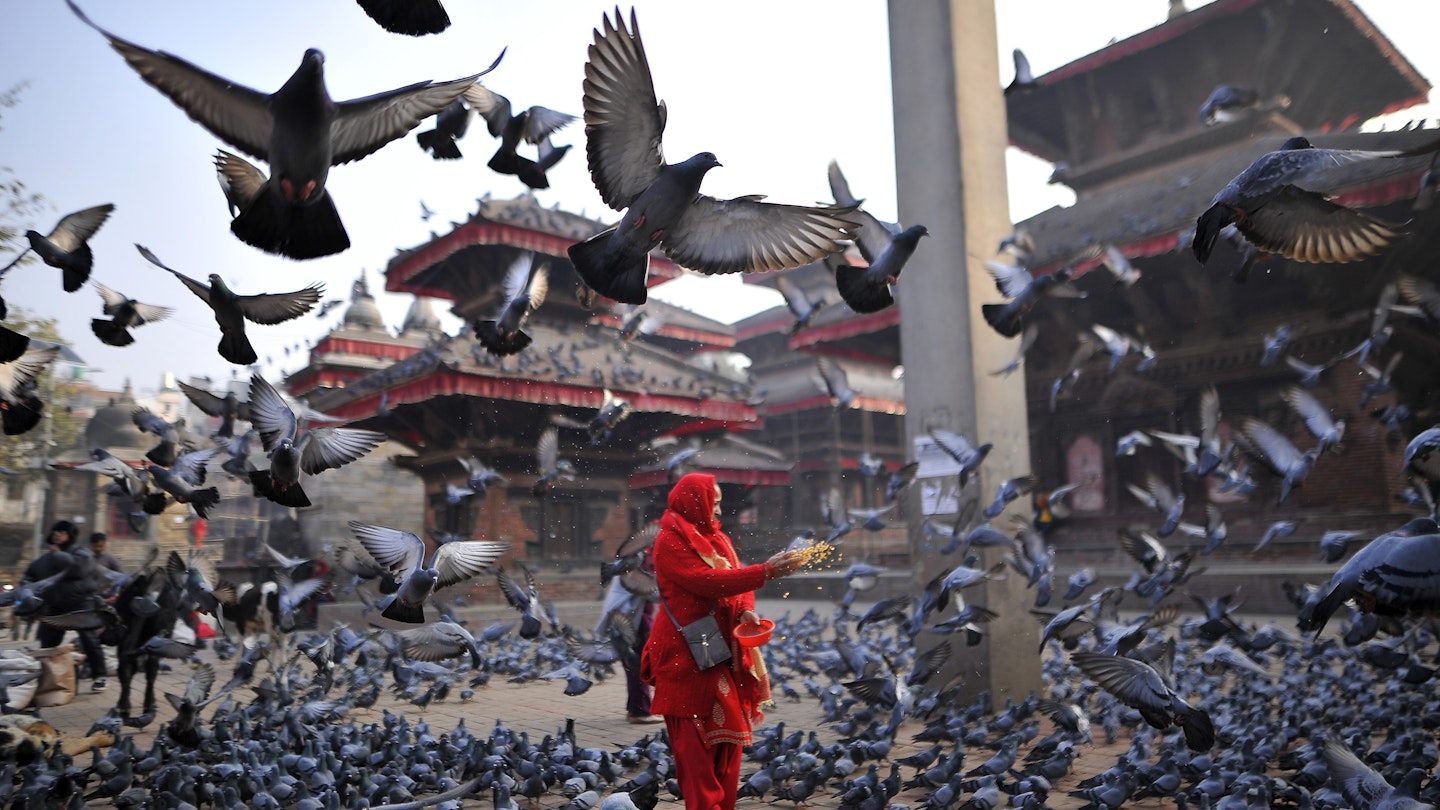
Spring and fall are the peak times for trekking, but the Kathmandu Valley can be explored at any time of year © NurPhoto / Getty Images
From mountain peaks to rolling hills and humid jungles to high-altitude deserts, Nepal offers up a remarkable variety of landscapes for such a small country. This varied terrain is home to a remarkably diverse range of people and cultures, ensuring that the Nepali calendar is packed with festivals, celebrations and special events.
Whether you’re here to trek through the Himalayas, spot rhinos on a jungle safari or explore the centuries-old temples of the Kathmandu Valley, it pays to get the timing right. Most travelers come to Nepal in the spring or fall, when the warm temperatures and clear skies are perfect for trekking and other adventure activities.
Smaller numbers head here in the winter, when the trails are icy and the hills are snowbound, and during the summer monsoon, when travel can be a challenge thanks to the rainy conditions, and views vanish behind dense rainclouds.
Here’s our guide to the best times to visit Nepal for trekking, temple-hopping and more.
The high season (October–November) is the time to trek in perfect weather
Warm, dry weather and cloud-free skies make the October-November period the most popular time to visit Nepal, with ideal conditions for trekking and other outdoor thrills in the hills. The downside is you’ll also find hordes of other travelers, including thousands hiking the trails that snake through the Annapurna massif and the foothills around Mt Everest (Sagarmatha).
The cost of accommodation spikes – particularly in traveler hangouts such as Kathmandu and Pokhara – and rooms get booked up well in advance. So do flights to trekking trailheads, so plan your transport well ahead at this time.
Shoulder season (March–April) is the best time for wildlife-watching
The spring is the second most popular time to visit Nepal, with warm weather and blooming rhododendron forests in the highlands. It’s increasingly hot in the southern Terai region, but the tall grasses that surround rivers and watering holes in Chitwan National Park and Bardia National Park have been hacked back by March, making it easier to spot one-horned rhinos, tigers and other wildlife.

Low season (June–September and December–February) is the best time for cheap deals
Although the timing of the monsoon varies a bit each year, the skies typically fill with rain clouds from June to September. Expect transport disruption, landslides, cloudy skies that block the mountain views and plenty of rain, mud and leeches on the trails. But the lack of fellow travelers, sizable accommodation discounts and lush scenery also makes the monsoon an interesting and inexpensive time to visit the country. Tourist numbers also plummet during the chilly Nepali winter, through some lower-altitude trekking routes remain open and the plains are warm and dry at this time of year.
During the winter, the Kathmandu Valley can be chilly in the evenings, and higher-altitude trekking areas are bitterly cold. Snow may block off some trekking routes and many teahouse and lodge owners close their doors. By contrast, the Terai is pleasantly warm and ripe for exploration. Key events: Magh Sankranti
The start of spring sees rising tourist numbers, as well as temperatures. Late February is a good time to visit the national parks of the Terai, go trekking at lower elevations, and hang out in the temperate traveler town of Pokhara. There are several notable events, including the Hindu festival of Holi, which can also fall in March. It marks the end of winter, symbolizes the triumph of good over evil and sees locals throw around vast quantities of vividly colored powder. Losar – Tibetan New Year, which falls in February or March – sees celebrations at many Buddhist monasteries. Key events: Losar, Holi
As temperatures continue to climb, the trekking areas get busier and higher-altitude trails become passable again, though cloud cover means the mountain views are often obscured at this time of the year. It’s an excellent time for safaris in the Terai. Key events: Seto Machhendranath Festival (can also fall in April), Maha Shivaratri (can also fall in February)
April is the second most popular time to trek, after the peak October–November trekking season. The Terai and other low-lying areas are increasingly hot and sticky, though wildlife-watching opportunities abound. This is a great month to visit Bhaktapur , which celebrates the New Year with Bisket Jatra, when huge wooden chariots carrying temple effigies are hauled through the city center’s meandering streets (celebrations spill over into neighboring Thimi). Key events: Bisket Jatra, Balkumari Jatra, Balaju Jatra
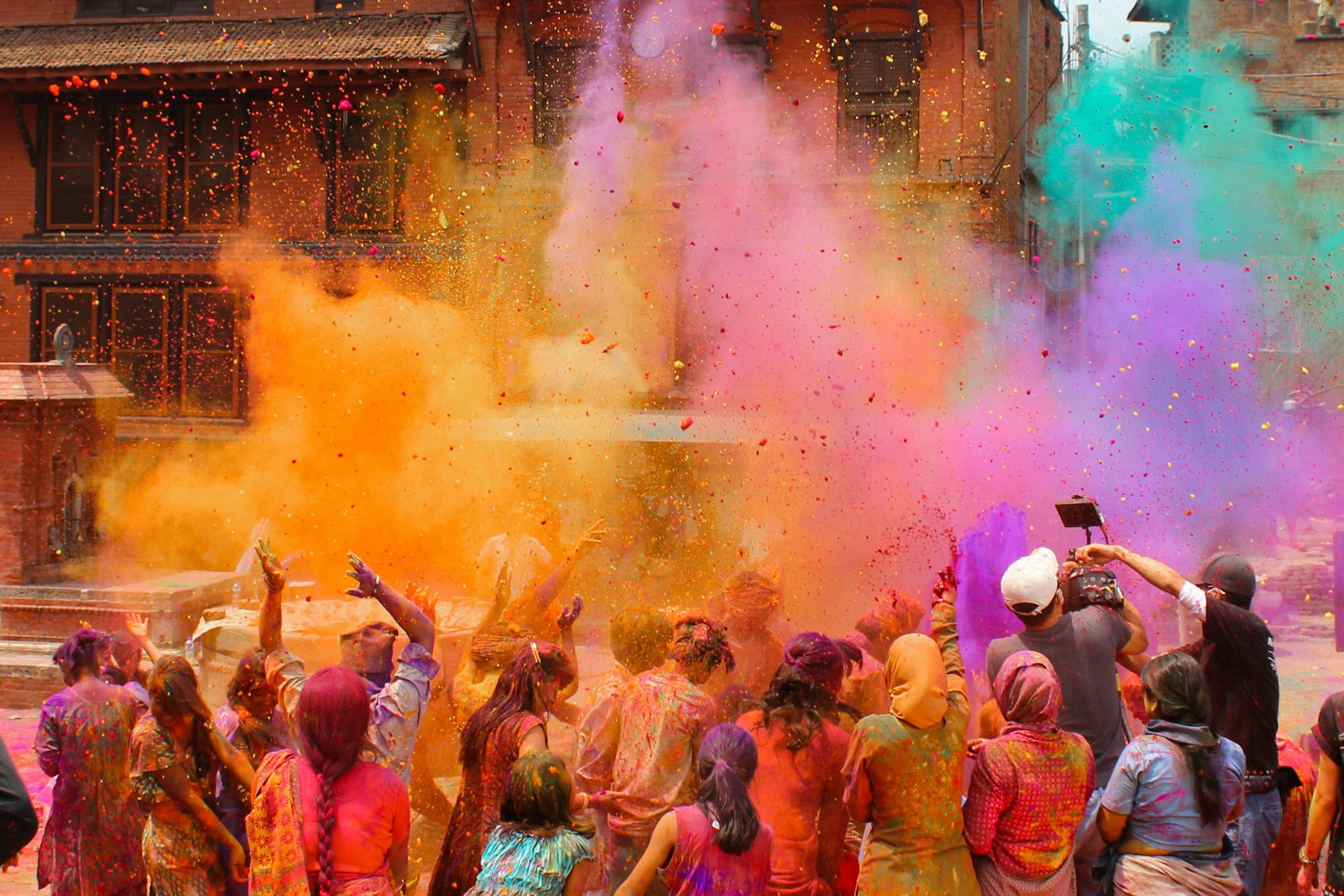
In the run-up to the monsoon, temperatures soar in the Kathmandu Valley, the Terai and lower-elevation trekking areas, and rain showers become increasingly common in the afternoons. However, this is the prime season for mountaineering expeditions to Everest and neighboring peaks because of the favorable conditions at higher elevations.
May is also a good time to spot tigers in Chitwan and Bardia. Looking at the events calendar, Buddha Jayanti sees major Buddhist celebrations in Lumbini , Boudhanath , Swayambhunath and beyond, while the city of Patan hosts its biggest festival, with processions and chariot parades devoted to the deity Rato Machhendranath. Key events: Rato Machhendranath Festival (can also fall in April), Buddha Jayanti (can also fall in April)
The monsoon typically arrives in mid-June, though the start date can shift by several weeks from year to year. Expect swollen rivers, landslides, leeches, and extremely muddy or impassable trails. Tourist numbers plummet during this period, but so do prices. Expect disruption to transport by road and air.
The monsoon continues to pound Nepal, though a few high trans-Himalayan valleys escape the worst of the weather and remain open for trekking. They include Upper Mustang, which has a semi-arid climate and is rich in Tibetan culture.
Heavy rains remain a constant in August. The landscape is lush and farming areas are filled with fresh greenery. This is a busy month for Hindu celebrations, including Krishna Jayanta, the birthday of the Hindu god Krishna, and Teej, a three-day festival devoted to women (which starts at the end of July in 2022). Naga Panchami, celebrating the snake spirits of Nepal's rivers, ponds and temple tanks, is an interesting time to visit Bhaktapur. Key events: Ghanta Karna, Naga Panchami, Janai Purnima, Gai Jatra (can fall in September), Krishna Jayanta, Teej (can fall in July)
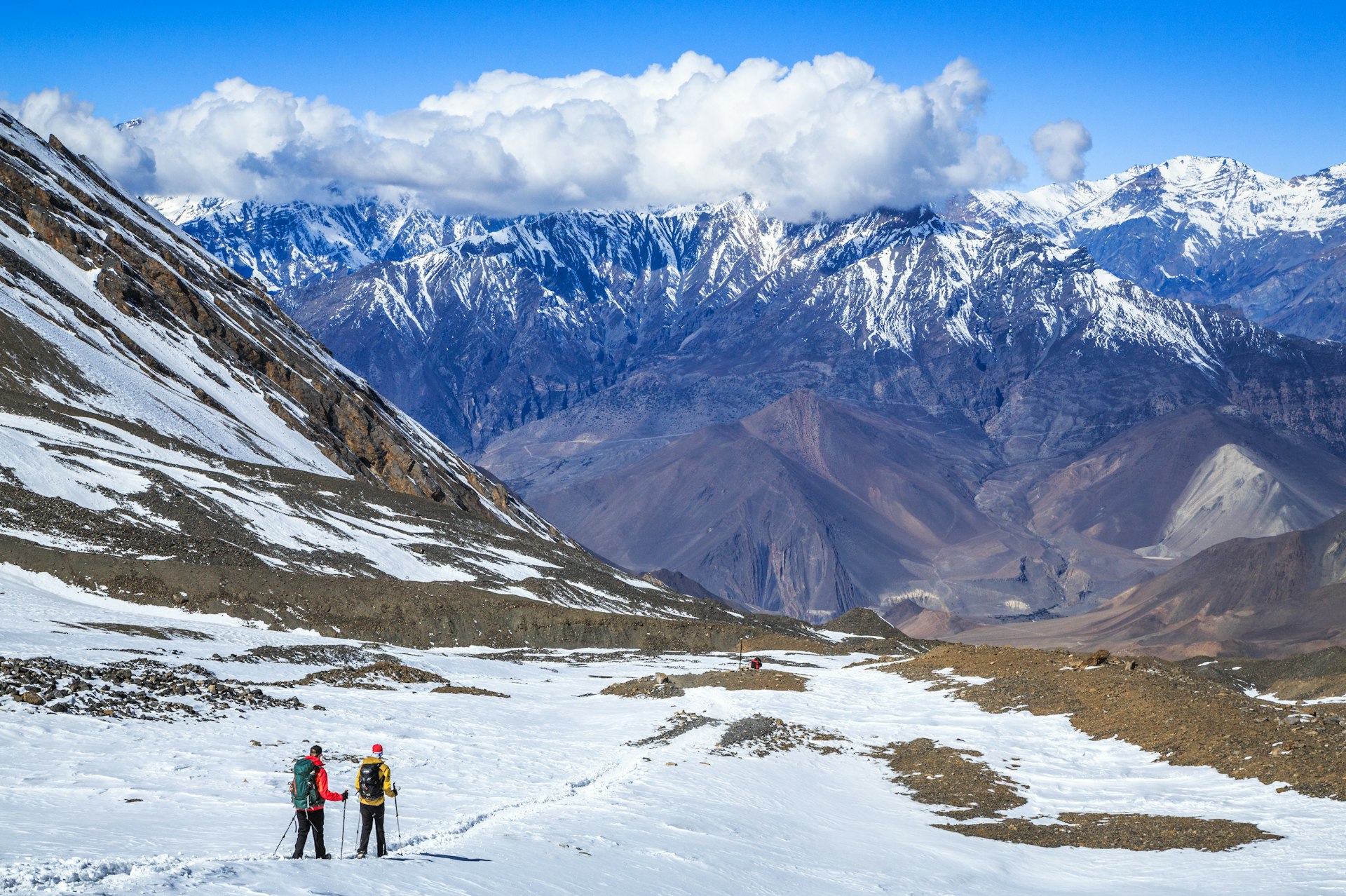
The monsoon generally peters out by mid-September, ushering in clearer skies. Travelers start to return, drawn by the warm temperatures, lush green landscapes and – thanks to high water levels in the rivers – excellent whitewater rafting. This is also the time for one of Kathmandu's biggest festivals, Indra Jatra, in which the Kumari – Kathmandu's 'living goddess' – makes a rare public appearance. Key events: Indra Jatra
The start of the high season in Nepal, with awesome Himalayan vistas, comfortable temperatures and perfect conditions for trekking. Demand for rooms, flight tickets and trekking lodges goes through the roof – book everything well in advance. This is also the time for Nepal’s biggest festival, Dasain, a 15-day celebration of Hindu goddess Durga’s triumph over the buffalo demon Mahisa-sura (it can also fall in September). Tihar (Diwali), the Hindu festival of lights, takes place in October or November, depending on the lunar calendar. Key events: Pachali Bhairab Jatra, Dasain (can also fall in September), Fulpati (Phulpati), Maha Astami, Navami, Vijaya Dashami, Kartika Purnima, Tihar (Diwali, can also fall in November), Newari New Year, Haribodhini Ekadashi
The peak season continues through November, with tourist numbers remaining high and excellent weather for trekking, mountain biking, rafting, paragliding and other outdoor adventures. The fascinating Sherpa festival of Mani Rimdu draws many visitors to the Solu Khumbu region around Everest (in some years it takes place in October). Key events: Kartik Dances, Mani Rimdu (can also fall in October)
Traveler numbers slowly decline as the winter starts to bite. Temperatures fall, snow dumps block high mountain passes and treks to areas such as Everest Base Camp and Annapurna Base Camp become much more challenging. It’s a good month to explore the national parks and religious sites in the Terai, where the weather is still warm. Many people had to Pokhara for the Pokhara Street Festival, a big celebration with cultural performances, parades and street food – book accommodation in the city well in advance. Key events: Bala Chaturdashi, Sita Bibaha Panchami, Pokhara Street Festival
You may also like: The Nepali mountaineer reclaiming the Himalaya How to plan your dream trip to the Himalayas How to trek to Everest Base Camp
Explore related stories
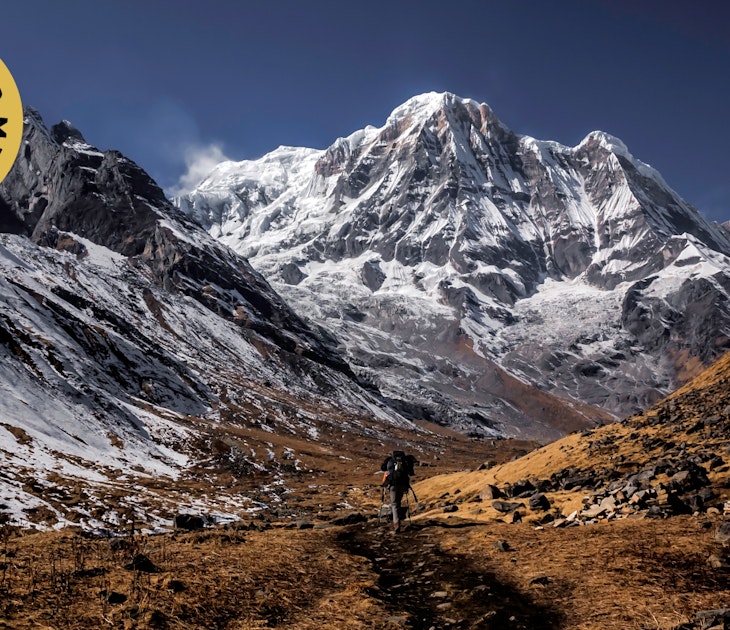
Feb 22, 2024 • 3 min read
Nepal's treks and trails are legendary. Here's how to choose between the Annapurna Circuit or Everest Base Camp.

Jan 11, 2024 • 4 min read
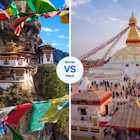
Dec 20, 2023 • 7 min read

Dec 16, 2023 • 12 min read

Oct 15, 2023 • 3 min read
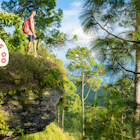
Sep 18, 2023 • 7 min read
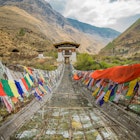
Aug 31, 2023 • 11 min read

Jan 3, 2023 • 7 min read
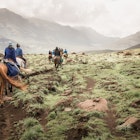
Dec 26, 2022 • 14 min read
- Best time to visit Nepal
Book your individual trip , stress-free with local travel experts
- roughguides.com
- Travel guide
- Itineraries
- Local Experts
- Travel Advice
- Accommodation
Plan your tailor-made trip with a local expert
Book securely with money-back guarantee
Travel stress-free with local assistance and 24/7 support
We chose this trip specifically as we are regular hill walkers and had always wanted to hike in the Everest region of Nepal, but had been put off by tales ...
Nepal attracts visitors keen to explore its diverse scenery – from jungles to high mountain peaks, to discover its fascinating wildlife and delve into its rich cultural heritage.
Weather in Nepal
When is the monsoon in nepal, when is the best time to visit nepal, when is the best time to visit kathmandu, when to go trekking in nepal, festivals and holidays in nepal, nepal festival calendar, dance and culture shows, tailor-made travel itineraries for nepal, created by local experts.

11 days / from 3248 USD
Exclusive Everest
Trek in the Everest region of Nepal's Himalayas, absorbing spectacular views at every step, including Everest rising above the Nuptse Ridge, Lhotse, the iconic peak of Ama Dablam and other Himalayan giants too. Top this off with a shot of warm Nepalese culture for an experience of a lifetime.
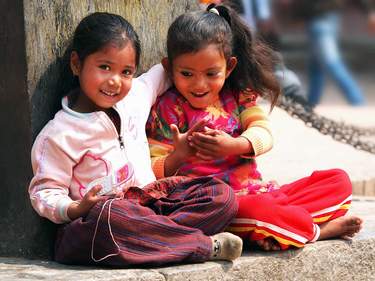
13 days / from 1950 USD
Himalayan Family Adventure
Experience Nepal's hill villages and jungle lowlands as you embark on a family-friendly adventure of a lifetime. Expect mini mountain treks, overnight camps, river rafting and wildlife safaris. Come here for action, stunning mountain scenery and a look around bustling Kathmandu too.

13 days / from 2200 USD
The UNESCO World Heritage Sites of Nepal
Set in the heart of the Himalayas, the landlocked South-Asian country of Nepal is home to a wealth of UNESCO World Heritage Sites. From wild jungles to ancient civilisations, Nepal offers a combination of history, culture and nature; perfect for the most well-seasoned of travellers.
Tailor-made trips for Nepal
The country has much to offer all year round. Differences in the seasons determine where’s good to go at any given time of year – meaning the best time to go to Nepal goes hand-in-hand with the activities on your wishlist.
Nepal is broadly temperate, with four main seasons centred around the summer monsoon from June to September. The build up to the monsoon is stiflingly hot with afternoon clouds and rain showers. The subsequent monsoon brings relief with a drop in temperatures and the heavy rains bring the countryside into bloom.
While winter is mostly clear and stable it can also be seriously cold in trekking areas. Spring sees warm weather, while the months of autumn are clear, dry and fresh after the recent rains.
Each season has its charms and each offers something different to travellers exploring this wonderful Himalayan country.
Nepalis welcome the monsoon, the timing of which may vary by a few weeks every year, but typically begins in mid-June and peters out in the last weeks of September.
During these months, expect to see heavy rains every day, especially in July and August. During June and September, rain is considerably lighter. The good news is that monsoon rains usually only last for a couple of hours and their timing is quite predictable. So it’s still possible to enjoy a great trip to Nepal during the monsoon – all you need to do is choose your destination and itinerary carefully, especially if trekking is top of the list.
The monsoon doesn’t affect all of Nepal equally. Areas in the Himalayan rain shadow, such as Dolpo and Humla in western Nepal and the Mustang region north of Annapurna , are spared the drenching other areas receive. The area of Pokhara is the wettest part of Nepal during monsoon.
The main thing to remember about the monsoon season is that you need to be flexible with your travel plans. In some areas, flights may be delayed or cancelled due to heavy rains. Landslides can happen, causing road closures. Always check with your hotel or guest house before heading on a road trip during monsoon season. They should be able to find the most up-to-date information about road conditions. Bring appropriate waterproof clothing and keep your electronics in waterproof bags if you’re out and about.
And bear in mind, when the rain stops it will still be hot and sunny, so you can still get out and discover the country during the monsoon season.
The best time to visit Nepal depends on what you plan to do while in the country. Fall/autumn and spring are the most popular times to visit for hikers, climbers and mountaineers. At this time, clear skies and pleasant temperatures create the ideal conditions for adventures in the mountains.
Low season (which coincides with the monsoon season) can be an option if you’re on a budget. Firstly, you’re likely to find discounts on accommodation and tours – plus, you won’t have to deal with crowds. Secondly, if you don’t plan on hitting the Himalayas , monsoon season can be a great time to visit.
Spring is a good time to visit Nepal’s valleys and forests. March marks the start of the blooming season in many parts of the country and large areas are covered in bright pink rhododendrons – Nepal’s national flower. This is also a great time to explore centres of Buddhist culture and architecture, such as Tengboche monastery.
You can have a fabulous travel experience in Nepal during the winter. Low humidity and minimal chances of rain make this season great for travel photography and low-altitude hikes.
When to visit Nepal in winter
Winter in Nepal is cold, but cold temperatures are balanced by brilliant sunshine and clear blue skies. It can be a wonderful time for the more experienced trekker to tackle the mountains. Winter weather in Nepal is also perfect for taking photos that capture the country’s stunning natural beauty.
Visiting Nepal in December – February
In terms of the weather, winter is the perfect time to visit Chitwan National Park , a great destination for jungle walks and safari expeditions. The park is home to Bengal tigers, elephants, rhinos, and more than 500 bird species. For the best chances of spotting wildlife, plan your trip around January or February. It’s worth noting, however, that this is one of Nepal’s most popular destinations, so unless you opt for the rainy season for a trip to Chitwan, you’ll be rhino spotting with a whole lot of other visitors. Bardia National Park , northwest of Nepalgunj, is a quieter alternative and offers the best chance to see tigers in Nepal.
The cold season is also a good time to spend a few days exploring Bandipur . This charming town will catch your eye with its traditional wooden architecture, busy markets, and scenic trails. The town is a five-hour drive from Kathmandu , which makes it a convenient getaway if you get tired of the capital’s hectic pace.
Speaking of Kathmandu, winter is a great time to layer up and explore the old city. Low temperatures are the perfect excuse to sit at a café in Thamel and enjoy a glass of Nepali tea, which comes in many varieties, or a cup of Nepal’s own-grown coffee.
The winter months are generally dry and settled, so it can be a good time for trekking – although it is inevitably colder. There can be snow at 2500m – sometimes lower, while conditions can mean passes over 4000m are uncrossable. You’ll also need appropriate gear for cold temperatures and heavy snowfall if trekking at high altitudes. Challenging conditions aside, if you’re an experienced trekker this can be a wonderful time to be on the mountains, with far fewer trekkers venturing out. At lower altitudes it can feel more like spring already.
When to visit Nepal in spring
Spring is one of the most popular seasons to visit Nepal. Snowfall begins to die down around March and makes it easier to move along hiking trails, so this is a fairly busy time in Nepal’s high-altitude destinations, although not as busy as in autumn/fall. But hiking and climbing are not the only things to do in the spring. In general, this is a great time to discover nature in Nepal.
Visiting Nepal in March – May
April is peak time for travellers heading to Everest base camp and the Annapurna circuit . These months are also a popular time to do short treks in the Nepalese countryside, for example at Ghorepani and Poon Hill or Mardi Himal.
But the options don’t end there: you can also explore lesser-visited destinations, such as the tea plantations in Ilam , in eastern Nepal. There’s also Panch Pokhari, a remote high-altitude wetland area home to five glacial lakes. Mountain scenery could also be your stunning backdrop at one of Nepal’s yoga retreats .
By May it is getting hotter and hazier and the weather is somewhat unsettled, with afternoon storms quite common. Go high if you’re trekking and expect rain, especially in the known wetter regions, such as Annapurna and the far eastern parts of the country.
When to visit Nepal in summer
Summer brings the monsoon rains to most of Nepal. At this time of the year, Nepal's climate is hot and humid, so the rains bring a refreshing break from the heat. But although Nepal is generally wet, the mornings are often clear and the countryside is bursting with colour – vivid green forests and rice terraces and bright wildflowers.
What’s more, summer is a pleasant time to go to Nepal if you want to avoid big crowds and peak season prices.
Visiting Nepal in June – August
Early summer is a fantastic time of year to discover Kathmandu’s historical heritage, without the crowds. And if you get caught in the monsoon rain (mid-June to early Sept), you can always wait for it to pass at one of the many cafés and tea houses.
If you’re into landscape or wildlife photography, early June is the time to see the spectacular landscapes at Shey Poksundo (She-Phoksundo) National Park. This is the country’s biggest national park, and as such, it’s home to hundreds of animal and plant species. You may even be able to spot endangered species here, such as Himalayan black bears, snow leopards and blue sheep.
Most people who visit Nepal for its superb trekking opportunities avoid the monsoon. Downpours can render trekking paths too slippery and muddy – plus, there are leeches to contend with! Mountain views may be obscured and general travelling around can prove problematic.
That said, you don’t need to rule out trekking altogether. Avoid wet areas, such as Annapurna and the far east of Nepal and stick to parts where the monsoon is weaker instead. The far west and areas in the Himalayan rain shadow are relatively sheltered. These include Dolpo, Humla and the mystical Mustang region north of Annapurna.
Mustang, home to Kali Gandaki Gorge, which at 8,270 feet (2,520 metres) is the deepest gorge in the world. Other must-sees in the area include villages such as Marpha (also known as the Apple Capital of Nepal) and Kagbeni.
Just remember, if you are travelling to Nepal for trekking expeditions, allow for sudden changes to your itinerary. The rain can affect transport, with delays and cancellations possible. Check road conditions before you venture out and bring waterproof clothing.
It’s as well to bear in mind, when the rain stops it will still be hot and sunny, so you can still get out and discover the country during the monsoon season.
When to visit Nepal in fall/autumn
Fall or autumn is one of the best seasons to travel to Nepal. From October it’s generally dry and skies are clear, which is why climbers and hikers love this season.
Daytime temperatures during the day at high altitudes are pleasantly cool for walking, whereas it’s hotter lower down. At night it’s getting colder high up but it’s unlikely to be too severe.
You’ll also have the chance to enjoy some of Nepal’s biggest festivals , such as Dashain (Desain, or Dashera) and Tihar (Tihaar), important Hindu festivals.
Visiting Nepal in September – November
The period after the monsoon, around September to early October can be unpredictable. If the rains have finished you’ll be blessed with mild temperatures and clear skies, which is why fall or autumn can be one of the best seasons to travel to Nepal. Trekking trails are also quiet – a joy for hikers and mountaineers. If you’re unlucky though, the monsoon may not have quite tailed off yet. In that case it could be hot and sticky and you may get caught in heavy showers – or even snow. Also those stunning mountain views could be shrouded in clouds.
Mid-October to mid-November is the best time for serious climbing and mountaineering in Nepal. But this also means that from September it’s the busiest time in the Himalayas. If you’d rather avoid the crowds, consider less popular destinations and activities:
- Nagarkot is one of the most photogenic places in Nepal. Temperatures may be chilly in the early morning and late evening, but visibility is great and you’ll enjoy panoramic mountain views.
- A multi-day rafting or kayaking trip along Sun Kosi (Sun Koshi) River or Ghaghara River. These trips are a great way of seeing the country and staying active at the same time.
- The Gokyo Lakes trek, where you’ll enjoy dramatic views of some of the world’s highest mountains.
- Cycling in the Kathmandu Valley and southern Nepal. The Terai lowlands are a fantastic destination for a two-wheel holiday. And they’re suitable for cycling beginners too.
Generally speaking, September to November is the best time to visit the city. At this time of the year, you’ll find dry weather, clear skies, and plenty of cultural events. But in fact, there’s no wrong time to visit the city.
Kathmandu weather is relatively mild compared to other parts of the country. The average annual temperature in Nepal’s capital city is a pleasant 18°C. January is the coldest month in Kathmandu (average 9°C). The hottest month is June with average temperatures of 23°C, and the wettest is July with more than 15 days of rain in the month. If you want to avoid rainy weather, November is your best bet.
The Kathmandu Valley is not as affected by monsoon rains as other parts of the country. Some flooding may happen here and there, but it shouldn’t affect your sightseeing plans. Remember that monsoon rains only last a few hours. Plan your activities around this, and you should have no problem visiting Kathmandu during the rainy season.
If you’re interested in high-altitude treks, it’s best to avoid the coldest winter months unless you’re experienced with cold weather conditions and have the necessary gear. Between December and February, heavy snowfall can make some trails and roads dangerous or impossible to cross.
On the other hand, spring – and the period before winter, bring dry and warm weather. These seasons are the best for high-altitude expeditions such as those to Annapurna , Everest , or Langtang .
Trekking in Nepal doesn’t always have to involve great heights. There are many short and lower-altitude hikes you can do around the Kathmandu Valley. A trek on the forested mountain of Phulchowki (Phulchoki) will take you from subtropical vegetation through Nepal chestnut, evergreen oaks and, of course, rhododendron. The unspoiled forest is one of the best places in Nepal for butterfly-spotting and birdwatching.
Or you can choose the Champadevi trek and go on a discovery journey of Tibetan monasteries.
These treks can be done all year round, except for the rainy season. For safety always go with a group when going on walks in the Phulchowki forest, as there have been robberies in recent years. And stick to the trails – anti-personnel mines were laid during the conflict in this region and you can't be 100% sure that they've all been removed.
Read more on trekking : where to go and when, accommodation, remote and restricted areas, organised treks and trekking independently, equipment, safety – and more.
The weather is not the only factor when thinking about when to go to Nepal. This Himalayan nation has a rich history, which can be discovered through its festivals. Nepal’s festival calendar fills every month of the year with colourful celebrations that offer interesting insights into the local culture. Here are some things you should know about festivals in Nepal:
- The exact date varies from year to year. This is because it is calculated based on the lunar calendar.
- Many Nepali festivals last several days. For example, Holi can last for a whole week, and Dashain runs for 15 days.
- Although there are festivals all year round, September to November is considered “festival season”. If you’re interested in the local culture, this is the best time to visit Nepal.
- Nepal’s five biggest festivals are Dashain (Sept/October), Holi (early spring), Nepalese New Year (which usually falls in April), Tihar (November), and Teej (Tij), a women-only celebration usually held in late summer.
- The majority of festivals have spiritual or religious origins. As a visitor, you’re welcome to observe – just remember to be respectful.
- Nepal is a multicultural nation. Some festivals are celebrated all over the country, but others are only observed by certain ethnic groups. Also, the rituals and celebrations can vary from community to community.
- Festivals are a great opportunity to try traditional Nepalese food . Sweet treats are everywhere during the Tihar festival. If you’re around for Holi, you’ll want to try dahi balla , or lentil fritters topped with yogurt and chutney. They’re addictive! Some of these delicacies are only prepared once a year, so don’t miss your chance.
Stumbling onto a local festival may prove to be the highlight of your travels in Nepal – and given the sheer number of them, you’d be unlucky not to. Though most are religious in nature, merrymaking, not solemnity, is the order of the day, and onlookers are always welcome. Festivals may be Hindu, Buddhist, animist or a hybrid of all three.
Hindu events can take the form of huge pilgrimages and fairs ( mela ), or more introspective gatherings such as ritual bathings at sacred confluences ( tribeni ) or special acts of worship ( puja ) at temples. Many see animal sacrifices followed by family feasts, with priests and musicians usually on hand. Parades and processions ( jaatra ) are common, especially in the Kathmandu Valley.
Buddhist festivals are no less colourful, typically bringing together maroon-robed clergy and lay pilgrims to walk and prostrate themselves around stupas (dome-shaped monuments, usually repainted specially for the occasion).
Many of Nepal’s animist peoples follow the Hindu calendar, but local nature-worshipping rites take place across the hills throughout the year. Shamanic rites usually take place at home, at the request of a particular family, although shamans themselves have their own calendar of fairs ( mela ) at which they converge on a particular holy spot. You’ll have to travel widely and sensitively to have the chance to witness a shaman in action.
Jubilant Nepali weddings are always scheduled on astrologically auspicious days, which fall in the greatest numbers during the months of Magh, Phaagun and Baisaakh. The approach of a wedding party is often heralded by a hired band baajaa or brass band and open-air feasts go on until the early hours. The bride usually wears red, and for the rest of her married life she will colour the parting of her hair with red sindur .
Funeral processions should be left in peace. The body is normally carried to the cremation site within hours of death by white-shrouded friends and relatives; white is the colour of mourning for Hindus, and the eldest son is expected to shave his head and wear white for a year following the death of a parent. Many of the hill tribes conduct special shamanic rites to guide the deceased’s soul to the land of the dead.
Knowing when and where festivals are held will not only enliven your time in Nepal, but should also help you avoid annoyances such as closed offices and booked-up buses. Unfortunately, as most are governed by the lunar calendar, festival dates vary annually, and determining them more than a year in advance is a highly complicated business best left to astrologers. Each lunar cycle is divided into “bright” (waning) and “dark” (waxing) halves, which are in turn divided into fourteen lunar “days”. Each of these days has a name – purnima is the full moon, astami the eighth day, aunshi the new moon, and so on. Thus lunar festivals are always observed on a given day of either the bright or dark half of a given Nepali month. The following list details Nepal’s most widely observed festivals, plus a few notable smaller events. For upcoming festival dates, check one of the online Nepali calendars (try visitnepal.com or nepalhomepage.com ).
Magh (Jan–Feb)
Magh (or Makar) Sankranti Marking a rare solar (rather than lunar) event in the Nepali calendar – the day the sun is farthest from the earth – the first day of Magh (Jan 14 or 15) is an occasion for ritual bathing at sacred river confluences, especially at Devghat and Sankhu. The day also begins a month-long period during which families do daily readings of the Swasthani, a compilation of Hindu myths, and many women emulate Parvati’s fast for Shiva, one of the Swasthani stories. For more information, see The Devghat Pilgrimage.
Basanta Panchami This one-day spring festival is celebrated on the fifth day after the new moon in most Hindu hill areas. The day is also known as Saraswati Puja, after the goddess of learning, and Shri Panchami, after the Buddhist saint Manjushri. School playgrounds are decorated with streamers and children have their books and pens blessed; high-caste boys may undergo a special rite of passage.
Phaagun (Feb–March)
Losar Tibetan New Year falls on the new moon of either Magh or Phaagun, and is preceded by three days of drinking, dancing and feasting. The day itself is celebrated most avidly at Boudha, where morning rituals culminate with horn blasts and the hurling of tsampa . Losar is a time for families, and is the highlight of the calendar in Buddhist highland areas, as well as in Tibetan settlements near Kathmandu and Pokhara.
Shivaraatri Falling on the new moon of Phaagun, “Shiva’s Night” is marked by bonfires and evening vigils in all Hindu areas, but most spectacularly at Pashupatinath , where tens of thousands of pilgrims and sadhus from all over the subcontinent gather for Nepal’s best-known mela . Fervent worship and bizarre yogic demonstrations can be seen throughout the Pashupatinath complex. Children collect firewood money by holding pieces of string across the road to block passers-by. Nepalis say the festival is usually followed by a final few days of winter weather, which is Shiva’s way of encouraging the Indian sadhus to go home.
Holi Nepal’s version of the springtime water festival, common to many Asian countries, lasts about a week, and commemorates a myth in which the god Krishna, when still a boy, outsmarted the demoness Holika. During this period, anyone is a fair target for water balloons and coloured powder. It culminates in a general free-for-all on Phaagun Purnima, the full-moon day of Phaagun.
Chait (March–April)
Chait Dasain Like its autumn namesake, the “little Dasain”, observed on the eighth day after the new moon, involves lots of animal sacrifices. The goriest action takes place at goddess temples, such as the one at Gorkha, and in the Kot courtyard near Kathmandu’s Durbar Square, where the army’s top brass come to witness the beheading of numerous buffalo and goats.
Ram Nawami The birthday of Lord Ram is observed on the ninth day after the full moon at all temples dedicated to Vishnu in his incarnation as the hero of the Ramayana, one of the great Hindu epics. By far the biggest and most colourful celebrations take place in Janakpur, where thousands of pilgrims flock to the Ram temple.
Seto Machhendranath Jaatra Kathmandu’s answer to Patan’s Machhendranath Rath Jaatra (see below), this sees a lumbering wooden chariot containing the white mask of the god Machhendranath pulled through the narrow lanes of the old city for four days, starting on Chait Dasain.
Baisaakh (April–May)
Nawa Barsa Nepali New Year, which always falls on the first day of Baisaakh (April 13 or 14), is observed with localized parades. Culminating on Nawa Barsa, Bhaktapur’s five-day celebration, known as Bisket or Biska, is the most colourful, combining religious processions with a rowdy tug-of-war (see Bishanku Narayan ); the nearby settlements of Thimi and Bode host similarly wild scenes.
Machhendranath Rath Jaatra Nepal’s most spectacular festival: thousands gather to watch as the image of Machhendranath, the Kathmandu Valley’s rain-bringing deity, is pulled around the streets of Patan in a swaying, 18m-high chariot. It moves only on astrologically auspicious days, taking four weeks or more to complete its journey. For more information, see Raato Machhendranath’s big ride .
Buddha Jayanti The anniversary of the Buddha’s birth. Enlightenment and death is celebrated on the full-moon day of Baisaakh at all Buddhist temples, but most visibly at Swayambhu, where the stupa is decorated with thousands of lights, and ritual dances are performed by priests dressed as the five aspects of Buddhahood. Processions are also held at the Boudha stupa and in Patan. Curiously, observances at the Buddha’s birthplace, Lumbini, are rather sparse.
Saaun (July–Aug)
Janai Purnima The annual changing of the sacred thread ( janai ) worn by high-caste Hindu men takes place at holy bathing sites throughout the country on the full-moon day of Saaun. Men and women of any caste may also receive a yellow-and-orange “protective band” ( raksha bandhan ) around one wrist, which is then worn until Tihaar, when it’s supposed to be tied onto the tail of a cow. Mass observances are held at Gosainkund, a holy lake high in the mountains north of Kathmandu; Pashupatinath; and most prominently Patan’s Kumbeshwar temple, where priests tie strings and bestow tikas , and jhankri (hill shamans) perform sacred dances.
Gaai Jaatra Newari tradition has it that Yamraj, the god of death, opens the gates of judgement on the day of the full moon, allowing departed souls to enter. Falling on the day after the full moon, Gaai Jaatra honours cows ( gaai ), who are supposed to lead departed souls to Yamraj’s abode. Processions in Kathmandu, Bhaktapur and other Newari towns are both solemn and whimsical: an occasion for families to honour loved ones who have died in the past year, but also for young boys to dress up in fanciful cow costumes or masquerade as sadhus. In Bhaktapur, where the festival is known as Gunhi Punhi and starts a day earlier (coinciding with Janai Purnima), men parade around town in humorous costumes. Satirical street performances are less common nowadays than they once were, but newspapers and magazines publish caustic Gaai Jaatra specials.
Nag Panchami On the fifth day after the new moon, Kathmandu Valley residents quietly propitiate the nag (snake spirits), who are traditionally held to control the monsoon rains and earthquakes, by pasting pictures of nag over their doorways with cow dung and offering milk, rice and other favourite nag foods to the images. Wells are cleaned only on this day, when the nag are believed to be away worshipping their ancestral deities.
Ghanta Karna On the fourteenth day after the full moon, residents of Kathmandu Valley towns celebrate the victory of the gods over the demon Ghanta Karna (“Bell Ears”) by erecting effigies and then burning or tearing them down.
Bhadau (Aug–Sept)
Krishna Astami (also called Krishna Jayanti or Krishna Janmastahmi) Krishna temples such as Patan’s Krishna Mandir throng with thousands of worshippers celebrating the god’s birth on the seventh day after the full moon. Vigils are also held the night before.
Tij The three-day “Women’s Festival”, which starts on the third day after the new moon, sees groups of women clad in red singing and dancing through the streets. Letting their families fend for themselves for once, they start with a girls’ night out, feasting until midnight when they begin a day-long fast. On the second day they queue up to worship Shiva at the Pashupatinath temple outside of Kathmandu, and break the fast and ritually bathe to remove their sins on the final day.
Indra Jaatra A wild week of chariot processions and masked-dance performances in Kathmandu, held around the full moon of Bhadau. On the last day, which is also known as Kumari Jaatra, beer flows from the mouth of an idol in Durbar Square. For more information, see Indra Jaatra: eight days of pomp and partying .
Yartung A swashbuckling fair held at Muktinath, in the Annapurna trekking region, centred around the full-moon day and featuring horse racing, dancing, drinking and gambling.
Asoj (Sept–Oct)
Dasain (or Dashera) Although Hindu in origin, Nepal’s longest and greatest festival is enthusiastically embraced by members of almost all religious and ethnic groups. It stretches over fifteen days, from the new moon to the full moon of Asoj, with the liveliest action taking place on the seventh, ninth and tenth days. Normally falling just after the summer rice harvest is in, Dasain is a time for families to gather (buses get extremely crowded with homeward-bound passengers), children to be indulged (with kites, makeshift swings and miniature ferris wheels), and animals to be sacrificed (roads and markets all over the country are filled with doomed goats). On the first day, known as Ghatasthapana, people plant jamura (barley) in a kalash (sanctified vessel), representing Durga, Dasain’s honoured goddess; the seedlings will be picked and worn in the hair on the tenth day. Devotees congregate at local goddess temples throughout the next nine nights. A separate festival, Panchali Bhairab Jaatra, features late-night processions between the Bhairab’s shrine and the Kumari Ghar in Kathmandu, and coincides with the fourth and fifth days of Dasain. On the seventh day, Fulpati, a bouquet of sacred flowers ( fulpati ) is carried in a procession from Rani Pokhari to the Hanuman Dhoka Palace in Kathmandu. The ninth day, Navami, begins at midnight with tantric buffalo sacrifices inside the forbidden Taleju (a form of Durga) temples of the Kathmandu Valley; throughout the day, animals are ritually beheaded publicly in the Kot Courtyard near Kathmandu’s Durbar Square and in every village and city of Nepal; their blood is sprinkled on tools, vehicles and even aircraft to impart Durga’s shakti (power). These rituals commemorate Durga’s slaying of the demon Mahisasur, and more generally, the triumph of good over evil. Bijaya Dasami, the “Victorious Tenth Day”, celebrates Ram’s victory over the demon Ravana – with Durga’s help. Various processions and masked dance troupes ply the streets and families visit their elders to receive blessings and tika .
Kaattik (Oct–Nov)
Tihaar (Diwali near India) Lasting for five days, starting two days before the new moon, the “Festival of Lights” is associated with Yamraj, the god of death, and Lakshmi, the goddess of wealth and good fortune. On the first day, Nepalis set out food on leaf plates for crows, regarded as Yamraj’s messengers; on the second, they honour dogs as Yamraj’s gatekeepers, giving them tika , flower garlands and special foods; and on the third they garland cows both as the symbol of Lakshmi and as the soul’s guide to Yamarj’s underworld. The festival’s most picturesque event, Lakshmi Puja, comes on the evening of the third day, when families throughout Nepal ring their homes with oil lamps, candles or electric lights to guide Lakshmi to their homes so she can bless them with prosperity for the year. Trusting in her, many Nepalis gamble on street corners, and student groups make the rounds singing “Diusire”, a form of musical fundraising. Firecrackers have also become a big part of the fun for kids. To Newars, the fourth day is known as Mha Puja (“Self-Worship”), an occasion for private rituals, and also their New Year’s Day, marked by banners, well-wishing and motorcycle parades in the Kathmandu Valley’s three main cities. On the fifth day, Bhaai Tika, sisters recall the myth of Jamuna, who tricked Yamraj into postponing her brother’s death indefinitely, by blessing their younger brothers and giving them flower garlands, tika and sweetmeats.
Chhath Coinciding with the third day of Tihaar, this festival honours Surya, the sun god, and is one of the most important for the Maithili-speaking people of the eastern Terai. Chhath is celebrated most ardently in Janakpur, where women gather by ponds and rivers to greet the sun’s first rays with prayers, offerings and ritual baths.
Mani Rimdu Held at Tengboche and Chiwong monasteries in the Everest region around the full moon of the ninth Tibetan month (usually Oct/Nov), this colourful Sherpa masked dance dramatizes Buddhism’s victory over the ancient Bon religion in eighth-century Tibet. A similar event is held in May or June at Thami.
Mangsir (Nov–Dec)
Ram-Sita Biwaha Panchami As many as 100,000 pilgrims converge on Janakpur for this five-day gathering, beginning on the new moon of Mangsir. The highlight is the re-enactment of the wedding of Ram and Sita, the divine, star-crossed lovers of the Ramayana, one of the great Hindu epics. Janakpur’s stature as a holy city rests on its having been the location of the original wedding.
Nepali music is inseparable from dance , especially at festivals. Nepali dance is an unaffected folk art – neither wildly athletic nor subtle, it depicts everyday activities such as work and courtship. Each region and ethnic group has its own traditions, and during your travels you should get a chance to join a local hoedown or two, if not a full-blown festival extravaganza. Look out, too, for the stick dance of the lowland Tharus, performed regularly at lodges around Chitwan National Park. Staged culture shows in Kathmandu and Pokhara are a long way from the real thing, but they do provide a taste of folk and religious dances. Most troupes perform such standards as the dance of the jhankri (shaman-exorcists still consulted by many hill-dwelling Nepalis); the sleeve-twirling dance of the Sherpas; the flirting dance of the hill-dwelling Tamangs; perhaps a formal priestly dance, to the accompaniment of a classical raga (musical piece); and at least one of the dances of the Kathmandu Valley’s Newars.
Folk music ( git lok ) is an important aspect of life in Nepal, particularly during festivals and holidays. The maadal double-ended drum plays a focal role, often accompanied by the harmonium, murali (bamboo piccolo) or bansuri (flute). A group member will strike up a familiar verse, and everyone joins in on the chorus.
Folk music traditions vary among the country’s many ethnic groups, but the true sound of Nepal can be said to be the soft, melodic and complex music of the hills. Jhyaure , the maadal -based music of the western hills, is the most popular. Selo , the music of the Tamangs, has also been adopted by many other communities. Meanwhile, the music of the Jyapu (Newari farmers) has a lively rhythm, though the singing has a nasal quality.
The improvised, flirtatiously duelling duets known as dohori , traditionally performed by young men and women of the hill tribes, have become the soundtrack of modern Nepal. You’ll hear them on personal radios, mobile ringtones and bus music systems, as well as in the dedicated rodi ghars (nightlife restaurants), and will soon come to recognize the repetitive back-and-forth, him-then-her structure, with wailing flutes and unison choruses punctuating each verse.
While folk music is by definition an amateur pursuit, there are two traditional castes of professional musicians : wandering minstrels ( gaaine or gandarbha ) who play the sarangi (a four-stringed fiddle), and damai , members of the tailor caste who serve as wedding musicians.
The Rough Guides to Nepal and related travel guides
In-depth, easy-to-use travel guides filled with expert advice.

Travel advice for Nepal
From travel safety to visa requirements, discover the best tips for traveling to Nepal
- Culture and Etiquette in Nepal
- Eating and drinking in Nepal
- Getting around Nepal: Transportation Tips
- Travel Health Nepal
- Travel Tips Nepal for planning and on the go
- How to get to Nepal
Find even more inspiration here

- Travel Tips
written by Rough Guides Editors
updated 17.05.2021
Ready to travel and discover Nepal?
Get support from our local experts for stress-free planning & worry-free travels.
- Where to stay
- Travel advice

- 2 Weeks for Couple
- 2 Weeks for Family
- Thailand Lantern Festival
- Indonesia(Bali)
- South Korea
- China (HK, Taiwan)
- Itinerary Ideas
- Asia Highlights Travel Reviews
- Thailand Travel Reviews
- Vietnam Travel Reviews
- Cambodia Travel Reviews
- Japan Travel Reviews
- Myanmar Travel Reviews
- China Travel Reviews

- Best Times to Visit Nepal —Guide to Nepal Weather and Travel Experience
Quick Facts
- When Is the Best Time to Visit Nepal
Visiting Nepal in Spring — from March to May
Visiting nepal in summer — from june to august, visiting nepal in autumn — from september to november, visiting nepal in winter — from december to february.
From March 14, 2022, Nepal has eased its entry requirements. All international visitors can go to Nepal whether you are vaccinated or not .
Nepal has distinct climates related to its elevations with its subtropical jungle in the south and the world's highest peaks in the north. We suggest you also learn about the seasonal variations before going there so that you can choose the optimum time to visit.
Nepal's climate is divided into two seasons: the rainy season (May to August) and the dry season (September to April). October to December is the best time to visit Nepal as the skies are generally clear and the views are spectacular. However, the best time to visit Nepal depends on what you plan to do while in the country.
- The ideal time to visit Kathmandu is from September to November when numerous cultural events are held.
- Late September to early December is the best time for photography in Nepal.
- October to April is the best time to see wildlife. Chitwan National Park is one of the most famous national parks in Nepal.
- The best time to visit Pokhara is September to November.
- The autumn months (October and November) are the most popular for trekking to Everest Base Camp.
When Is the Best Time to Visit Nepal?
The best time to visit Nepal is from October to December as the weather is stunning during this period. The average temperature is 22℃ (72°F) by day and 12℃ (54°F) at night.
Trekking, jungle safaris, and outdoor activities are all enjoyable during this period. Dashain is the most auspicious festival in October. Domestic flights are in high demand during the lead-up to it so it is advised to book your tour as early as possible.
March and April are also good times to visit Nepal as the weather gets warmer and the plants come alive with new growth. Most parts of Nepal are hot in these months. Kathmandu and Pokhara can reach 28℃ (82°F). The average temperature is 25℃ (77°F) by day and 10℃ (50°F) at night.
Trekking is ideal during this period, including the route to Everest Base Camp. Many hotels charge a peak season rate. The Holi festival falls in March and is a great opportunity for photos. Domestic flights between Kathmandu and Pokhara can fill up quickly.
January and February are recommended after the months mentioned above. It can be very cold, especially at night. The average temperature is 18℃ (64°F) by day and 2℃ (36°F) at night.
Enjoy viewing the snowcapped mountains. It's a good time to look at the wildlife in the jungles of Chitwan in the south of Nepal as these lowlands experience moderate temperatures. The Losar and Basant Panchami festivals are often, but not always, held in January. Many hotels offer special winter rates. This is a good time for travelers who are looking for deals.
The monsoon season is from May to September . Heat and humidity levels increase and the clouds make the mountain views seem mysterious. Some travelers don't enjoy this time in Nepal but it doesn't mean you can't travel during this period. The average temperature is 29℃ (84°F) by day and 18℃ (64°F) at night.
City sightseeing is interesting at this time. Getaways to Pokhara, Kathmandu, and the surrounding regions are welcome possibilities. During these months, you are likely to find discounts on accommodation and tours.
Here are the average temperatures and rainfall amounts for Nepal:
Discover real reviews of Highlights Travel Family 's best-rated service across trusted platforms.
Spring is one of the most popular seasons to visit Nepal as temperatures climb steadily and the weather tends to be more stable. The valleys are fabulously beautiful, especially after all the ice has thawed and the flowers have bloomed. This is a great time to go trekking in Nepal.
Spring Weather
March: Temperatures on the Terai can be above 32°C (90°F) while Kathmandu and Pokhara can reach 26°C (79°F). Areas at high altitude are still cold, especially at night.
April: Most parts of Nepal are pretty hot. Kathmandu and Pokhara have temperatures reaching 32°C (90°F). The Terai can often be hot.
May: It is very hot in hillside cities – usually above 32°C (90°F) in the daytime – and even hotter on the Terai.
What to See
Spring is a peak season for trekking. Cross high passes, such as the Annapurna Circuit (ABC), which is located in the middle section of the Himalayas. This is the most popular trekking tour in Nepal. Starting at Nayapul, just a short drive from Pokhara, the standard route requires 10–11 days to reach Annapurna Base Camp and return to Pokhara.
During the tour, you will see fantastic glaciers and the peak of Hiunchuli.
This trek is not difficult and any fit person can manage it, even if you do not have any hiking experience.
Th e Everest Base Camp Trek (EBC) is consistently regarded as the finest in the world and is suitable for most trekkers with a medium level of fitness. The adventurous trek begins with a half-hour flight from Kathmandu to Lukla, which offers the best views of the Himalayas.
Start there and go through dense green forests to reach Everest Base Camp. It takes about 12 days to return to Lukla.
During the trek, you'll visit mountain villages and have the chance to visit some of the most renowned monasteries in the country, such as Tengboche Monastery.
Festivals and Events
- Holi : This an exciting festival of color celebrated in Kathmandu in early March. People smear colored powder on each other and throw colored water and water balloons — it's a great opportunity for photos.
- Bisket Jatra : This is Nepali New Year, which is a major holiday in Nepal. Celebrations take place at Bhaktapur in Kathmandu and children offer sweets, fruits, and gifts to their mothers to show their respect and gratitude.
What to Avoid
- Kathmandu is particularly dusty in March because it's the time for crop burn-offs. It's best to head out of the city.
- To avoid the crowds, choose a lesser-known trek or visit in early/late spring.
- Mountain views can be obstructed by haze and low clouds.
Insider Tips
- It is recommended to wear pants, T-shirts, and breathable clothes.
- In the evenings, wear suits, jackets, a windbreaker, and other warm clothes.
- Domestic flights to popular destinations, especially between Kathmandu and Pokhara, can fill up quickly. Early booking is suggested.
- The Holi festival takes place across many cities and smaller towns in March so it's very crowded.
The arrival of the monsoon season sees fewer tourists in Nepal, especially in July, making it the least visited month of the year. The weather is hot and humid and it tends to rain on most days.
Although July is not an ideal month for many outdoor activities, traveling in the city is a good idea, such as visiting temples, museums, bars and restaurants, and shops. Kathmandu and Pokhara are the best places to go in summer.
This season has great deals, which is ideal when traveling on a budget.
Summer Weather
June: The monsoon season sweeps up from India.
July: The monsoon season has truly arrived. Temperatures stay over 26°C (79°F) in Kathmandu and Pokhara. High-altitude areas are somewhat cooler but with heavy rainfall.
August: This is the final full monsoon month so temperatures remain hot and humid around the country.
It is the perfect time to discover Kathmandu's historical heritage without the crowds. The Pashupatinath Temple is a must-see attraction. It is one of the representative Hindu temples in Kathmandu,and is where Hindus hold open-air cremations.
You can visit the world's largest round pagoda in Kathmandu: Boudhanath . It was founded in the 6th century and was the center of Tibetan Buddhism in Nepal. It has one of the largest spherical stupas in Nepal.
Kathmandu Durbar Square is the most famous square in Kathmandu and a good place to see marvelous temples. There are more than 50 temples in the square — the whole scene is like an open-air museum filled with ancient architecture.
Pokhara is divided into two parts: the old part and the modern part. It is recommended to visit the old part because it is the same as it was before the development of tourism. Old houses are everywhere and the shops and stalls are full of local life. You can experience the locals' simple, slow pace of life.
In Pokhara, you can enjoy the stunning view of the beautiful Fewa Lake from a lakeside café.
If trekking is your main purpose in Nepal, the Mustang Trek to the north of Pokhara is a better choice in the monsoon season. It lies within the rain shadow of the Himalayas so it doesn't experience the monsoon-like weather that falls on the rest of the country.
- Rato Machchhendranath : Celebrations are held all over Nepal for the August full moon, especially in Patan in Kathmandu, which includes dancing with shamans. Thousands of devotees gather in Kathmandu Durbar Square.
- It's not a good time for epic mountain views and photography.
- It's not a good time for treks because the monsoon weather makes overland travel difficult. With wet weather, landslides, and muddy or flooded roads, many mountain regions become inaccessible.
- It is not advised to arrange a tight schedule as there is a larger possibility of flight delays and cancelations.
- Long pants and long-sleeved shirts are suggested to protect you from leeches in some areas.
- Take an umbrella as the weather is usually too warm to wear a rain jacket.
- With flight delays and cancelations, check your flights before you venture out.
- Visit the Pashupatinath Temple in the morning to see cremations or visit in the evening from 6pm to see the aarti (worship with fire).
The monsoon rains last until mid-September but it only rains every few days. The sky generally remains clear with fresh air, providing amazing views all around, making October and November lovely times to visit Nepal.
This is the most popular season for trekking in the Himalayas and provides you with opportunities to join in with various festivals.
Autumn Weather
September: The humidity subsides by late September. Temperatures reach 20°C (68°F) and 26°C (79°F) in Kathmandu and Pokhara but is higher on the Terai. Mountainous areas, as always, are cooler.
October: It rains occasionally but not very much. Temperatures in Kathmandu and Pokhara seem comfortable with a high of 20°C (68°F) and a low of 26°C (79°F). The Terai is still a little bit hotter.
November: It is quite warm in many parts of Nepal although temperatures can be cold at night. Daytime temperatures are in the low 20°C (68°F) in Kathmandu and Pokhara. Temperatures become more comfortable in the Terai.
As well as the Annapurna Base Camp and Everest Base Camp treks, which are popular in spring and autumn, the Langtang Valley trek is recommended. It is 62 kilometers north of Kathmandu. The Langtang Valley is the third of the great trekking areas in Nepal after the two treks mentioned above.
Starting at Syapru Besi, an 8 to 9-hour drive from Kathmandu, the moderately difficult trek can be done within a week.
During this cultural trek, you will see several ancient Buddhist monasteries, beautiful valleys, and majestic views of mountains and will pass through local villages where there will be a good chance to interact with the local Tamang people.
- Dashain : which always falls in late October, is the most important festival for Nepali Hindus. It is a celebration of good prevailing over evil. Local people gift goats, ducks, chickens, eggs, and coconuts to the goddess Durga. People return to their hometowns and stay with their families during the 15-day holiday.
- Tihar : is Nepal's second most important festival. It is normally held in mid-November. The celebrations last for 3 days. Local people light up their houses with oil lamps and candles. From the highland, you can see the beautiful scenery of the whole of Kathmandu.
- Chhath : is the most important festival observed in the Terai region and it falls on the seventh day after Tihar. Devotees fast and make offerings to the sun by gathering at riverbanks. The best place to experience the festival is in central Kathmandu.
- If you prefer to avoid crowds, don't travel during Dashain.
- Popular trekking trails are crowded — please get advice from your travel consultant to select the best trail.
- There are higher costs due to the higher demand during this peak time.
- In the daytime, a light jacket or cardigan is advisable in case it gets cold. You can also buy beautiful pashmina scarves everywhere to help keep you warm by covering your shoulders.
- At night, a warm jacket is suggested. If you are trekking, please take hiking shoes and casual clothes.
- Book your domestic flights as early as possible. If traveling during Dashain, flights fill up very quickly in the lead-up to the festival.
- If you wish to get some trekking tips, please ask your travel consultant.
Winter isn't the peak season but there are still clear, sunny skies and mild temperatures in many places. There is practically no rain throughout the country during this season. The pleasant aspect of traveling in this season is that there are fewer visitors.
Winter Weather
December: The skies are clear. In Kathmandu, average temperatures reach highs of 20°C (68°F) and lows of 4°C (39°F). Fog is common in the Terai. Daytime temperatures reach as high as 28°C (82°F) in Chitwan. Trekking trails in the Himalayas are much colder.
January: This is the coldest month of the year. In Kathmandu, daytime highs can reach 18°C (64°F). Pokhara stays a bit warmer than Kathmandu. Daily temperatures in Chitwan can still be as high as 25°C (77°F). Snowfall in the Himalayas makes trekking trails much harder.
February: The climate varies in this month. In Kathmandu, the average high is 20°C (68°F) with Pokhara being a few degrees warmer. The Terai can be very hot with temperatures reaching as high as 32°C (90°F).
If you are an adventurer who wishes to experience the harsh Himalayan winter, see the above-mentioned hiking trails without any crowds.
This is the best time for spotting wildlife in Chitwan National Park. It is unique for its wildlife safaris, bird watching, and tiger tracking activities in Nepal. The elephant safari there should not be missed!
The jeep safari is another popular program that you can enjoy during your stay in Chitwan. Compared to other safaris around the globe, Chitwan National Park has a wide range of wild animals.
Winter is also a great time to relax in Kathmandu. For example, you can sit in a café in Thamel and enjoy a glass of Nepali tea or a cup of Nepalese coffee.
Spending a few days in Bandipur is a good idea in the cold season. This is a unique, charming town with traditional wooden architecture, markets, and temple trails. It is about 5 hours' drive from Kathmandu.
If you enjoy hiking, it's also a good time for short treks in the Kathmandu Valley and a Nagarkot sunrise trek. Near Kathmandu, this is one of the best destinations for a short trek. It is considered a popular place for a sunrise view of the Himalayas. The trek can be done in one day.
- Losar : is the first day of the new year and is celebrated by Nepalese minority people. The best place to experience Losar is to seek out a Tibetan monastery in Kathmandu. The minority people will wear traditional dress for Losar.
- Trekking in the high mountainous areas can be risky.
- It is not advised to reach higher elevations due to the occasional snowfall.
- A down jacket is recommended as it can still be fairly warm during the day, even in winter.
- As it is the off-season period, you don't have to book too far in advance.
Explore Nepal with Asia Highlights
Nepal isn't easy to travel around without the help of English-speaking guides. We will be happy to provide you with worry-free tours.
Our professional travel consultants will help you select the destinations, flights, accommodation, and best things to do. Check out the following links learn more about our tours and submit your tour inquiry.
Why Asia Highlights (10,000+ reviews & 98.8% 5-star rating)
- Save Your Time:
- Less research, more enjoyment!
- Real-time 1V1 expert planning
- Maximize Your Flexibility:
- Personal local guide and ride
- Explore at your own pace
- Celebrate Your Journeys:
- Specially-crafted family adventures
- Celebrate milestones with style!
- 9-Day Classic Nepal Tour
- 14-Day India, Nepal, and Bhutan Tour
- 11-Day India and Nepal Tour
- 14-Day Nepal and Bhutan Tour
- How to Plan a Trip to Nepal
- How to Plan an India and Nepal Trip 2024/2025
- Plan an Awesome Trip to India, Bhutan and Nepal (6 Tips)
- Nepal Weather in January
- Nepal Weather in February 2024
- Nepal Weather in March
- Nepal Weather in April
- Nepal Weather in May
- Nepal Weather in June
- Nepal Weather in July
Get Inspired with Some Popular Itineraries
At Asia Highlights, we create your kind of journey — your dates, your destinations, at your pace. You can have any trip tailor made for your travel.
More Travel Ideas and Inspiration
Sign up to our newsletter.
Be the first to receive exciting updates, exclusive promotions, and valuable travel tips from our team of experts.
Why Asia Highlights
Where can we take you today.
- Middle East
- African Safari
- Travel Agents
- Our Differences
- Privacy Policy
Address: Building 6, Chuangyi Business Park, 70 Qilidian Road, Guilin, Guangxi, 541004, China
Best time to visit Nepal: A comprehensive guide by a local
When is the best time to visit Nepal? As someone who lives in this breath-taking country, I often get asked this question by eager travellers looking to explore the wonders of Nepal. Well, you’re in luck! In this article, we’ll dive into the best time to visit Nepal and provide you with all the essential information you need to plan your trip.
As someone who has been living in Kathmandu for three years now, I have experienced all kinds of weather, all seasons and sadly also all levels of pollution. So, let’s embark on this journey together and discover when you should pack your bags and head to this Himalayan paradise. Trust me, as a local, I know a thing or two about the perfect time to visit!
Table of Contents
Travelling to Nepal?
- Read my guide on Kathmandu Airport and learn how to get from Kathmandu Airport to thamel.
- If you are trekking you will need good gear such as trekking shoes and sleeping bags .
- I would recommend booking an Everest flight ! They are absolutely amazing.
- Book a cooking class. I can personally recommend the cooking class by Kalpana . She is so sweet!
- Don’t forget to visit the UNESCO heritage sites when in Kathmandu!
Why is it important to understand the best time to visit Nepal?
Well, there are a few reasons. First and foremost, Nepal has a monsoon season that can make trekking dangerous and downright unpleasant. Secondly, there’s a pollution season which means life in the Kathmandu Valley isn’t much fun, and visibility is severely impacted. So, let’s break it down and find out when you can enjoy Nepal at its finest.
Monsoon Season: June to September
During the monsoon season, Nepal experiences heavy rainfall, making trekking trails slippery, muddy, and prone to landslides. While the rain brings life to the lush green landscapes, it also means that those epic mountain views are often hidden behind a veil of clouds. So, if you’re planning to conquer those Himalayan peaks or simply enjoy some scenic strolls, this might not be the best time to visit Nepal.
Pollution Season: December to February

As winter sets in, the Kathmandu Valley experiences a significant increase in air pollution. The combination of vehicle emissions, dust from construction sites, and smoke from burning wood and waste creates a thick smog that blankets the city. This not only affects the quality of life for locals but also impacts visibility for travellers looking to enjoy the stunning vistas. So, if you’re hoping for crystal-clear views and easy breathing, you might want to avoid visiting during these months.
Keep in mind that even during March, April and May you can experience heavy pollution in the Kathmandu Valley. Due to global warming, Nepal has had a pretty bad run of forest fires. In the three years that I have lived in Nepal, there have been two years where Kathmandu was the most polluted place on earth in April due to these forest fires.
The Best Time to Visit Nepal: October to November and March to May
Now that we’ve covered when not to visit, let’s talk about the best time to visit Nepal! The months of October to November and March to May offer the most favourable conditions for travellers. During these periods, the weather in Nepal is generally clear and stable, providing excellent visibility for those jaw-dropping mountain panoramas.
In October and November, you’ll experience pleasant temperatures and minimal rainfall – perfect for trekking and exploring Nepal’s diverse landscapes. Plus, the post-monsoon season means that the countryside is lush and vibrant, making for some truly stunning photo opportunities.
From March to May, the temperatures begin to rise, and the rhododendron forests burst into a riot of colour. This is also an ideal time for wildlife enthusiasts, as many of Nepal’s national parks come alive with activity during these months.
Visiting Nepal in different seasons
So, when is the best time to visit Nepal? The answer ultimately depends on your preferences and what you want to experience during your trip. Each season offers its own unique charm and challenges, but as a local, I can confidently say that October to November and March to May are the most favourable times to explore this enchanting country. Whether you’re an avid trekker, a culture enthusiast, or a wildlife lover, visiting Nepal in different seasons will undoubtedly leave you with unforgettable memories and a deep appreciation for this Himalayan gem. So, pack your bags, and let’s embark on this adventure together!
Spring in Nepal (March-May): A Blooming Adventure
Spring in Nepal (March-May) is hands down the best time to visit Nepal for trekking . The weather is pleasant, the skies are clear, and the landscapes are bursting with vibrant colours. So, if you’re looking to embark on an unforgettable trekking adventure, look no further than springtime in Nepal. Let’s dive into the specifics of what makes this season so special.
Best trekking trails during spring:
Spring in Nepal offers a plethora of trekking options for both seasoned trekkers and beginners alike. Some of the best trekking trails during spring include:
- Everest Base Camp Trek
- Annapurna Circuit Trek
- Langtang Valley Trek
- Manaslu Circuit Trek
- Upper Mustang Trek
Weather conditions and temperatures during spring in Nepal:
During spring in Nepal, the weather is generally stable, with daytime temperatures ranging from 15°C to 25°C (59°F to 77°F) at lower altitudes. As you ascend higher, the temperatures can drop to below freezing at night, so it’s essential to pack warm layers for those chilly evenings.
Popular attractions and activities:
Aside from trekking, spring in Nepal offers a variety of attractions and activities for travellers to enjoy:
- Witness the spectacular rhododendron blooms in the forests
- Explore the ancient cities of Kathmandu, Bhaktapur, and Patan
- Visit the UNESCO World Heritage Sites , such as Pashupatinath Temple and Boudhanath Stupa
- Experience the vibrant Holi Festival (Festival of Colours) in March
- Go on a wildlife safari in Chitwan National Park or Bardia National Park
Spring in Nepal is undoubtedly the best time to visit Nepal for trekking and exploring the UNESCO sites in this incredible country. With its pleasant weather, clear skies, and an abundance of trekking trails, there’s no better time to lace up your hiking boots and embark on the adventure of a lifetime.
Summer in Nepal (June – August): Embracing the Monsoon Magic
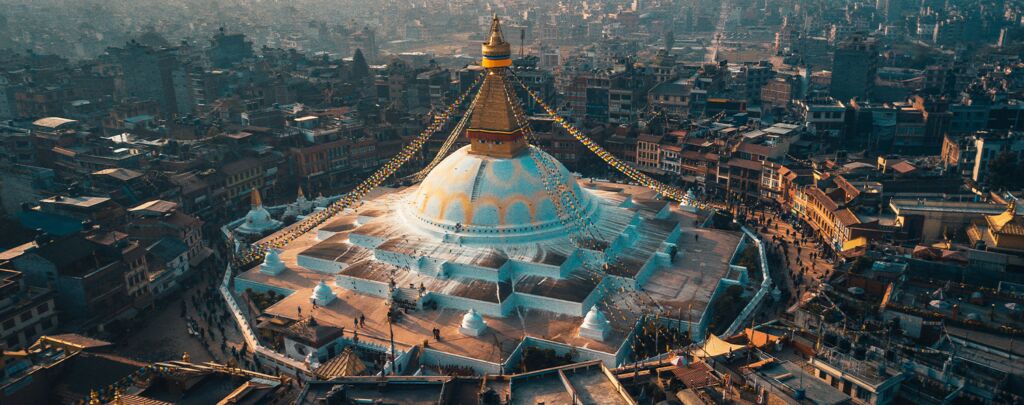
Summer in Nepal is a time when the monsoon rains take centre stage and transform the country into a lush, green paradise. While the monsoon season may not be the ideal time for trekking, it does offer its own unique charm and opportunities for exploration. So, let’s dive into what makes summer in Nepal worth considering for your next adventure.
Best places to visit in Nepal during summer:
Despite the monsoon rains, there are still plenty of amazing places to visit in Nepal during summer. Some of these include:
- Mustang and Dolpo regions : These areas lie in the rain shadow of the Himalayas, making them ideal destinations for trekking during the monsoon season.
- Pokhara : This picturesque lakeside city offers a more relaxed atmosphere and is perfect for enjoying leisurely boat rides on Phewa Lake.
- Lumbini : The birthplace of Lord Buddha, Lumbini is a significant pilgrimage site and offers a peaceful retreat from the bustling cities.
- Chitwan National Park : The monsoon season is an excellent time for wildlife spotting, as many animals are more active during this time.
Best treks in Nepal during monsoon:
While many trekking trails may be off-limits due to the rains, there are still some fantastic treks to consider during the monsoon season:
- Lower Dolpo Trek
- Nar Phu Valley Trek
Advantages and challenges of visiting during monsoon season:
Visiting Nepal during the monsoon season comes with its own set of pros and cons. Here are some advantages and challenges to consider:
Advantages:
- Fewer tourists, meaning less crowded trails and attractions
- Lush, green landscapes
- More affordable accommodation and travel options
Challenges:
- Unpredictable weather conditions
- Slippery and muddy trekking trails
- Travel within Nepal by bus can take twice to three times as long due to mudslides
- Limited visibility for mountain views
Monsoon time in Nepal:
The monsoon season in Nepal typically lasts from June to August (sometimes as late as September), with the heaviest rainfall occurring in July.
Weather conditions and temperatures:
During the monsoon season, expect hot and humid conditions with temperatures ranging from 20°C to 30°C (68°F to 86°F) in the Valley. Heavy rainfall is common, particularly in the afternoons and evenings .
While summer in Nepal may not be the most popular time to visit due to the monsoon rains, it still offers plenty of opportunities for exploration and adventure . With fewer tourists, lush landscapes, and unique trekking options , summer in Nepal is definitely worth considering for those who don’t mind embracing the monsoon magic. Just don’t forget to bring your raincoat!
Autumn in Nepal (September-November): A Himalayan Haven

Autumn in Nepal (September-November) is hands down the best time to visit Nepal for trekking and exploring the majestic Nepal Himalayas . With clear skies, pleasant temperatures, and stunning landscapes, it’s no wonder that autumn is a favourite among travellers. So, let’s dive into the specifics of what makes this season so special.
Best trekking trails during autumn:
Autumn in Nepal offers a plethora of trekking options for both seasoned trekkers and beginners alike. Some of the best trekking trails during autumn include:
Weather conditions and temperatures during autumn in Nepal:
During autumn in Nepal, the weather is generally stable, with daytime temperatures ranging from 15°C to 25°C (59°F to 77°F) at lower altitudes. As you ascend higher, the temperatures can drop to below freezing at night, so it’s essential to pack warm layers for those chilly evenings.
Aside from trekking, autumn in Nepal offers a variety of attractions and activities for travellers to enjoy:
- Explore the ancient cities of Kathmandu , Bhaktapur , and Patan
- Experience the vibrant Dashain and Tihar festivals, celebrated throughout the country
- Enjoy paragliding , mountain biking , or white-water rafting in Pokhara
Autumn in Nepal is undoubtedly the best time to visit Nepal for trekking and exploring the incredible Nepal Himalayas . With its pleasant weather, clear skies, and an abundance of trekking trails, there’s no better time to lace up your hiking boots and embark on the adventure of a lifetime.
Winter in Nepal (December-February): A Chilly Adventure
Winter in Nepal may not be the most popular time to visit, but it certainly has its charms. With fewer tourists, you can enjoy a more peaceful and authentic experience. Plus, the crisp, clear skies (once you make your way out of the Kathmandu valley and into the mountains) offer some of the best mountain views you’ll ever witness. So, let’s explore what winter in Nepal has to offer.
Mustang Nepal in winter
The Mustang region, also known as the “Forbidden Kingdom,” is a hidden gem that’s perfect for winter exploration. Unlike other parts of Nepal, Mustang is located in the rain shadow of the Himalayas, meaning it receives significantly less precipitation and pollution. This makes it an ideal destination for trekking during the winter months when other trails may be snowbound or inaccessible.
Best places to visit in Nepal during winter
While some areas may be off-limits due to snow and cold temperatures, there are still plenty of amazing destinations to explore during winter in Nepal. Some of the best places to visit include:
- Pokhara : A lakeside city with stunning mountain views and a plethora of adventure activities
- Chitwan National Park : A wildlife haven where you can spot rhinos, elephants, and even Bengal tigers
- Lumbini : The birthplace of Lord Buddha and a UNESCO World Heritage Site
- Nagarkot : A hill station with some amazing hotels nearby offering panoramic views of the Himalayas, including Mount Everest
Winter trekking trails
While some trails may be closed due to snow, there are still several fantastic winter trekking trails available for those looking for a chilly adventure. Some popular options include:
- Ghorepani Poon Hill Trek
- Tamang Heritage Trail
- Everest Panorama Trek
Winter in Nepal temperatures
During winter in Nepal, temperatures can vary greatly depending on your altitude. In lower regions like Kathmandu and Pokhara, daytime temperatures can range from 9°C to 12°C (48°F to 54°F), while night-time temperatures can drop to near freezing. In higher altitudes, temperatures can plummet well below freezing, so it’s essential to pack appropriate clothing and gear .
While winter in Nepal may not be the most popular time to visit due to temperatures and pollution in Kathmandu valley, it offers a unique and peaceful experience for those willing to brave the colder temperatures. With stunning mountain views once outside Kathmandu, fewer tourists, and a variety of trekking trails and destinations to explore, winter in Nepal is a season worth considering for your next adventure.
Visiting Nepal from India and Tibet

If you’re planning a trip to Nepal from India or Tibet, you might be wondering when the best time to visit is. Well, worry not, my fellow adventurers! I’ve got you covered. In this section, we’ll explore the best time to visit Nepal from India and Tibet, so you can make the most of your journey.
Best time to visit Nepal from India
When it comes to visiting Nepal from India, the ideal time is during the months of October to November and March to May . These periods offer the most favourable weather conditions, making it perfect for exploring Nepal’s diverse landscapes and engaging in various outdoor activities.
Here’s a quick breakdown of what you can expect during these months:
- October to November: Clear skies, pleasant temperatures, and minimal rainfall make this an excellent time for trekking and sightseeing. The post-monsoon season also means that the countryside is lush and vibrant – perfect for photography enthusiasts.
- March to May: This period offers stable weather conditions and excellent visibility for those awe-inspiring mountain views. The temperatures are also pleasant, making it comfortable for trekking and other outdoor activities.
Best time to visit Nepal from Tibet
If you’re planning a trip to Nepal from Tibet, the best time to visit is also during the months of October to November and March to May . These months offer clear skies, stable weather conditions, and pleasant temperatures – ideal for trekking, sightseeing, and immersing yourself in Nepal’s rich culture.
The best time to visit Nepal from India and Tibet is during the months of October to November and March to May. These periods offer the most favourable weather conditions, allowing you to fully experience the beauty and charm of this Himalayan paradise.
Best time to visit Tibet from Nepal
So, you’ve decided to embark on an epic adventure to the mystical lands of Tibet and Nepal. But when is the best time to visit these enchanting destinations? Fear not, intrepid traveller! I’m here to help you navigate the ins and outs of planning your trip, ensuring you experience the very best that Tibet and Nepal have to offer.
When planning your journey from Nepal to Tibet, timing is everything. The ideal months to visit Tibet are from April to October, with two distinct periods offering unique experiences:
- April to June: Springtime in Tibet is a sight to behold. With blooming flowers, lush greenery, and comfortable temperatures, this is an excellent time for sightseeing and exploring the region’s stunning landscapes. Plus, you’ll have the chance to witness the Saga Dawa Festival, a significant Buddhist event held in May or June.
- September to October: As the monsoon season comes to an end, Tibet’s skies clear up, offering breath-taking views of the majestic Himalayas. This period is perfect for trekking and photography, as well as attending the lively Shoton Festival in September.
However, it’s worth noting that July and August can be quite rainy in Tibet, so it’s best to avoid these months if you’re not a fan of getting drenched.
Celebrating Nepalese Festivals

Nepalese festivals are a vibrant and colourful showcase of the rich culture and traditions of this beautiful country. If you’re lucky enough to visit Nepal during one of these celebrations, you’re in for a treat! So, without further ado, let’s dive into the world of Nepalese festivals and discover when they’re usually celebrated.
• Dashain : This is the most significant and longest festival in Nepal, usually celebrated in September or October. It’s a time for family reunions, feasting, and blessings from elders.
• Tihar : Also known as the Festival of Lights, Tihar is often celebrated in October or November. The five-day festival honours various animals and the goddess of wealth, Laxmi. Look out for Kukur Tihar (the festival of dogs) and Laxmi Puja.
• Holi : The Festival of Colours is a fun-filled event celebrated in March. People throw coloured powders and water at each other to mark the victory of good over evil.
• Teej : This women-centric festival takes place in August or September. Women fast, pray for marital bliss, and dance in their finest red attire.
• Janai Purnima : Celebrated in August, this Hindu festival involves changing the sacred thread worn by Brahmin men and offering prayers to Lord Shiva.
• Buddha Jayanti : This significant Buddhist festival commemorates the birth, enlightenment, and death of Lord Buddha. It’s celebrated in April or May.
• Shivaratri : Dedicated to Lord Shiva, this festival takes place in February or March. Devotees fast, pray, and visit Shiva temples throughout the night.
• Gai Jatra : The Cow Festival is held in August or September to honour deceased family members. Colourful processions featuring cows or cow effigies fill the streets. Look out for the dancing demons and the cute kids with cow masks!
• Indra Jatra : This eight-day festival in September honours the god of rain, Indra. It features chariot processions, masked dances, and the Kumari – Nepal’s living goddess. Head out to Indra Chowk on the first day!
• Bisket Jatra : Celebrated in April, this New Year festival in Bhaktapur involves chariot processions, tug-of-war contests, throwing around orange powder, and plenty of feasting.
• Maghe Sankranti : This January festival marks the start of warmer days and longer daylight hours. People take ritual baths, visit temples, and enjoy festive foods.
• Chhath Puja : Dedicated to the sun god, this November festival involves fasting, offering prayers at sunrise and sunset, and taking ritual baths in rivers or ponds.
• Lhosar : The Tibetan New Year is celebrated in February or March with colourful decorations, traditional dances, and family gatherings.
• Ghode Jatra : The Horse Racing Festival takes place in March or April, featuring horse races, acrobatics, and other exciting performances.
• Maha Shivaratri Jatra : This grand procession in February or March honours Lord Shiva with chariots, music, and dance performances.
Mani Rimdu : This Buddhist festival in October or November showcases colourful masked dances and rituals performed by monks.
- Nag Panchami: Nag Panchami is a Hindu festival dedicated to the worship of snakes that is celebrated in July or August. During this festival, devotees offer milk and honey to live snakes and worship them as they believe that snakes are protectors of their family and livestock. Look out for the drawings being sold on the street and in markets for a few rupees. People normally hang these on their door!
Visiting Popular Nepalese Destinations
Embarking on a journey to the breath-taking country of Nepal? Lucky you! With its stunning landscapes, rich culture, and warm-hearted locals, Nepal is truly a traveller’s paradise. But when is the best time to visit certain popular destinations in Nepal? Fret not, dear wanderer, for I am here to guide you through the ins and outs of planning your trip to popular Nepalese destinations.
Best time to visit Kathmandu, Nepal
Kathmandu is the vibrant capital city of Nepal! When is the best time of year to visit Kathmandu Nepal, you ask? Well, the ideal months to explore this bustling city are from October to November and March to May . These periods offer:
- Pleasant temperatures
- Clear skies
- Minimal rainfall
Perfect for sightseeing, shopping, and indulging in the city’s rich culture and history.
Best time to visit Muktinath Temple, Nepal
Muktinath Temple, a sacred pilgrimage site for both Hindus and Buddhists, is best visited during the months of May to June and September to November . During these times, you can expect:
- Stable weather conditions
- Clear visibility
- Comfortable temperatures
Ideal for trekking and soaking in the spiritual atmosphere of this revered temple.
Best time to visit Mustang, Nepal
The enchanting region of Mustang is best explored during the months of May to September . This period offers:
- Dry weather conditions
- Warm temperatures
Perfect for trekking, exploring ancient monasteries, and immersing yourself in the unique culture of this remote area.
Best time to visit Annapurna Base Camp (ABC), Nepal
For those seeking adventure at Annapurna Base Camp, the best time to visit ABC Nepal is during the months of October to November and March to April . These months provide:
- Clear mountain views
Ideal for trekking and capturing those awe-inspiring panoramas.
Best time to visit Pokhara in Nepal
The picturesque city of Pokhara is best visited during the months of October to November and March to May . During these times, you can expect:
- Pleasant weather
- Stunning views of the Annapurna range
Perfect for boating on Phewa Lake, paragliding, and exploring the city’s many attractions.
Best time to visit Everest Base Camp in Nepal
For those daring souls venturing to Everest Base Camp, the best time to visit Everest Base Camp Nepal is during the months of April to May and September to November . These periods offer:
- Manageable temperatures
Ideal for trekking and experiencing the thrill of being at the foot of the world’s highest peak.
Best time to visit Mardi Himal in Nepal
Mardi Himal, a hidden gem in the Annapurna region, is best explored during the months of March to May and September to November . During these times, you can expect:
- Lush landscapes
Perfect for trekking, photography, and enjoying the serene beauty of this off-the-beaten-path destination.
In conclusion, the best times to visit Nepal are:
- October to November: Ideal for trekking, sightseeing, and photography, thanks to clear skies, pleasant temperatures, and minimal rainfall.
- March to May: Perfect for enjoying stable weather conditions, excellent visibility, and comfortable temperatures for outdoor activities.
Now that you’re armed with the knowledge of the best times to visit Nepal , it’s time to embark on your unforgettable journey! Whether you’re trekking through the breath-taking Himalayas, exploring ancient temples, or immersing yourself in the rich culture and traditions, there’s no doubt that Nepal has something for everyone.
So, don’t hesitate – pack your bags, grab your camera, and get ready to discover the diverse beauty of Nepal throughout the year. Happy travels!
Best time to visit Nepal FAQ
What is the cheapest time of year to go to nepal.
The cheapest time to visit Nepal is during the off-season, from June to September, as hotels and airlines offer discounts due to the rainy season.
How many days in Nepal is enough?
You can experience the best of Nepal in 14-21 days, including time in Kathmandu, Pokhara, and trekking in the mountains.
What is the hottest month in Nepal?
The hottest month in Nepal is May, with an average temperature of 28°C in the lowlands and 16°C in the mountains.
What is the off season of Nepal?
The off season in Nepal is from June to September, during the monsoon season, when heavy rains and landslides make travel difficult.
Which season is best for Pokhara?
The best time to visit Pokhara is from September to November, when the skies are clear and the weather is dry, making it perfect for trekking and outdoor activities.
Which is the coolest month in Nepal?
The coolest month in Nepal is January, with an average temperature of 9°C in the lowlands and -4°C in the mountains.
Which month rains a lot in Nepal?
Nepal receives the most rainfall from June to August, during the monsoon season, with an average of 1,000-1,500 mm of rain.
Which is colder, Kathmandu or Pokhara?
Pokhara is slightly warmer than Kathmandu, with average temperatures ranging in kathmandu from 11-23°C, while Pokhara’s temperatures range from 16-27°C.
Can you see snow in Pokhara?
Snowfall is rare in Pokhara, but you can see snow-capped mountains in the distance, including the Annapurna range.
What is the coldest city in Nepal?
The coldest city in Nepal is Jumla, located in the western Himalayan region, with average temperatures around -3°C in January.
Which is the hottest city in Nepal?
The hottest city in Nepal is Biratnagar, located in the southern Terai region, with temperatures reaching up to 40°C in May and June.
Is there snowfall in Muktinath?
Yes, there is snowfall in Muktinath, particularly during the winter months from December to February.
Which month is best for Muktinath?
The best time to visit Muktinath is from September to November, when the skies are clear, and the weather is dry, making it easier to trek to the temple.
Which places in Nepal is best for snowfall?
The high-altitude regions of the Himalayas, including Everest Base Camp, Annapurna Circuit, and Langtang, receive heavy snowfall during the winter months.
Leave a Comment Cancel Reply
You must be logged in to post a comment.

Change location
- Call us tomorrow from 9am 01993 838 925 01993 838 315 or
- REQUEST A QUOTE
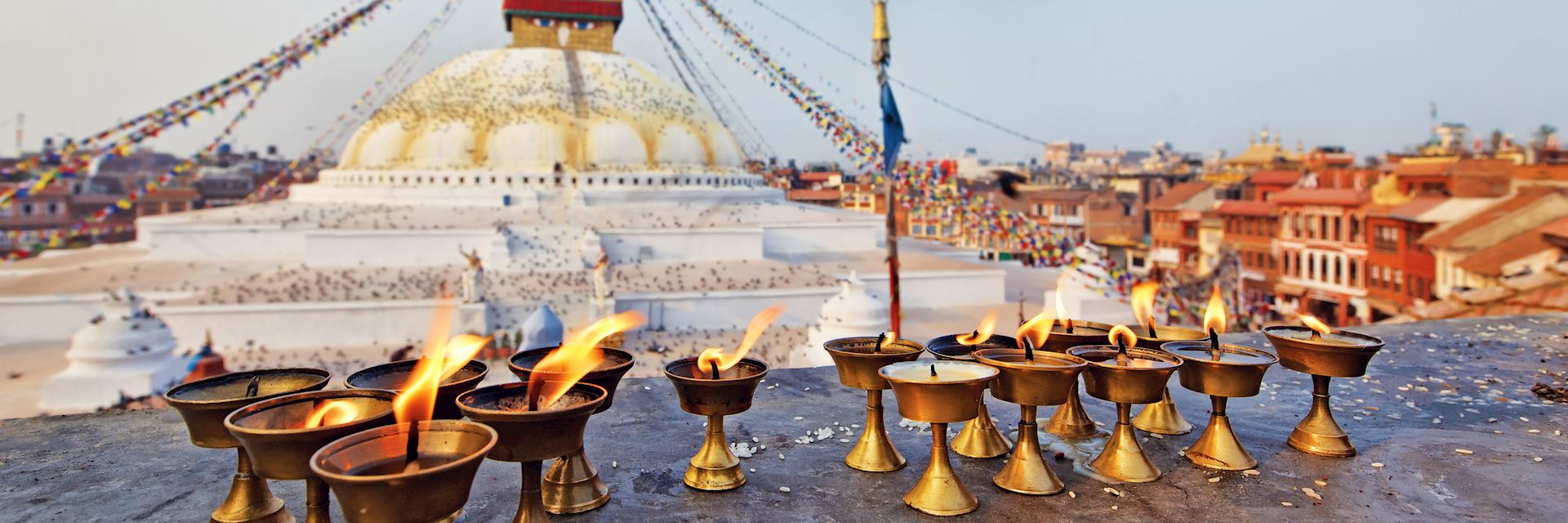
When is the best time to visit Nepal?
- Month-by-month
The best time to visit Nepal is between October and December, when the skies are a clear blue and the views spectacular. The weather remains dry until about April, with temperatures varying between regions.
January and February can be very cold, especially at night, with average temperatures of 6°C in Namche Bazaar. But you’ll be rewarded with clear skies, incredible panoramas and quieter trekking trails, as there are fewer visitors. High altitude trekking is not recommended at this time.
Late spring in May is a beautiful time to travel, with the rhododendrons bursting into bloom. Heat and humidity levels build, with temperatures climbing to 35°C in Chitwan National Park.
The monsoon season arrives in June and lasts until the end of August, with the clouds obscuring the glorious mountain views. The heavy rain and landslides make travel difficult and many places close down, so the country is best avoided at this time.
Nepal celebrates festivals all year, so there is often a festival or pilgrimage taking place. Ask your specialist for more details, as the dates often change from year to year.
- Make an enquiry
- Request a brochure
Month-by-month guide for travelling in Nepal

Visiting Nepal in December - February
From late December through to February, Nepal's weather is pleasant during the day but temperatures drop significantly at night-time; especially in the mountains. January is the coldest month, but fewer visitors results in quieter sightseeing opportunities. Many hotels and lodges offer fireplaces, blankets and hot water bottles to keep you cosy.
Events & Festivals
- Wildlife in Nepal (October to April): Nepal's wildlife is worth exploring during the drier months. Chitwan is one of the better protected national parks, offering great sightings of rhinos, monkeys, birds and even elephants.
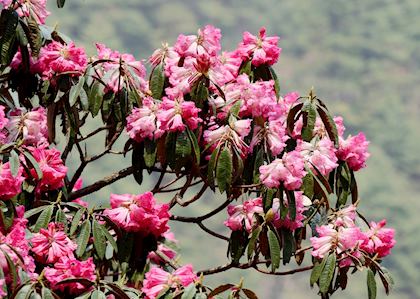
Visiting Nepal in March - May
March marks the beginning of spring, when temperatures increase and rhododendrons bloom. Days are longer during March and April, making them perfect for trekking, although temperatures are still cool at night. It's a popular time to travel, so plan well in advance. May is one of the warmest months of the year but will bring cloud and showers before the monsoon arrives.
- Holi festival is becoming more well-known around the world, but it isn't just an Indian festival; it's celebrated across the cities and towns of Nepal every March too.
- Rhododendron season (March and April): Nepal’s landscapes change colour in the spring as a range of rhododendron species spread across the hills and mountains, changing colour according to altitude from reds to pinks and whites.
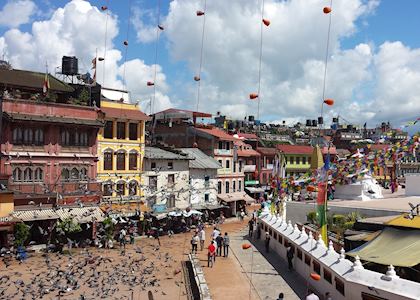
Visiting Nepal in June - August
The monsoon season occurs from June through to August. Days are warm (up to 30°C), wet and with high humidity. Due to Nepal’s topography, rains often occur at night, resulting in beautiful morning scenery. Although we’d advise against trekking at this time of year, city sightseeing is still possible and quieter than peak periods.

Visiting Nepal in September - November
As the monsoon dissipates in September, Nepal welcomes beautiful clear skies, fresh air and incredible views. October and November are two of the best months to visit as dry days make trekking easier and offer good visibility. The verdant landscapes following the rains are ideal for photographers.
Nepal Climate Guide
Why travel with audley.
- 100% tailor-made tours
- Fully protected travel
- Established for over 25 years
- 98% of our clients would recommend us

Travel advice
Practical tips for travelling to Nepal, from social protocols to guidance on money matters, with a link to the latest FCDO travel advice.

Request our brochure
Covering all seven continents, The World Your Way shows you how you can see the world with us. It features trip ideas from our specialists alongside hand-picked stays and experiences, and introduces our approach to creating meaningful travel experiences.
Trip ideas and travel guides for exploring Nepal
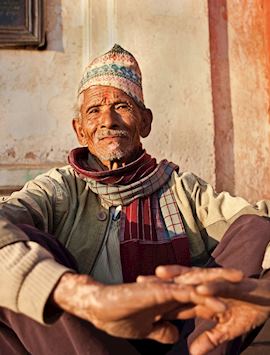
Kathmandu Valley discovered
12 days from £2,595pp

Discover Nepal
14 days from £3,670pp
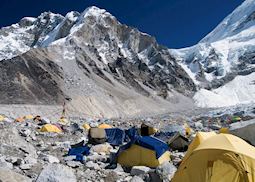
Nepal trekking: walking on the roof of the world
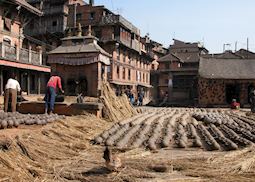
There’s more to Nepal than trekking: our highlights guide
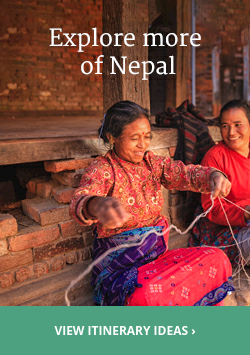
Travel Guide
Best Time to Visit Nepal – A Seasonal Guide
By Suraj Katwal
Updated On Nov 4, 2022
This article will help you to find the best time to visit Nepal throughout the year. The best season to visit Nepal is Autumn Season (Late September – Late December).
Visitors want to travel when the weather is clear and favorable for magnificent scenery.
In this guide, you will learn about weather with different seasons as well as the average temperature in Kathmandu valley.
When is the Best Time to Visit Nepal ?
We’ll explore more, which is the best time to visit Nepal. Please refer to the following tips before planning your trip to visit Nepal.
Weather in Nepal
Nepal is a landlocked country. Topographically, Nepal is divided into three regions, the Himalayas, the Middle Hills, and the Terai. Depending upon the altitude, the weather varies.
The Himalayan Region lies in the Northern part of the country above 3,353 m in altitude. The Himalayan Region almost covers 15% of the whole area.
The World’s Highest Peak, Mount Everest lies in this region. The Himalayan Region is cold and famous for trekking. Everest Base Camp, Annapurna Base Camp is the favorite destination for high-altitude treks.
Hilly Region lies in the southern part, which almost covers 68% of the total area. Its altitude ranges above 600 meters. The Hilly region is less cold than the Himalayan Region.
The Terai region is usually hotter as the altitude varies from 300 meters to 600 meters. It covers around 17% of the total land.
Related Reading: What Time is it in Nepal?
1. Spring Season (March-May)
In this season, the temperature is softly warm at low altitudes while moderate at higher altitudes. This is the best time to Visit Nepal if you want to explore the beauty of this beautiful country.
It’s time for the flowers to blossom as you can see beautiful red rhododendrons – the national flower of Nepal above 2000 meters. You can explore the beauty of Mountain Views.
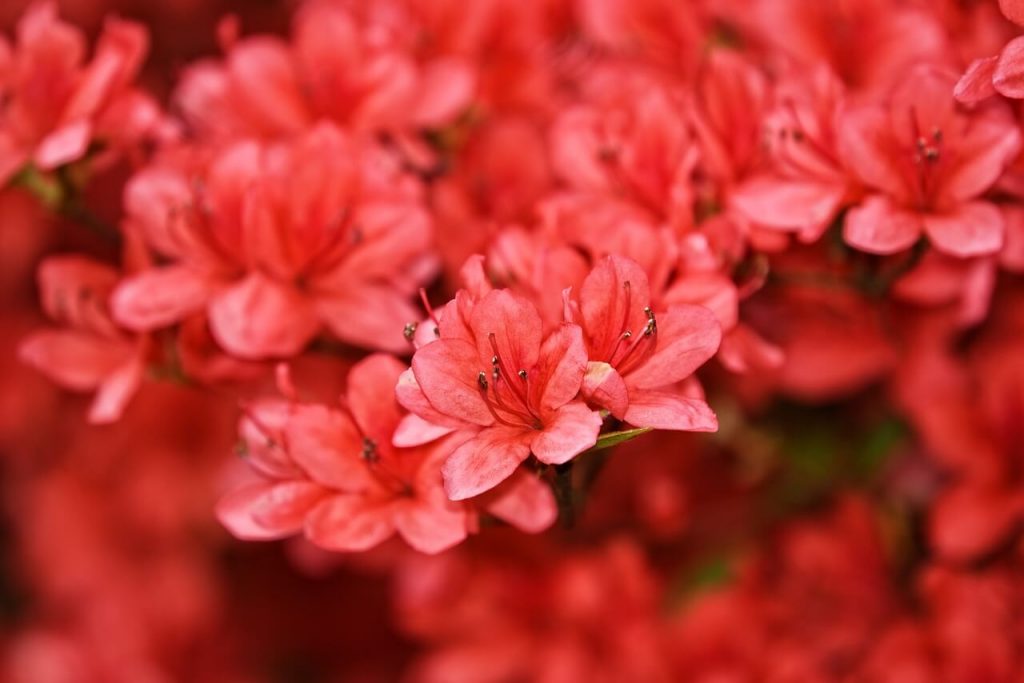
2. Summer Season (June – August)
This is the season when the temperature rises higher 30-degree Celsius. This season is also called Monsoon Season. It is hot and wet everywhere as there is daily rainfall with thunderstorms. It is not the best season to visit Nepal.
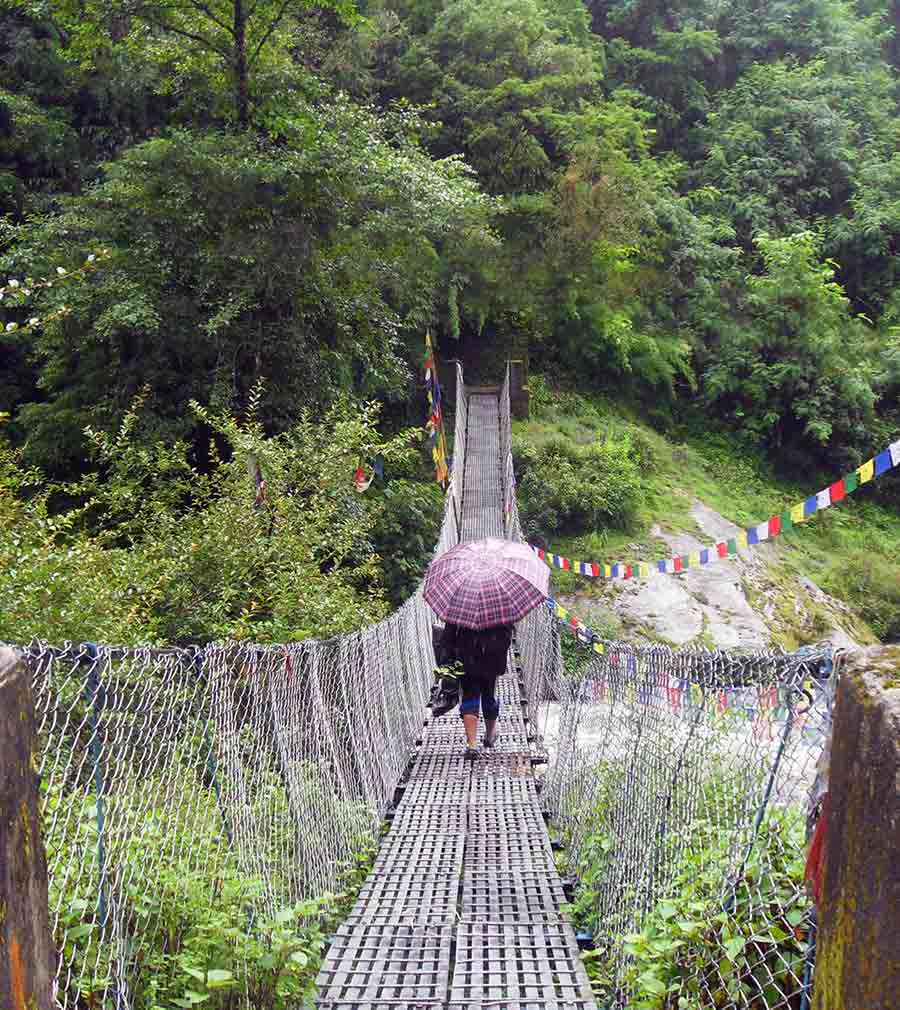
3. Autumn Season (September – November)
Well, Autumn Season is the best tourist season in Nepal. The weather in this season is amicable for trekking, hiking, etc.
You can find many tourists booking their tickets to Nepal for the mesmerizing view of the mountains. This is also the season of the Biggest Festival Dashain in Nepal , celebrated by Hindus followed by another festival Tihar .
4. Winter Season (December – February)
As you know, In the winter season the weather is cold. At higher altitudes, there will be heavy snowfall . This is also the best season to visit Nepal if you want to explore lower elevations.
Related Reading: What to wear in Nepal in January?
Temperature in Kathmandu
Nepal has its own six seasons. The temperature varies according to the elevation. We are going to list the monthly average temperature of Kathmandu the (Capital City of Nepal).
Must Read: Getting Around Nepal
This best time to visit Nepal guide is going to help you to choose the best season to travel to Nepal. As Nepal has numerous beautiful destinations, any season is the best season to explore different regions.
If you have any questions/queries then please feel free to comment below. We will try to reply ASAP.
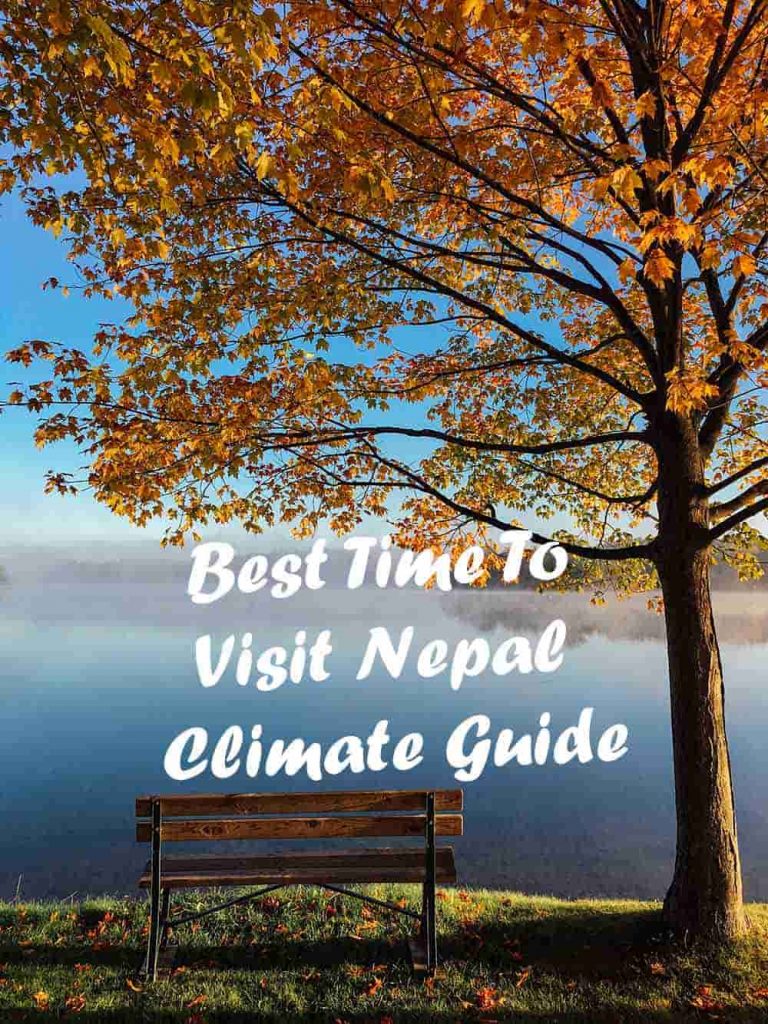
Suraj Katwal
Suraj is a travel enthusiast who believes in finding solace in the heart of nature. He enjoys exploring new destinations, different culture, and encouraging people to travel.
Travel Resources
Hotel & Flight
Searching for the best hotels & flight tickets to visit Nepal? Check out the best deals.
Related Articles...
Yeti Airlines in Nepal
Buddha Airlines in Nepal
Kathmandu Airport Guide – Tribhuvan International Airport
Tipping in Nepal: How Much to Tip and When?
Can US Citizens Drive in Nepal?
Dhap Dam – Location, Distance, Hiking Route
Do US citizens need visas for Nepal?
How much dollar can I carry to Nepal?
Leave a Comment Cancel reply
About stunning nepal.
Stunning Nepal is a travel blog that intends to provide travel tips, references & guides, things to do & also your guide for hiking & trekking in Nepal.
Things To Do
Trekking in Nepal
Food and Festivals
Privacy Policy
Get in Touch
Stunning Nepal
Address: Dhanawantari Marg, Kathmandu 44600, Nepal
+977-9808211139
© 2024 Stunning Nepal. All Rights Reserved
- Deutschland
Best Time To Visit Nepal
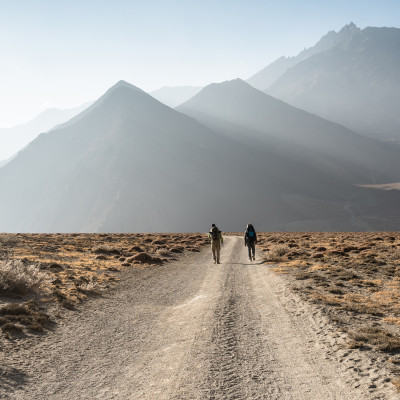
Nepal through the seasons
The best time to visit Nepal is during the months of October and November. The monsoon is over, which means magnificent, green, lush vegetation as well as clean air – the perfect time to explore the country in all its beauty, especially given the mild temperatures. This is also the time the views of the peaks of the Himalayas are nearly picture perfect.
May is considered low season and we recommend not visiting the country from June to mid September.
Best Time To Visit
We recommend.
- The mountain views are the best in winter so you could opt for a short trek at low altitudes
- Visit Chitwan National Park and try and spot the big five – the one-horned rhino, the Royal Bengal tiger, the Asian elephant, leopard and the Himalayan Sloth bear
- Witness the colorful Maha Shivratri celebrations (A Hindu festival worshipping Lord Shiva) at the Pashupatinath Temple
- Head out to one of the popular trekking trails in the Everest or Annapurna. But book early as these are usually in high demand!
- Get the adrenalin flowing with a white water rafting trip
- Fly and get up close and personal with the Everest, as you soak in stunning aerial views of the Tibetan Plateau’s lakes and glaciers
- Enjoy the festivities around the Nepali New Year
- Get the adrenalin flowing with a short kayaking trip given the weather will be warm
- Spend time at the several restaurants across Kathmandu sampling Nepalese cuisine, or participate in a cooking class at a local’s home
- As the Mustang region falls in the rain shadow area of the Himalayas, it is relatively dry during this time, which means you can trek in the upper and lower Mustang region
- Nepal’s rice fields will be a lush green at this time, so why not capture stunning photographs of the panoramic landscape?
- Enjoy the various trekking trails around Pokhara, with its crystal clear lakes, turbulent rivers, deep gorges, and picturesque valleys
- Be part of the Dashain, the most auspicious religious celebration in the country, which usually begins end September and head into October
- Visit the small town of Nagarkot to savor panoramic views of the Himalayas and get a taste of village life
- Stroll through Kathmandu’s backstreets, catching glimpses of art and daily lives
- Kathmandu Valley is a World Heritage Site so make sure you visit the Durbar Squares, Patan and Bhaktapur, the Buddhist stupas and the Hindu temples
- Attempt one of the most popular long treks (21 days), the Annapurna trek, which takes you along the edge of the Tibetan Plateau and through the Thorung La Pass (5,400 meters)
- To catch a glimpse of Nepali village life, stop off at the quaint Newari village of Bandipur, en route to Pokhara or the high-altitude Sherpa village of Namche Bazaar in the Everest region
- Tihar or the festival of lights is usually celebrated in Nepal in November and is the country’s second-biggest religious festival
- Visit the town of Dhulikhel with its panoramic views of the Himalayan range, enchanting temples, and exquisite local handicrafts
- Indulge in a spot of mountain biking
Best Time to Visit Nepal by Season
The weather patterns are largely predictable. There are four seasons in Nepal:
- Spring from March to May
- Summer from June to August
- Autumn from September to November
- Winter from December to February. The monsoon season lasts from late June to mid-September, while it is relatively dry the rest of the year.

What to Pack for Nepal
There are largely no clothing restrictions in Nepal and you can wear what is most comfortable and weather appropriate. Choosing to be formal or casual is entirely up to you. Traveling in mountainous regions means experiencing a wide range of temperatures across 24 hours. During the day it can be quite warm, whereas at night temperatures can drop dramatically. Crossing over a pass requires an extra layer of clothing just for an hour or two. Lightweight and tropical clothes with umbrellas are advised from June to August. Between October and March, lightweight clothes with a coat for the evenings and warm clothing for the mountainous areas are recommended.
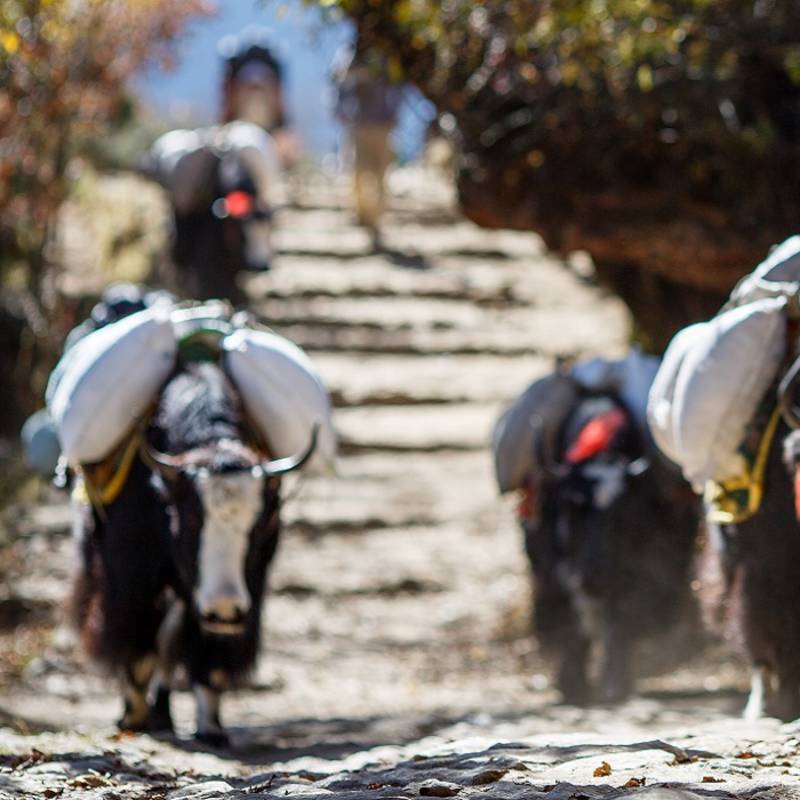
Popular Trips to Nepal
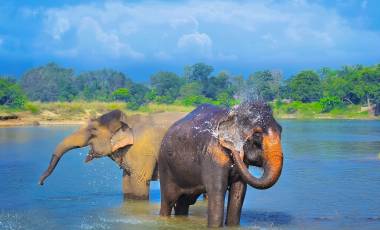
Nepal & Bhutan: Highlights
Discover the Himalayan kingdoms of Bhutan and Nepal on this 16-day tour. Start your journey in Kathmandu, the capital of Nepal, and take in its magnificent UNESCO World Heritage sites. Go on an exciting safari at the Royal Chitwan National Park and bask in panoramic mountain views in the scenic town of Dhulikhel. Continue your…
![nepal visit best time Enchanting Travels Nepal Tours Women in sari standing on the boat,Phewa lake,Pokhara city ]](https://res.cloudinary.com/enchanting/q_70,f_auto,w_380,h_230,c_fill,g_face/enchanting-web/2023/09/Enchanting-Travels-Nepal-Tours-Women-in-sari-standing-on-the-boatPhewa-lakePokhara-city-.jpg)
Undiscovered Nepal: Lower Mustang, Kathmandu and Pokhara
Take an unforgettable journey into Nepal’s unexplored destinations where few tread! This private Nepal tour introduces you to the Lower Mustang region where you will explore hidden gems such as Kagbeni, part of the Annapurna Circuit Trek and the windiest city in Nepal! At Jomson, you have the chance the discover one of the world’s…

Classic Nepal for Beginners
From its lofty mountains to its warm people, Nepal is yours to discover! Home to enchanting UNESCO World Heritage sites, give in to Kathmandu’s mesmeric charm before you tackle lofty heights at Pokhara. In Chitwan, befriend a herd of elephants or laze by the Rapti, and soak in the undiscovered, tranquil charm of Dhulikhel. Your…
Best Places To Visit

Kathmandu is a Himalayan valley kingdom, cradled within the foothills of mighty peaks. The city is home to seven UNESCO World Heritage sites and several other attractions, such a carved rose-brick pilgrimage sites, artistic workshops, and cafes and courtyards brimming with friendly local families.

Pokhara has it all – a picturesque valley nestled amid majestic mountains, glorious adventure trails and delicious cuisine! Originally envisioned as a center of commerce, the city’s roots can be traced back to the 17th century, when it featured on the trade route between India and China.
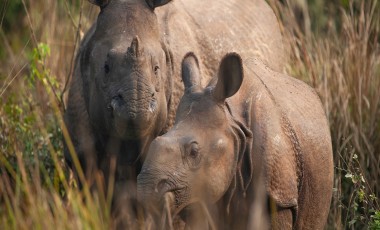
Chitwan: A wholly different experience! Chitwan is home to one of Asia’s finest National parks and one of the most traditional and conservative indigenous people of Nepal – the Chepangs.

Dhulikhel: Undiscovered gem Dhulikhel is a scenic and ancient town located east of Kathmandu with panoramic views of the Himalayan range, enchanting temples, exquisite local handicrafts, and friendly and intriguing culture.

The second highest point on the valley rim at an elevation of 7,200 feet, Nagarkot boasts panoramic views of the Himalayas and is ‘so near yet so far’ from the maddening crowd of a bustling city.
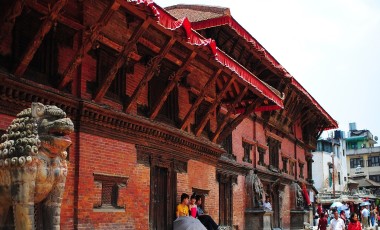
Patan is one of three royal cities in the Kathmandu Valley, located on the southern side of the Bagmati River and about half a mile south of Kathmandu.
Things To Do
From towering mountain peaks to incredible hiking opportunities and cultural delights – Nepal holidays are a joy! Our destination experts share their personal favorite highlights.
Travel Guide
Discover the most essential details before you travel to Nepal, from visa formalities to combating altitude sickness in the Himalayas, and everyday traditions, in our Nepal travel guide.
From the Blog
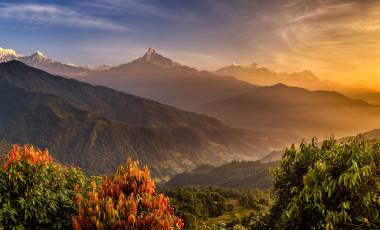
Climb every mountain: Why you need to plan a Nepal holiday
On your Nepal holiday, find spiritual bliss in the ancient temples of Kathmandu, many of them UNESCO World Heritage Sites, bathe elephants at Chitwan National Park, or challenge yourself with treks in the Himalayas.
What Our Guests Say

The Enchanting Difference
Authentic & unique.
Our award-winning, licensed local guides provide incredible insights and exclusive experiences for you.
Personalized & Private
Our experts completely customize your private tour to match your interests and preferences.
High-Quality Experiences
All our accommodations and services are personally tested by our team.
Fully Supported Travel
You’ll have a personal and dedicated trip coordinator, backed by 24/7 support in case of emergencies while you’re traveling.
Financial Protection & Flexibility
Your booking is flexible and completely secure with us.
Safe & Secure
Your safety and well-being are our top priorities.
Do you have a vacation in mind? Personalize your itinerary with our Trip Builder.

The Best Time To Visit Nepal (And The Worst!) 2024
Wondering when the best time to visit Nepal is? Then you’re not alone. Thousands of tourists visit this beautiful country every single year, and if this is a once-in-a-lifetime trip then you’re going to want to make sure you’ve picked the best time to visit.
Nepal is a country that offers a diverse range of experiences for travelers, from trekking in the Himalayas to exploring ancient temples and immersing oneself in the vibrant culture. And we absolutely loved getting stuck into it all.
However, choosing the right time to visit Nepal is crucial to make the most out of your trip.
Nepal’s climate and weather conditions vary significantly throughout the year, which can affect the availability of activities and the overall experience of your trip.
Before we booked our trip to Nepal we scoured the internet trying to find the best time to visit, but unfortunately for us we didn’t have availability to visit at the peak time. This was both a blessing and curse, and we’ll explain more below.
In this blog post, we will explore the best time to visit Nepal based on different factors such as weather, festivals, and activities, to help you plan your trip effectively and make it a memorable one.
Whether you’re a nature lover, adventure enthusiast, or cultural explorer, this guide will provide you with valuable insights into the ideal time to visit Nepal based on your interests and preferences.

As an Amazon Associate, we earn from qualifying purchases. We also earn from other affiliate programs. This means we may receive a small commission on products purchased through our links at no extra cost to you.
Table Of Contents
Is nepal worth visiting, the best time to visit nepal, what is the best time to go trekking in nepal, when do most tourists visit nepal, the cheapest time to go to nepal, what month is the most hot in nepal, what is the rainy season in nepal, the worst time to visit nepal, frequently asked questions, top tips for visiting nepal.

Absolutely, Nepal is worth visiting! In our opinion anyway.
Nepal is a unique country with a rich culture, history, and stunning natural beauty. From the soaring peaks of the Himalayas to the lush jungles of Chitwan National Park, Nepal offers a diverse range of landscapes and experiences.
I think Nepal was the place where we had the most unique experiences of any of our travels. We saw tigers in the jungle, trekked in the Himalayas, and explored some of the most beautiful religious sites, including Lumbini, birth place to Buddhism.
Nepal is home to several UNESCO World Heritage Sites, including the historic city of Kathmandu, which offers a glimpse into the country’s rich cultural heritage.
The Nepali people are incredibly friendly and hospitable. Everyone will stop and bow their hellos as you walk past. The country is known for its delicious cuisine, which offers a blend of Indian, Tibetan, and Chinese flavors.
Moreover, Nepal is a popular destination for adventure enthusiasts, offering opportunities for trekking, mountaineering, rafting (the white water rafting here is amazing), and more.
Overall, Nepal is a destination that should be on every traveler’s bucket list, offering a unique and unforgettable experience. We highly recommend you book a visit NOW!
The best time to visit Nepal depends on various factors such as weather, festivals, and activities you plan to do. There is such a huge range of things to do in Nepal and some quite distinct weather patterns.
Here are the best times to visit Nepal based on different interests:
The best time for trekking in Nepal is during the dry season, which is from October to May. During this time, the skies are clear, and the temperature is pleasant, making it ideal for trekking in the Himalayas.
However, the peak trekking season is from October to November when the weather is at its best, and the trails are less crowded than during the spring season.
We’ve written more on this below, as let’s be honest, trekking is one of the main reasons most people visit Nepal.
Cultural Exploration
Nepal is a culturally rich country, and the best time to explore its heritage is during the festivals. The most significant festival in Nepal is Dashain, which falls between September and October, followed by Tihar in November.
During these festivals, the streets are decorated with lights, and the temples are bustling with people, offering a unique cultural experience.
Nepal does have an awful lot of festivals though, so whatever time of year you visit you will probably find there is something going on. We were there during International Womens Day and even in a remote village in Chitwan they were still celebrating with music and dancing.
Wildlife Safari
The best time for a wildlife safari in Nepal is from October to March, which is the dry season. During this time, the animals gather around waterholes, making it easier to spot them.
Mountaineering
The best time for mountaineering in Nepal is during the pre-monsoon season, which is from April to May. During this time, the weather is stable, and the snow conditions are ideal for climbing. However, the post-monsoon season, which is from September to November, is also suitable for mountaineering.
Again, we’ve written more about this in the section below.
In summary, the best time to visit Nepal depends on your interests and activities you plan to do. However, generally speaking, the best time to visit Nepal is during the dry season, which is from October to May, when the weather is favorable for most outdoor activities.

Nepal is famous for its mountains, with the Himalayas being some of the most sought-after trekking and mountaineering destinations in the world.
It’s honestly hard to imagine the scale of them until you see. They never failed to take my breath away and they are some of the most awesome views I’ve seen in my entire life.
Saying that, these mountains are no joke. No matter what kind of trek you are planning you should always take an experienced guide. These mountains constantly move and breath, whether that’s due to avalanches or landslides. They are surrounded by dense jungle that would be easy to get lost in forever, and altitude sickness is also a very real danger.
The best time to go trekking in Nepal is during the dry season, which is from October to May. During this time, the skies are clear, and the temperature is pleasant, making it ideal for trekking in the Himalayas.
The peak trekking season in Nepal is from October to November when the weather is at its best, and the trails are less crowded than during the spring season. The skies are clear, and the temperature is moderate, making it the perfect time to enjoy the stunning mountain views and natural scenery.
However, trekking during the winter months, from December to February, can also be a fantastic experience as the skies are still clear, and the trails are relatively quiet. The only drawback is that it can be very cold at higher altitudes, so proper equipment and clothing are necessary.
You should also be aware that when there is snow on the mountains, there is always an avalanche risk. You should be well versed in avalanche survival tactics and always take an experienced guide who has the proper safety communications equipment.
The great thing about trekking Nepal during the dry season is that you’re almost guaranteed incredible views.
Trekking during the spring season, from March to May, is also a popular option as the weather is still pleasant, and the flowers and vegetation start to bloom, making the landscapes even more beautiful. However, the trails can be quite crowded during this time, and there can be occasional rain showers.
During the rainy season of June through to August you’ll get regular monsoon rains and possibly absolutely no views due to cloud cover. This is more likely that you’d think, so plan carefully if you’re going for the views (which are honestly incredible).
We visited in July and August and got very, very lucky. We managed to get little glimpses of the view on most days of our 12 day trek, though they were short glimpses before the clouds rolled in again.
The other thing to note about trekking during the rainy season is that landslides aren’t uncommon. We were forced to scale our way across a recent landfall when it was blocking our exit from the mountain. It was pretty scary!
Overall, the best time to go trekking in Nepal is during the dry season, which is from October to May, depending on your preferences and trekking route. It’s essential to research your trekking route and the weather conditions beforehand to ensure you have the best possible trekking experience.
The peak tourist season in Nepal is from September to November and from March to May. During this time, the weather is pleasant and dry, and the skies are clear, making it the perfect time to explore Nepal’s natural beauty, cultural heritage, and outdoor activities.
The September to November period is the best time for trekking in Nepal, and it coincides with the Dashain and Tihar festivals, which are the most significant festivals in Nepal. This period attracts a large number of tourists who come to Nepal to witness the festivities and explore the country’s natural beauty.
The March to May period is also a popular time to visit Nepal as the weather is mild, and the flowers and vegetation start to bloom, making the landscapes even more beautiful. This period is perfect for exploring Nepal’s cultural heritage, as many festivals and events take place during this time.
However, it’s worth noting that the peak tourist season can also mean higher prices, crowded tourist destinations, and limited availability of accommodations and services.
If you prefer fewer crowds and lower prices, it’s best to consider visiting Nepal during the shoulder seasons, which are from February to April and from September to November, or during the winter months from December to February.
During these periods, the weather can still be pleasant, and there are fewer tourists, making it a great time to explore Nepal’s natural beauty and cultural heritage without the crowds.

The cheapest time to visit Nepal is generally during the monsoon season, which runs from June to August. During this period, the tourist inflow decreases, and prices for accommodation, flights, and other services tend to be lower than during the peak tourist season.
However, it’s important to note that the monsoon season brings heavy rain showers, and some roads and trekking routes may be inaccessible or challenging to navigate. Outdoor activities such as trekking, rafting, and mountain climbing may also be limited or not recommended during this time.
Another option for budget-conscious travelers is to visit Nepal during the winter months, from December to February, which is considered the low season for tourism.
While the temperature can be cold, and some higher-altitude trekking routes may be closed, it’s still possible to explore the lower elevations and enjoy the cultural attractions in cities like Kathmandu and Pokhara.
Overall, if you’re looking for the cheapest time to visit Nepal, consider planning your trip during the monsoon season or the winter low season, but keep in mind that some activities may be limited, and the weather may not be ideal for outdoor adventures.
The hottest month in Nepal is generally considered to be May, which falls during the pre-monsoon season. During this month, the temperature in the lower elevations, including Kathmandu Valley, can reach up to 30-35 degrees Celsius (86-95 degrees Fahrenheit).
May is also the month when Nepal’s pre-monsoon season starts, which brings hot and humid weather with occasional thunderstorms and rain showers. The high humidity and hot temperatures can make it challenging to explore the outdoors, especially for activities such as trekking and mountaineering.
However, it’s worth noting that the temperature can vary depending on the altitude and location in Nepal. For example, in mountainous regions, the temperature can be much lower, and in higher elevations, it can be quite cold even during the hottest months.
Overall, if you’re planning to visit Nepal during the hottest month of May, it’s best to be prepared for the heat and humidity by wearing lightweight and breathable clothing, staying hydrated, and taking breaks in shaded areas.

The rainy season in Nepal is known as the monsoon season, which usually starts in early June and lasts until late September. During this period, the country receives the majority of its annual rainfall, particularly in the southern and eastern regions.
The monsoon season in Nepal is characterized by heavy rain showers, high humidity, and occasional thunderstorms, particularly in the afternoons and evenings. The rainfall can cause flooding, landslides, and disruption of transportation and infrastructure, particularly in rural areas.
Despite the challenges posed by the monsoon season, it can also be a beautiful time to visit Nepal, particularly in the lush greenery of the country’s forests and hills.
It’s important to keep in mind that some trekking routes may be inaccessible or challenging to navigate during the monsoon season, and outdoor activities such as rafting and mountaineering may also be limited.
Overall, if you plan to visit Nepal during the rainy season, it’s important to prepare for the weather conditions by bringing waterproof gear, planning indoor activities, and being flexible with your itinerary in case of disruptions.
Nepal is a beautiful country to visit throughout the year, and the best time to visit depends on your personal preferences and interests. However, there are a few periods that are not recommended for visiting Nepal due to weather conditions or other factors that may affect your travel experience.
The winter months, from December to February, can be quite cold in Nepal, particularly in the higher elevations. Some trekking routes may be closed or challenging to navigate, and outdoor activities such as rafting and mountain climbing may be limited.
However, it’s still possible to explore the lower elevations and enjoy cultural attractions in cities like Kathmandu and Pokhara.
The monsoon season, which runs from June to September, can be challenging for travel due to heavy rainfall, landslides, and flooding. Trekking and outdoor activities may be limited or not recommended during this period, and transportation and infrastructure may be disrupted, particularly in rural areas.
In addition, it’s important to consider Nepal’s festivals and events when planning your visit. During peak festival times, such as the Dashain and Tihar festivals in October and November, accommodation prices can be higher, and tourist destinations may be crowded.
Overall, it’s essential to do your research and plan accordingly based on your interests, preferences, and the season in Nepal.
While there may be certain periods that are not ideal for travel, Nepal remains a beautiful and captivating destination throughout the year.
Here are some of your most commonly asked questions answered!
How Many Days In Nepal Is Enough?

The number of days you need to spend in Nepal depends on your travel interests, goals, and itinerary.
If you’re interested in trekking, you’ll need to set aside more time than if you’re only interested in visiting the cities and cultural attractions. Additionally, the duration of your trip will also depend on your budget and how much time you have available.
Generally, a minimum of seven to ten days is recommended for a first-time visit to Nepal, which would allow you to explore the main highlights of the country, including Kathmandu, Pokhara, and Chitwan National Park. This time frame would also allow you to do some short treks or day hikes in the surrounding areas.
If you’re interested in trekking in the Himalayas, you’ll need to set aside more time, as most treks take at least a week to complete. The Everest Base Camp trek, for example, takes about 12-14 days, while the Annapurna Circuit trek can take up to 21 days. Additionally, you’ll need to factor in a few days for acclimatization, rest, and travel.
Ultimately, the ideal duration of your trip to Nepal depends on your travel goals, interests, and budget.
Whether you’re interested in cultural sightseeing, trekking, adventure sports, or spiritual exploration, Nepal has a lot to offer, and you can customize your itinerary to fit your preferences and available time.
What Is The Best Month To Visit Kathmandu
Kathmandu, the capital city of Nepal, can be visited and enjoyed throughout the year.
The peak tourist season in Kathmandu is from September to November, after the monsoon season has ended, and the weather is dry and mild. During this period, the city is bustling with activity, and there are several festivals and events, including the Dashain and Tihar festivals.
However, it’s also the busiest time of the year, and prices for accommodation and flights can be higher.
Another good time to visit Kathmandu is from February to April, during the spring season when the weather is warm and dry. This is an excellent time for sightseeing, trekking, and other outdoor activities, and the city is less crowded than during the peak tourist season.
If you prefer to avoid the crowds and save some money, the offseason from June to August can be a good time to visit Kathmandu.
Although it’s the monsoon season, the rains are not continuous, and you can still enjoy some sunny days. However, you’ll need to be prepared for the occasional downpour, and some trekking routes and outdoor activities may be limited.
Ultimately, the best month to visit Kathmandu depends on your interests, preferences, and travel goals. Whether you’re interested in cultural sightseeing, trekking, adventure sports, or spiritual exploration, Kathmandu has a lot to offer, and you can customize your itinerary to fit your needs.

The Best Time To Visit Pokhara

Pokhara is a popular tourist destination in Nepal, known for its stunning natural beauty, lakes, and adventure sports. It’s also the jumping off point for the Annapurna mountain range trek, which is the one we did and it’s absolutely incredible.
The best time to visit Pokhara depends on your preferences and interests.
The peak tourist season in Pokhara is from September to November, after the monsoon season has ended, and the weather is dry and mild. During this period, you can enjoy clear skies, stunning views of the Himalayan peaks, and participate in adventure sports like paragliding, bungee jumping, and rafting.
Another good time to visit Pokhara is from February to April, during the spring season when the weather is warm and dry. This is an excellent time for sightseeing, trekking, and other outdoor activities, and the city is less crowded than during the peak tourist season.
If you’re interested in trekking, the autumn and spring seasons are the best times to visit Pokhara. During these periods, the weather is clear, and the visibility is excellent, making it perfect for trekking in the nearby Annapurna range.
The monsoon season from June to August isn’t the best time for trekking but we did ours in August and loved it. The tracks felt more dangerous as they were slippy and we saw frequent evidence of landslides, but with an experienced guide and some mountain knowledge you should be ok. You might not see any view at all though due to cloud cover.
Ultimately, the best time to visit Pokhara depends on your interests, preferences, and travel goals. Whether you’re interested in adventure sports, trekking, sightseeing, or simply relaxing by the lake, Pokhara has a lot to offer, and you can customize your itinerary to fit your needs.
What Is The Best Month To Visit Nepal?
Nepal has a diverse geography and climate, with varying temperatures and weather conditions throughout the year. However, generally, the best time to visit Nepal is from September to November and from February to April. It’s hard to pin it down to a certain month.
The period from September to November is the peak tourist season in Nepal, after the monsoon season has ended.
The weather is dry and mild, and the skies are clear, making it perfect for trekking, sightseeing, and outdoor activities. The views of the Himalayan peaks are spectacular during this period, and several festivals and events, including Dashain and Tihar, take place.
The period from February to April is also an excellent time to visit Nepal, as the weather is warm and dry. The skies are clear, and the visibility is excellent, making it perfect for trekking and other outdoor activities. The rhododendrons are in bloom during this period, adding to the beauty of the landscape.
If you’re interested in trekking, the autumn and spring seasons are the best times to visit Nepal, as the weather is favorable, and the visibility is excellent.
However, if you prefer to avoid the crowds and save some money, the offseason from June to August can be a good time to visit Nepal, especially for exploring the cities and cultural attractions. However, the monsoon season can limit outdoor activities and trekking.
Ultimately, the best month to visit Nepal depends on your interests, preferences, and travel goals. Whether you’re interested in trekking, adventure sports, cultural sightseeing, or spiritual exploration, Nepal has a lot to offer, and you can customize your itinerary to fit your needs.

Visiting Nepal can be an incredible experience, full of adventure, culture, and stunning natural beauty. Here are some top tips to make the most of your trip to Nepal:
- Pack appropriately: Nepal has a diverse climate, and you need to pack accordingly. Bring warm clothing, especially if you’re planning to trek in the mountains, as the weather can be chilly, especially at higher elevations. Also, pack comfortable walking shoes, a sun hat, and sunscreen.
- Take precautions against altitude sickness: If you’re planning to trek in the mountains, take precautions against altitude sickness. Acclimatize gradually and stay hydrated. It’s also a good idea to carry medication for altitude sickness, just in case. The locals drink ginger soup which you can get at the tea houses along the way.
- Respect local customs and culture: Nepal is a culturally rich country, and it’s essential to respect local customs and traditions. Dress modestly, especially when visiting temples and religious sites. Also, ask for permission before taking photographs of people and respect their privacy.
- Use a reputable trekking agency: If you’re planning to trek in the mountains, use a reputable trekking agency. They can provide you with experienced guides, porters, and the necessary equipment. They can also ensure that you’re trekking responsibly and following environmental and cultural guidelines.
- Stay in locally owned accommodations: Staying in locally owned accommodations, such as homestays and guesthouses, can help support the local economy and give you a more authentic experience of Nepal.
- Be mindful of the environment: Nepal is a beautiful country, and it’s essential to be mindful of the environment. Avoid littering and use reusable water bottles instead of single-use plastics.
- Try the local cuisine: Nepali cuisine is delicious and diverse. Don’t be afraid to try local dishes, such as momos and dal bhat. Also, try the locally brewed tea and coffee, which is grown in the mountains.
- Learn some Nepali phrases: Learning some basic Nepali phrases can go a long way in connecting with the locals and showing respect for their culture. Simple greetings such as “Namaste” and “Dhanyabad” (thank you) can make a significant difference in your interactions.
By following these tips, you can have a more enjoyable and meaningful experience in Nepal.
Conclusion: The Best Time To Visit Nepal
Nepal is a stunningly beautiful country with a diverse geography, rich culture, and warm and hospitable people. The best time to visit Nepal depends on your interests, preferences, and travel goals.
However, the peak tourist season in Nepal is from September to November and from February to April. During these months, the weather is mild and dry, making it perfect for trekking, sightseeing, and other outdoor activities.
The views of the Himalayan peaks are spectacular during this period, and several festivals and events take place, adding to the cultural richness of the experience.
The offseason from June to August can be a good time to visit Nepal, especially for exploring the cities and cultural attractions, but the monsoon season can limit outdoor activities and trekking.
Ultimately, the best time to visit Nepal is the one that suits your preferences and travel goals, and by following the tips mentioned above, you can have an enjoyable and memorable experience in this beautiful country.
Similar Posts

111+ Couple Travel Quotes For Instagram 2024

Is Nepal Safe To Visit In 2023?

The Best Places To Visit In Chitwan National Park

Is Nepal In India? The Location Of Nepal

The 21 Best Things To Do In Pokhara 2023

Backpacking Nepal: The Ultimate Guide
One comment.
Without a doubt, this Nepal guide ranks among the finest.
Leave a Reply Cancel reply
Your email address will not be published. Required fields are marked *
- Search Search Hi! We’re Emily, Adam and Tiny Cat, liveaboard sailors travelling the world on our 38ft sailboat and writing about it as we go. We hope we can inspire you to live the life you’ve always dreamed, whether that’s exploring the world or living a more simple way of life in a tiny home. Find out more. Patreon
- Privacy Policy
Ace the Himalaya
Trekking in Nepal, Peak Climbing, Mt Biking and Tours in Nepal, Bhutan and Tibet
- Everest Base Camp Trek - 14 Days
- EBC Trek with Helicopter Return - 12 Days
- Everest Base Camp Luxury Trek - 14 Days
- Everest Base Camp with Island Peak - 19 Days
- Everest Three Passes Trek - 20 Days
- Annapurna Base Camp Trek - 13 Days
- Annapurna Circuit Trek - 19 Days
- Ghorepani Poon Hill Trek - 9 Days
- Manaslu Circuit Trek - 15 Days
- Gokyo to Everest Base Camp Trek - 17 Days

Best Time to Visit Nepal
Find out the ideal time to visit Nepal to experience clear skies, moderate climate, and vibrant cultures in this Himalayan paradise.
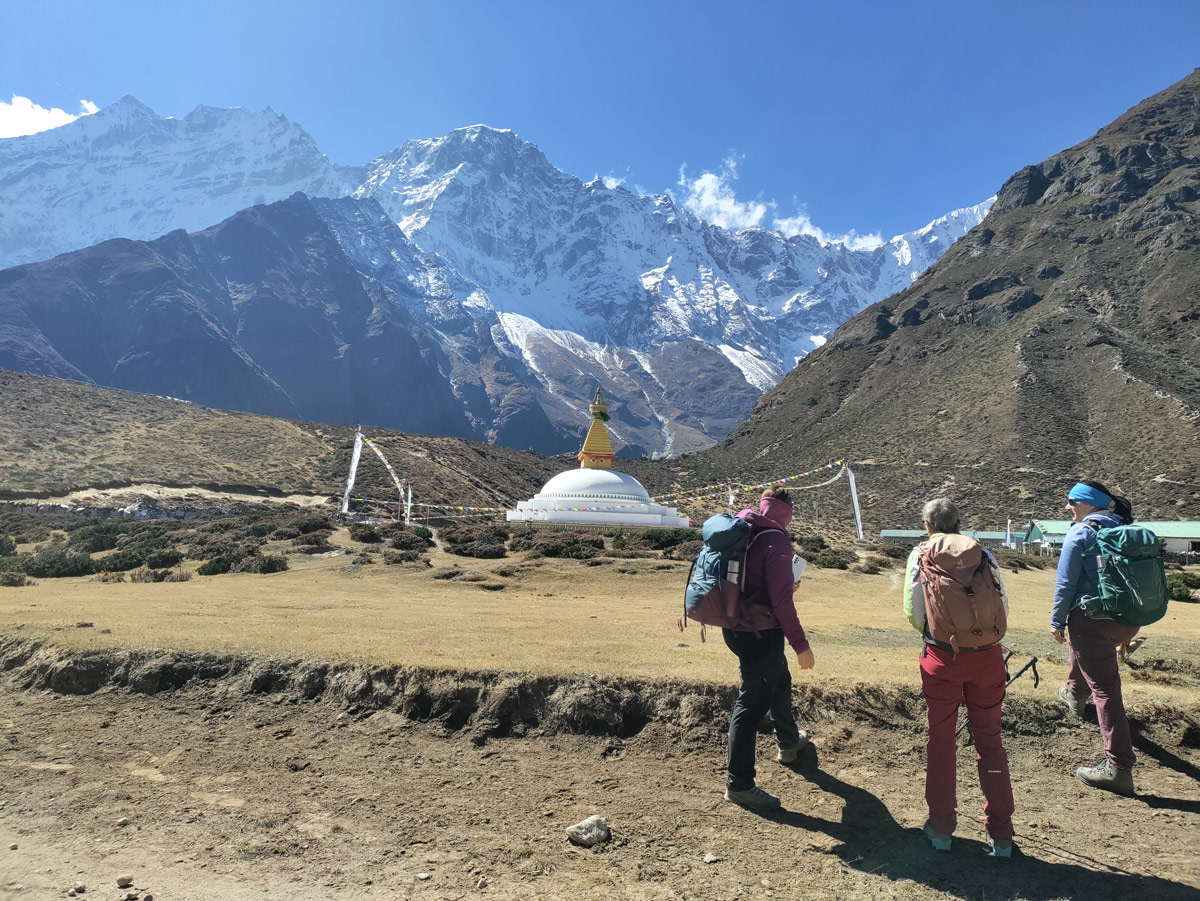
The land of soaring peaks and soul-stirring encounters, Nepal is often referred to as the ‘Amazon of Asia’. Nestled in the heart of the Himalayas, it is the land of breathtaking beauty and unparalleled adventures.
Nepal is not merely a travel destination, it is a single stop for people drawn to the adrenaline rush of high altitudes and adventures, the serenity of meditating in the monasteries, or the vibrant and colorful beauty of the cultural heritages.
With diverse landscapes, fascinating history, and a tapestry of cultures, the myriad experiences of Nepal beckon visitors from all over the world and is a top travel destination.
So, what is the best time to visit Nepal? Continue reading to find out.
Is Nepal a good place to visit?
A perfect tandem of enchanting landscapes, heart pounding adventures, heartwarming hospitality, and fascinating cultural heritages, Nepal is definitely a place worth visiting.
From trekkers to climbers to those seeking spirituality, the magic of this extraordinary land caters to all your needs, providing you with an experience unlike any other.
Diverse Landscapes
Within the small territory of Nepal lies a colorful canvas of enchanting landscapes that will provide you with a kaleidoscope of colors.
It houses the steamy jungles in the lowlands of Terai, terraced farms in the mid-hills, and the high-altitude mountain ranges housing the unique high-altitude deserts.
The Terai lowlands are the haven for flora and fauna teeming with an array of wildlife like elephants, tigers, rhinoceros, and several birds.
As you ascend from the lowlands, you enter the cultural heartland in lush hills dotted with quaint villages, picturesque valleys, and fields etched in the rolling hills along with several rivers and deep gorges.
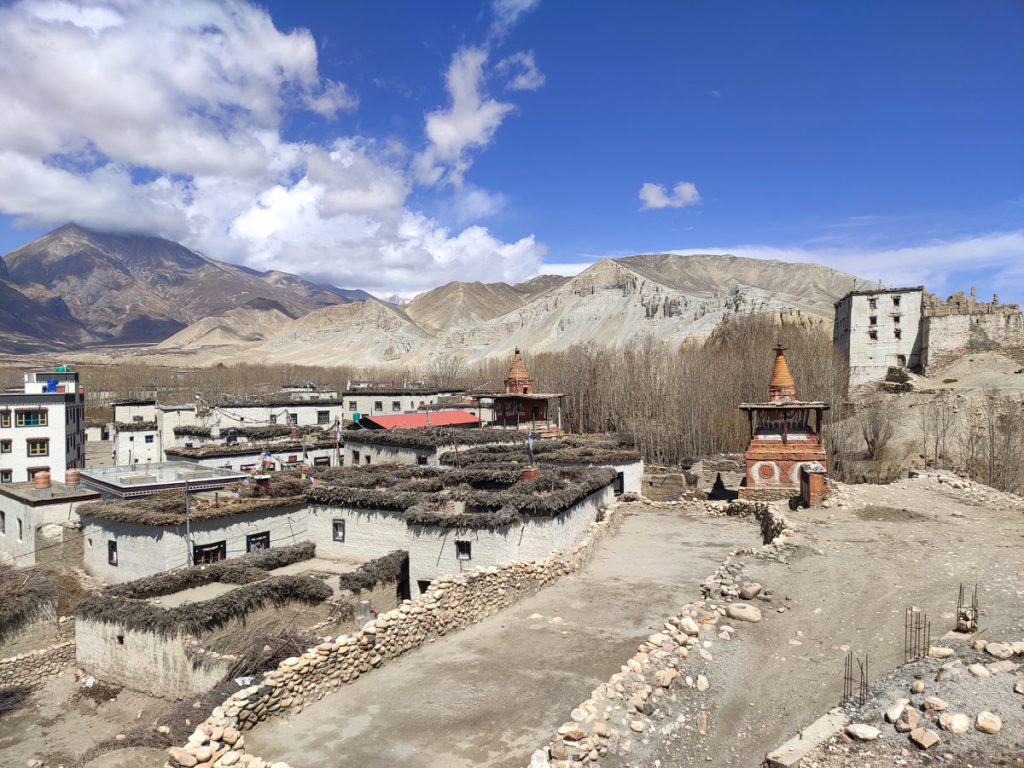
Higher than this lies the crown jewels of the country, the Himalayas. This region is home to Everest itself and features some of the tallest peaks in the world like Annapurna, Kanchenjunga, and Makalu along with other peaks like Machhapuchhre.
Nepal also features rare and beautiful high-altitude deserts in the rain shadow of the Himalayas located in places like Mustang and Dolpo in the Himalayan region.
Contrasting the lushness of other regions of Nepal, it unfolds windswept valleys and deep canyons for the visitors to explore and get a rather rustic experience. Therefore, from freshwater lakes to rugged mountain regions, Nepal has it all.
Rich Cultural Heritage
Home to many UNESCO World Heritage sites and the birthplace of Lord Buddha, Nepal has a treasure trove in the name of cultural heritage ranging from bravehearted history, religious sanctuaries, music, and much more.
The melting pot of religions, Hinduism and Buddhism are the most followed religions here.
From witnessing the close dance of life and death at Pashupatinath to delving into the spiritual energy of Buddhism at Swoyambhunath and Bouddhanath, visitors can indulge themselves in the symphony of religions and traditions.
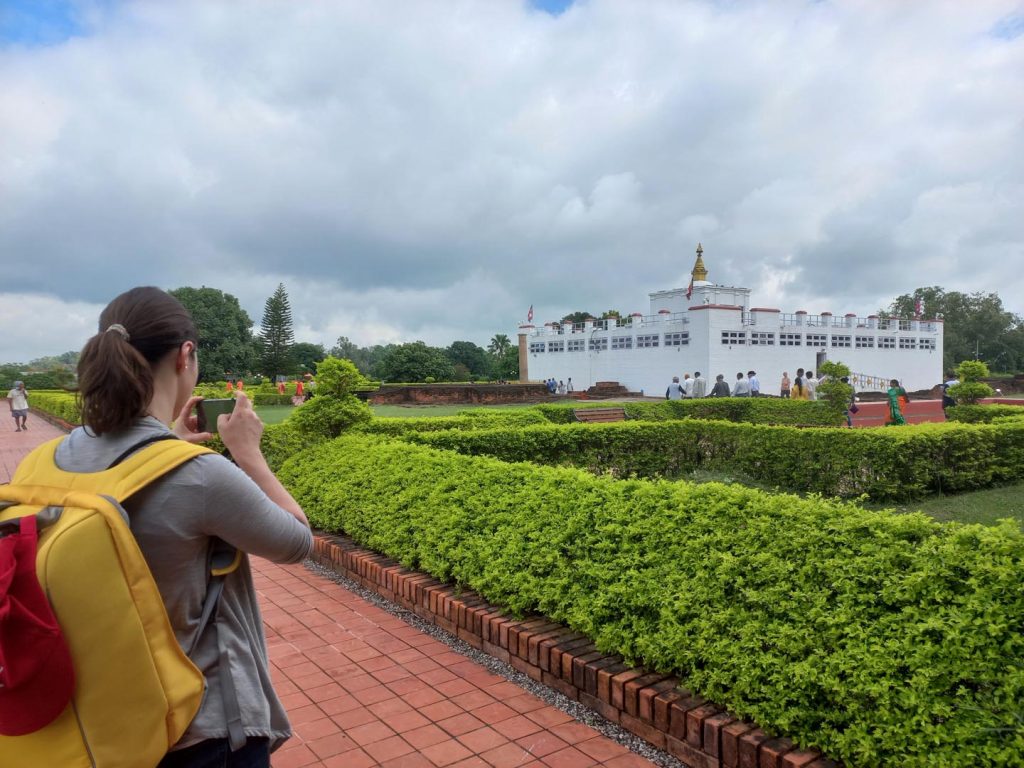
Nepal also has many festivals like Dashain and Tihar , Lhosar, and many more. Not to forget, Nepal is also home to Kumari, often known as the ‘Living Goddess’.
If you are lucky with your timing, you might even get to witness one of the iconic Jatras of the vibrant Newari community unfolding beautiful Nepali music and dance.
Taking you closer to the culture are the traditional crafts such as Thangka paintings, pottery, masks, weaving, and much more acting as the window to the heart and soul of Nepal.
Adventure Activities
For adventure seekers, Nepal is a premier destination featuring a medley of activities that provides you with the adrenaline rush and leaves your spirit soaring. Adventure awaits you at every corner of the country.
The home to some of the highest Himalayan giants, trekking is a quintessential activity including options like the iconic Everest Base Camp trek , a trek around the Annapurna region, or the less travelled Manaslu Circuit.
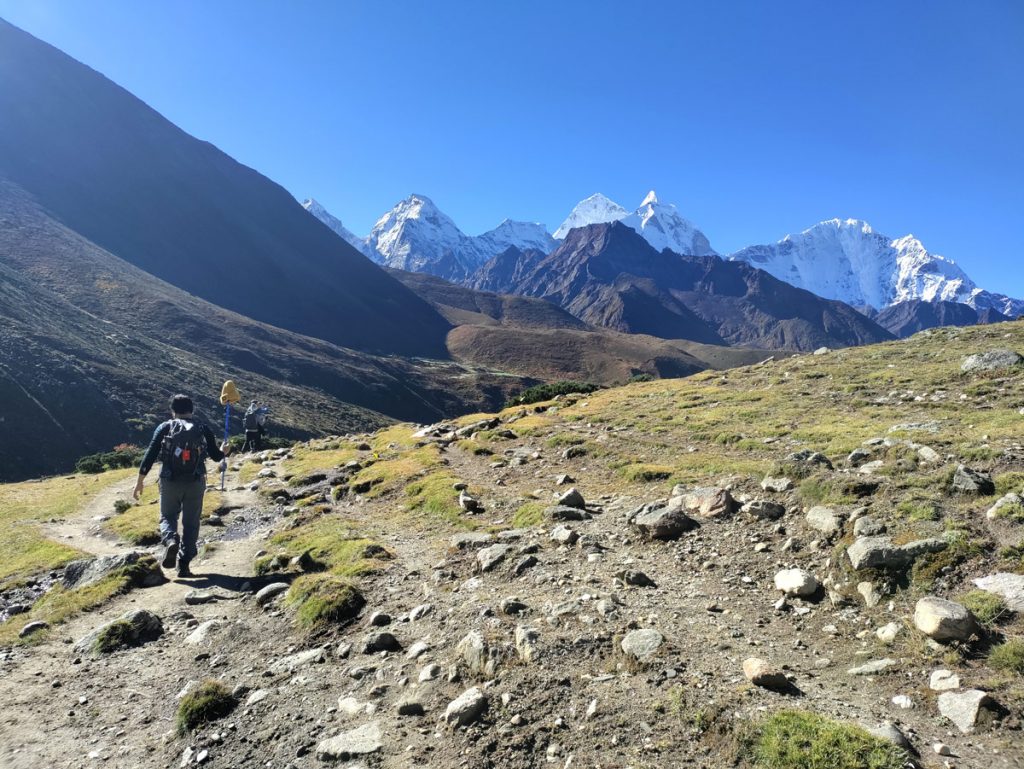
For those not satisfied with getting a closer perspective of the Himalayas, you can also climb one given you have enough determination and resilience.
You can indulge in white water rafting at the thrilling Bhote Koshi, roaring Trishuli, or the beginner-friendly Upper Seti among many options.
Bungee jumping in the world-famous Bhote Koshi gorge and paragliding amidst the towering peaks in Pokhara Valley can also be thrilling experiences.
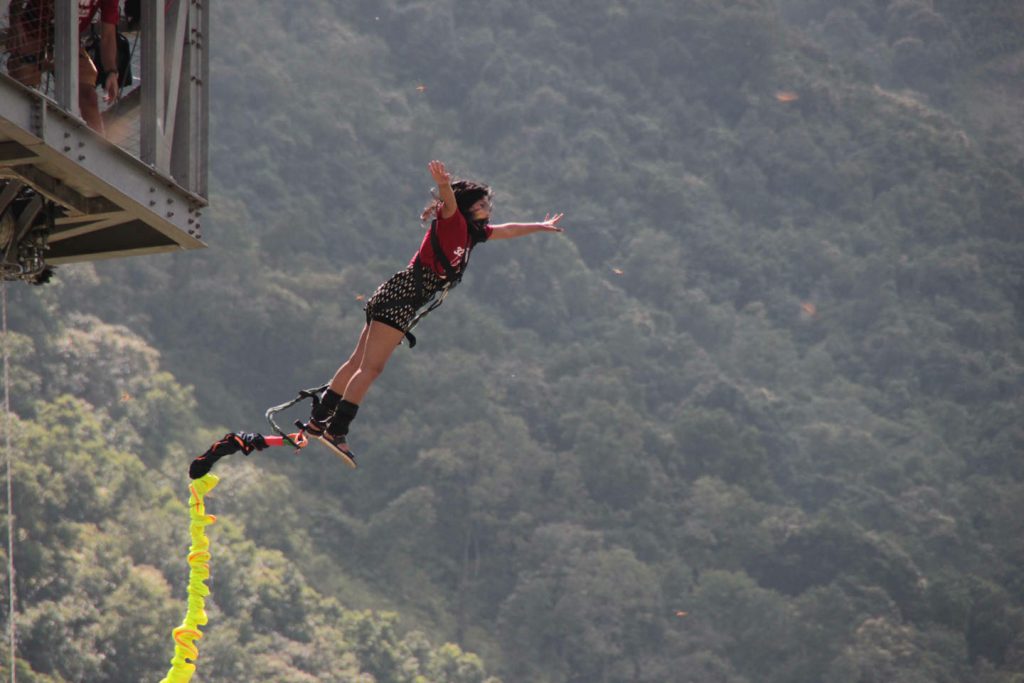
While we are taking to the skies, the hot air balloon experience in Pokhara cannot be missed.
For those inclined towards conquering the world on two wheels, embark on a mountain biking adventure in the challenging yet rewarding mountain passes in Upper Mustang , Annapurna Circuit , or even Langtang Valley .
Wildlife enthusiasts are in for a treat as they can take a wildlife safari to see tiger sightings, elephants, one-horned rhinos, and more.
Warm Hospitality
Nepalese hospitality needs no introduction as the people here are known worldwide for their warm and welcoming nature combined with the signature greeting- ‘ Namaste’ .
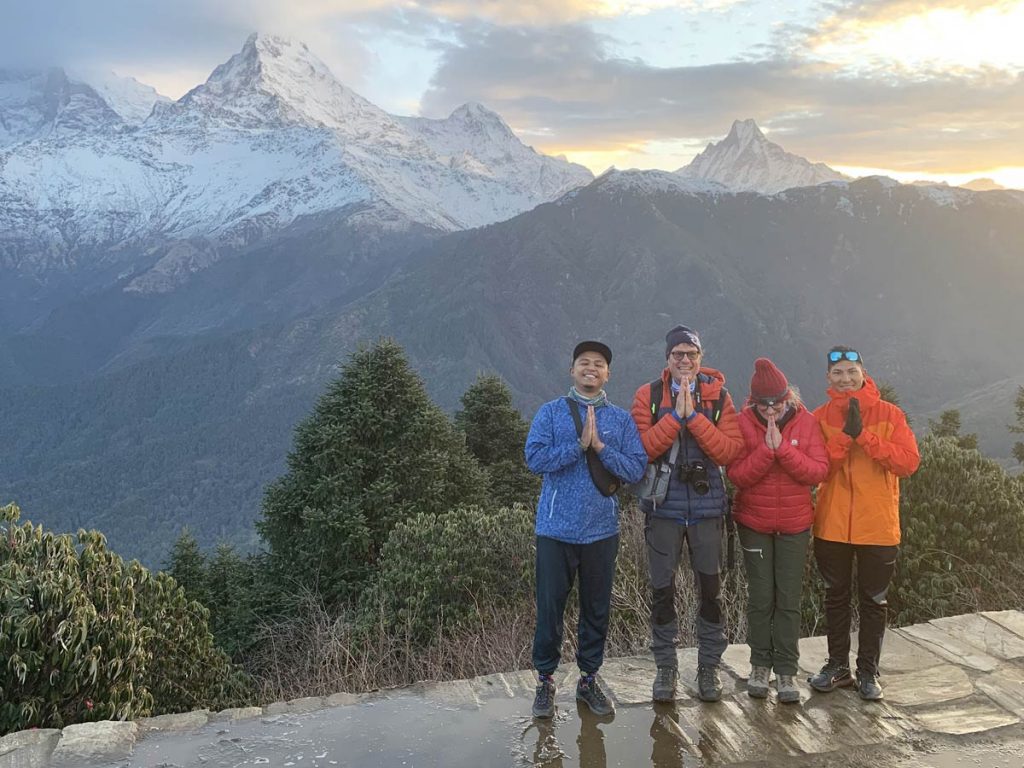
Be it in the bustling streets of the cities or the remote corners of the country, the people of Nepal are very kind and make you feel welcome instantly permeating hospitality in every interaction.
With a sense of community transcending borders, you will always feel at home, all thanks to the greeting smiles and the readiness to help. A sense of generosity and warmth lies in the people of Nepal.
Affordable Travel
Unlike many other destinations, Nepal is a viable option for extravagant travelers, budget-conscious travelers, and backpackers alike. An affordable destination, Nepal offers you great value for your money.
From relatively low travel costs to affordable stay and dining options, the journey to Nepal is a budget-friendly bliss that doesn’t require you to break the bank.
With a limited budget, you can experience lots more things compared to many popular travel destinations giving you all the more reason to plan your trip to Nepal.
When is the best time to go to Nepal?
Beyond the challenges, the months of spring (March to May) and autumn (September to November) are considered the best season to visit Nepal in general.
The moderate climates and clear skies make these seasons suitable for almost all kinds of adventures ranging from trekking, hiking, cultural tours, mountain biking, helicopter tours, and more.
Glimpse of Nepal’s Seasons
Given the diverse topography of Nepal, the country experiences a rather different seasonal cycle characterized by its four different seasons- spring (pre monsoon), monsoon, autumn (post monsoon), and winter.
Best time to visit Nepal for Trekking & Hiking
For adventure lovers wanting to trek and hike in Nepal, the autumn season (September to November) is heralded as the best time to visit Nepal followed by the months of spring (March to May).
Autumn is the peak trekking and hiking season as all the trails feature blooming landscapes with highly active flora and fauna with easier weather conditions, therefore inviting more crowds.
Treks and hikes in spring season also feature pleasant temperatures with the trails coming alive as they get painted with the different hues of several wildflowers with high wildlife activity.
Both these seasons unfold beautiful and unobstructed views of the Himalayan giants, passing on the true essence of trekking and hiking in Nepal.
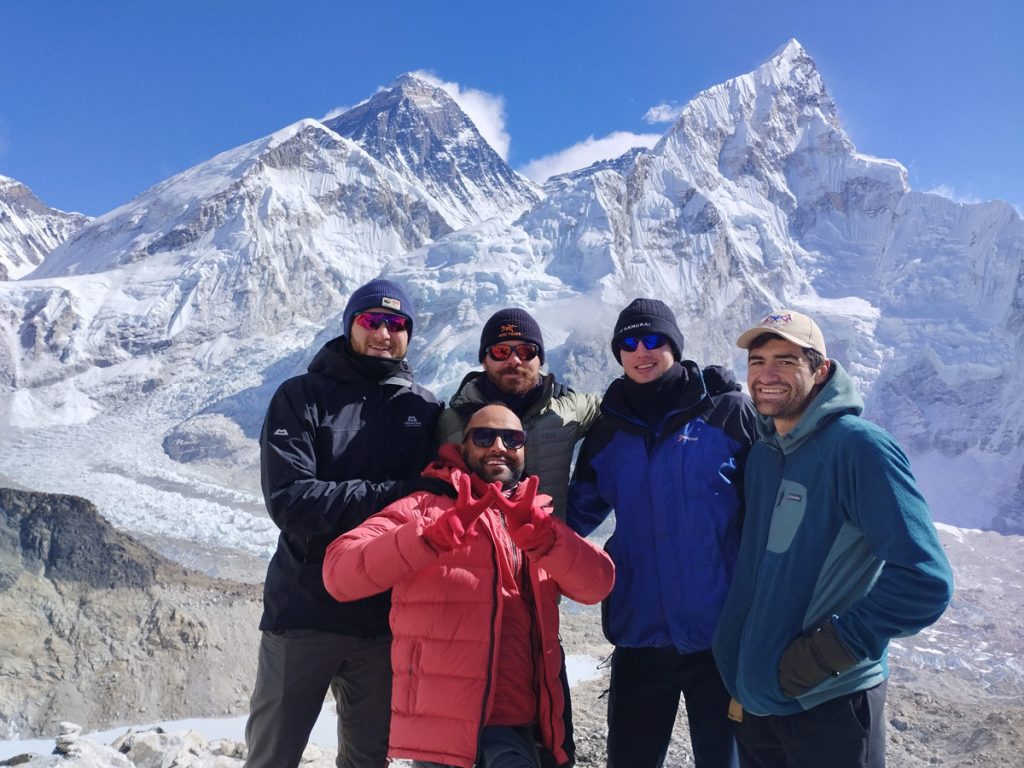
For those wanting a quieter experience, although challenging, winter (December to February) might be a good option as there is less crowd on the trekking and hiking trails of the country given the extremely cold climate.
Monsoon (June to August), however, is the season to avoid for trekkers and hiking enthusiasts as the country experiences heavy rainfall resulting in the trails becoming extremely slippery with a high risk of landslides.
Although some routes are open, exploring the trails during this season can be dangerous as you will be at risk of accidents and injuries along with the trails being infested with leeches.
Best time for cultural tours in Nepal
While a cultural tour is possible during any given season in Nepal, your experience becomes way more enhanced in the seasons of spring and autumn.
Featuring moderate climatic conditions and long days, visitors can make the most out of their day during these seasons without having to deal with the heat of the summer or the freezing temperatures of winter.
Nepal is a country rich in cultural heritage and features several festivals all year round. However, the major festivals of the country like Dashain and Tihar , Holi , and a wide range of Jatras take place in the months of spring and autumn, adding to the charm.
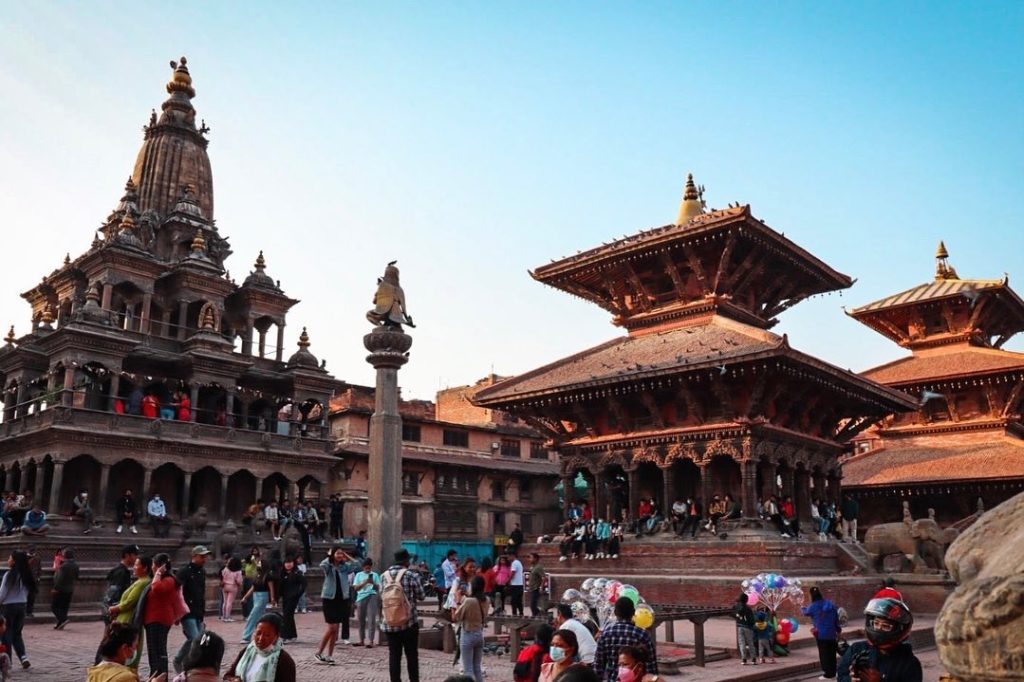
The country features lots of cultural tours like the Kathmandu Cultural Heritage Tour , combined tours like Kathmandu and Nagarkot , Kathmandu and Pokhara , as well as the overall Nepal Heritage Tour .
With clear skies and lush landscapes, these seasons allow the visitors to delve deep into the cultures of the country and witness several traditions.
However, if you want to witness the country adorned in the wintery hues and prefer exploring the cultures in solitude, winter can be a good time too.
Best time for Mountain climbing
Nepal boasts several options for mountaineering expeditions starting from Everest itself. Besides this, Mera Peak , Yala Peak , Island Peak , and Ama Dablam expedition are some other adventurous climbing options.
For gutsy visitors seeking the adrenaline rush of climbing a peak, no place can be better than the land of the Himalayas itself. However, not all seasons are suitable for mountaineering expeditions.
As mountain climbing is a risky adventure as it is, it is best to avoid seasons like monsoon and winter. Monsoon is not at all recommended for mountain climbing as the trails become extremely slippery with highly unpredictable weather and heavy rainfalls.
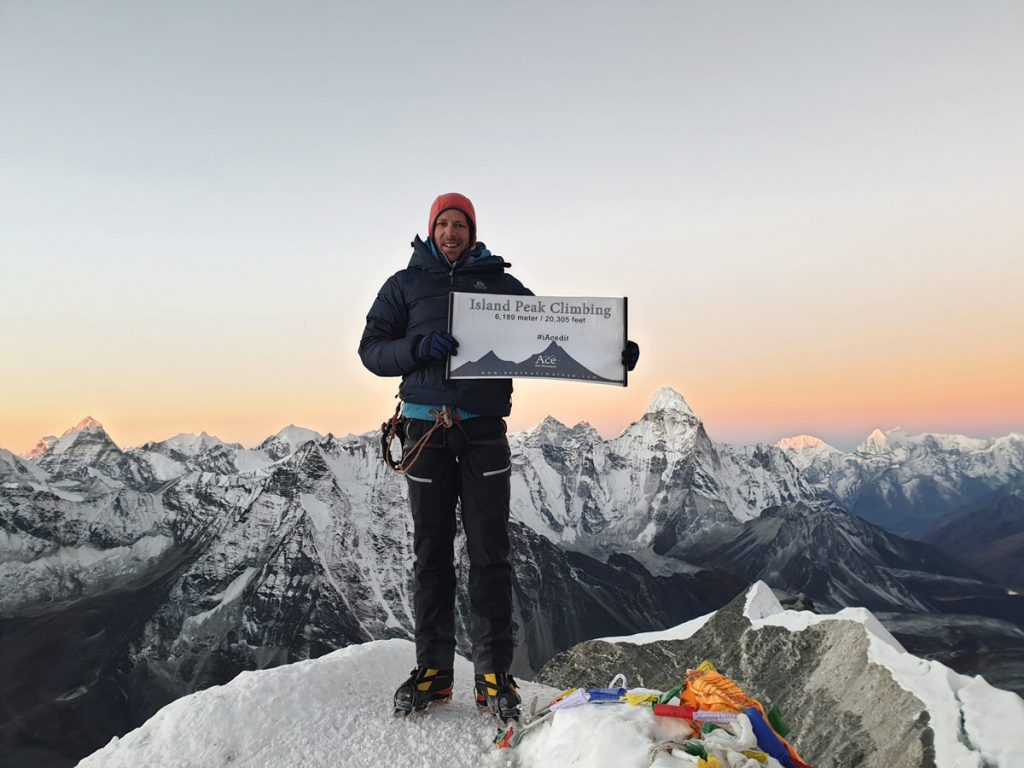
With poor visibility along the trails, the slippery trail becomes even more dangerous, and the risk of injuries is high as landslides are more common than you might think.
Mountain climbing in winter is also a big no given the extreme and unbearable temperatures of the high-altitude peaks which makes your ascent even more difficult than it already is.
The climbing trails are more prone to avalanches than ever with high risk of heavy snowfall and even blockage at times.
Spring and autumn seasons bring the minimum risk when it comes to mountain climbing in Nepal as these months feature temperatures that are way more comfortable accompanied by the clear skies and high visibility in the trails.
Although snowfalls are quite common at high altitudes, these months feature comparatively stable and predictable climatic conditions making your expedition more adventurous and less risky.
Best time for Wildlife safaris
For wildlife safari, again the months of spring and autumn are the most suitable ones. However, autumn has an upper hand here given the comparatively cooler temperatures.
Most of the wildlife safaris take place in the national parks situated in the lowlands of the country, where temperatures can go as high as 45 degrees Celsius during the months of summer.
Although the wildlife is equally active during this period, the temperature can be quite daunting. If you can take the heat, spring is a great time for wildlife safaris as you see the lush landscapes and highly active fauna.
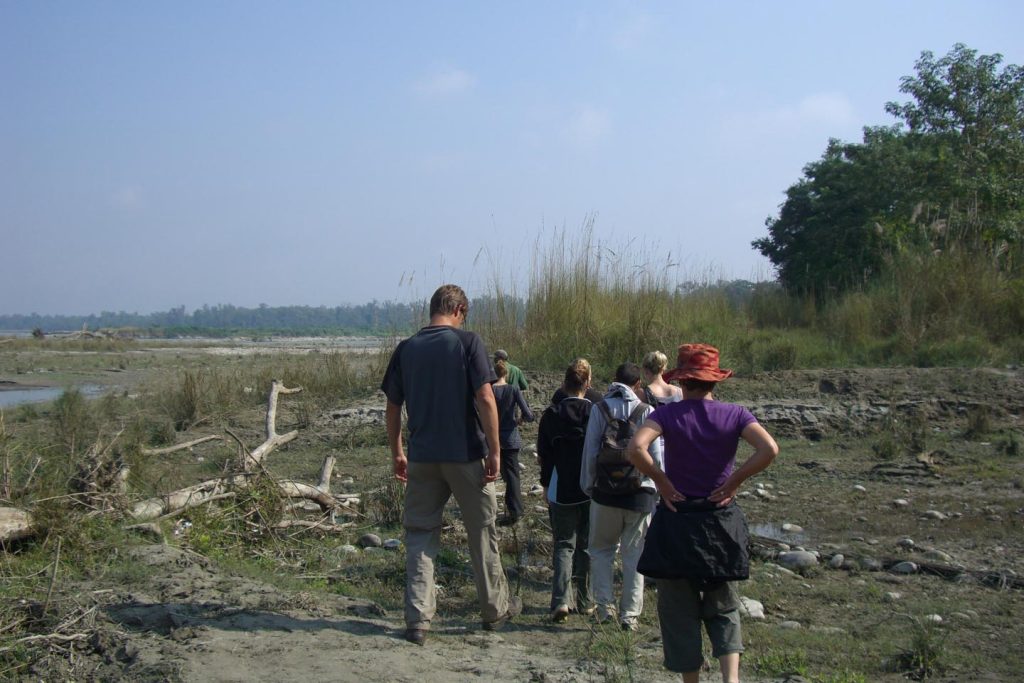
Being the post monsoon period, the autumn season adds a hint of freshness to the lush landscapes of the national parks while the animal and bird activity is equally high making it the ideal time with perfect temperature.
During the months of monsoon, you will experience lots of rainfall in these forest areas which might disrupt your experience of wildlife. And in winters, the wildlife activity is quite less with some of them being in hibernation.
Chitwan jungle safari and Bardiya jungle safari are some of the various options available for wildlife exploration in Nepal.
Best time for Mountain Biking
For those wanting to explore the Himalayas on two wheels, spring and autumn are the best seasons featuring clear skies, optimal temperatures, and crystal-clear visibility on the biking trails.
Famous biking trails like the Annapurna Circuit biking trail are adorned with lush greenery and vibrant hues of flowers making it a pleasant experience for the bikers.
The clear skies also allow you to get a perfect view of the Himalayas as you explore the rugged terrains.
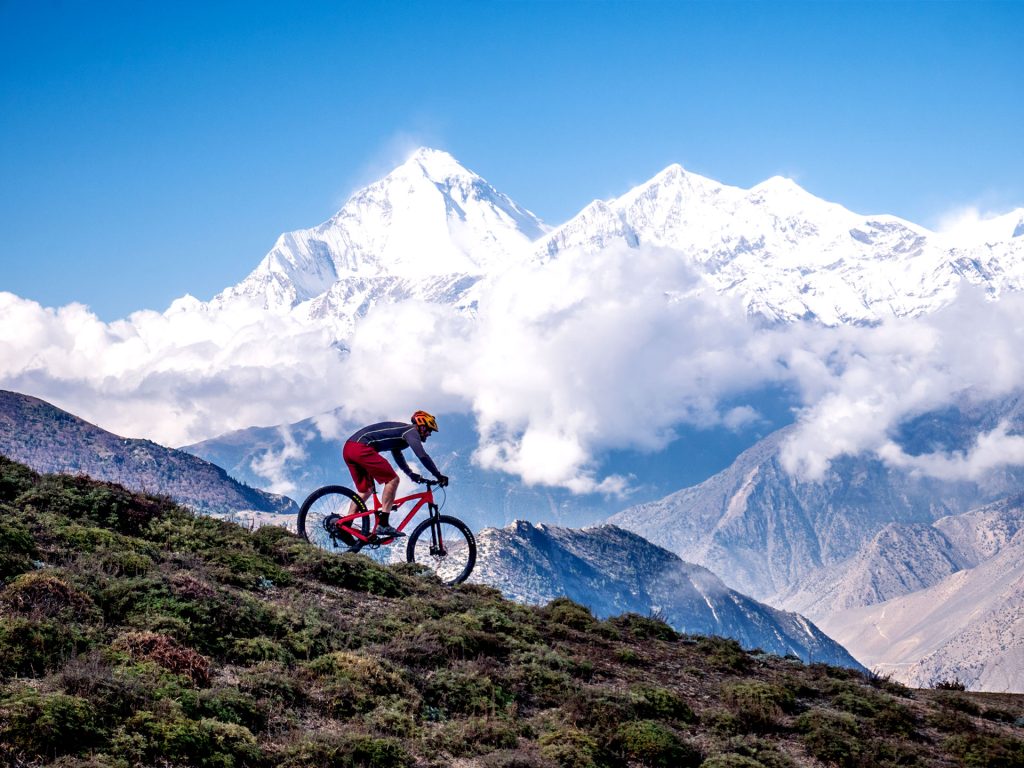
But expect a lot of bikers traffic on the trails as these seasons are the peak seasons with overflowing tourism in Nepal. Monsoon is avoided for obvious reasons of the trail being extremely slippery and hazardous.
Likewise, winters bring unbearable temperatures with frost bites being common especially for bikers. However, the perfect season also depends on factors like your preferences and your experience.
For seasoned bikers, rare adventures like mountain biking in winters and biking in the trans-Himalayan zones such as Upper Mustang biking during monsoon can be a whole new experience.
Best time for Helicopter Tours
One can aerially explore the stunning landscapes of Nepal through different helicopter tours like Everest Base Camp helicopter tour , Pokhara and Annapurna heli sightseeing , and Langtang heli sightseeing to name a few.
The best time for helicopter tours is Nepal is based on different factors, mainly on the visibility for the flight and the visibility of the landscapes. Therefore, clear skies with clear weather should be your priority.
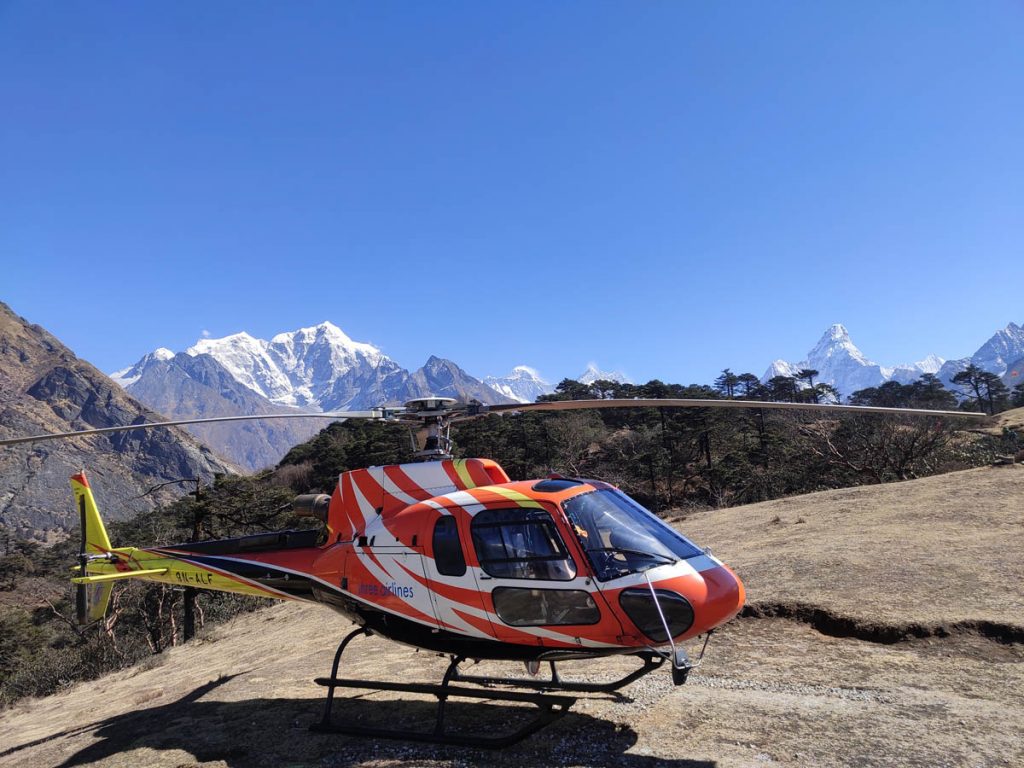
Considering these things, the months of spring and autumn again come to your rescue. These seasons feature exceptional visibility allowing the visitors to get a bird-eye view of the beautiful landscapes of the country.
Helicopter tours during monsoon and winter are highly affected by the unpredictable weather including heavy rainfall and snowfall at higher elevations. While winters present the Himalayas in all its might, it can be a risky adventure.
Morning helicopter rides give a better experience as the winds are slow giving better aerial stability and views. However, they can be quite costly during the peak seasons.
Related Blogs & Articles
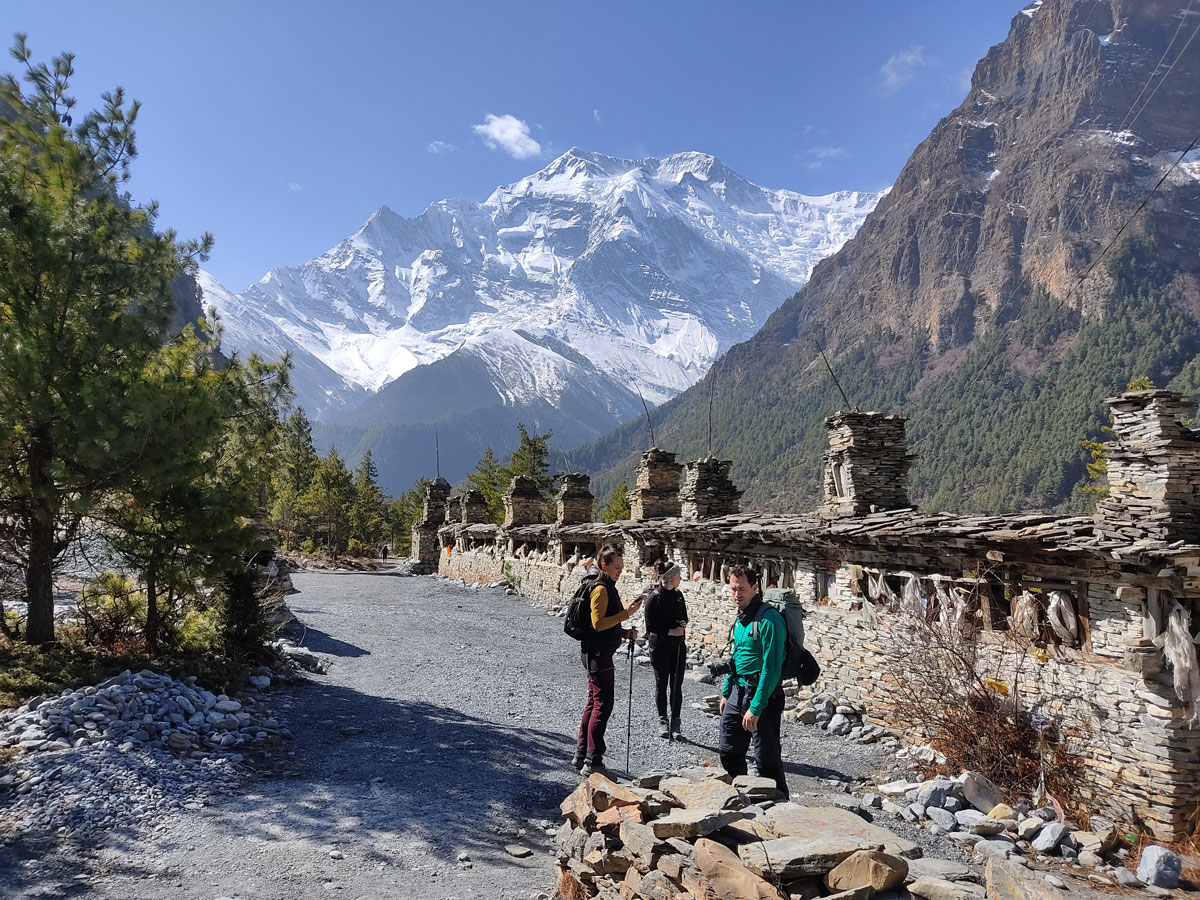
Everest Base Camp vs Annapurna Circuit
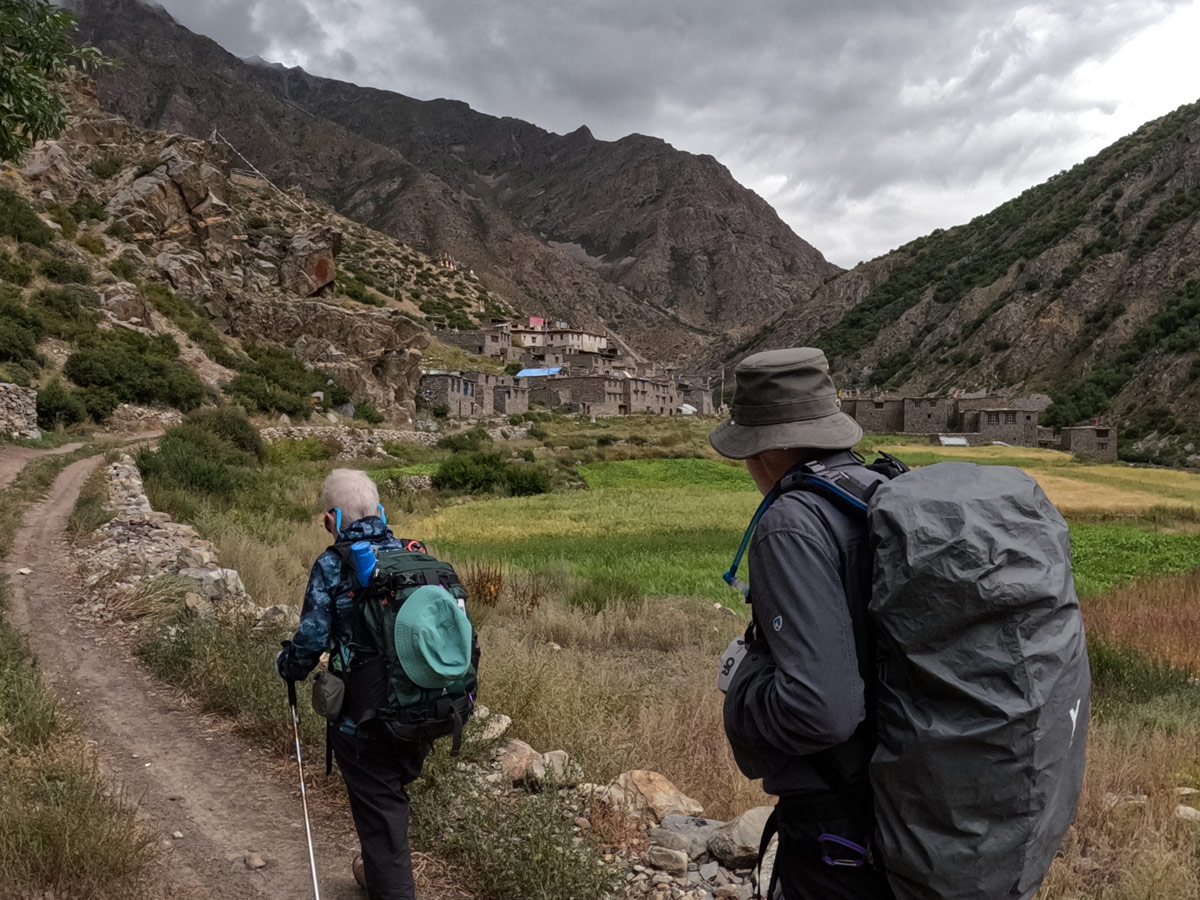
Off the beaten path Treks in Nepal
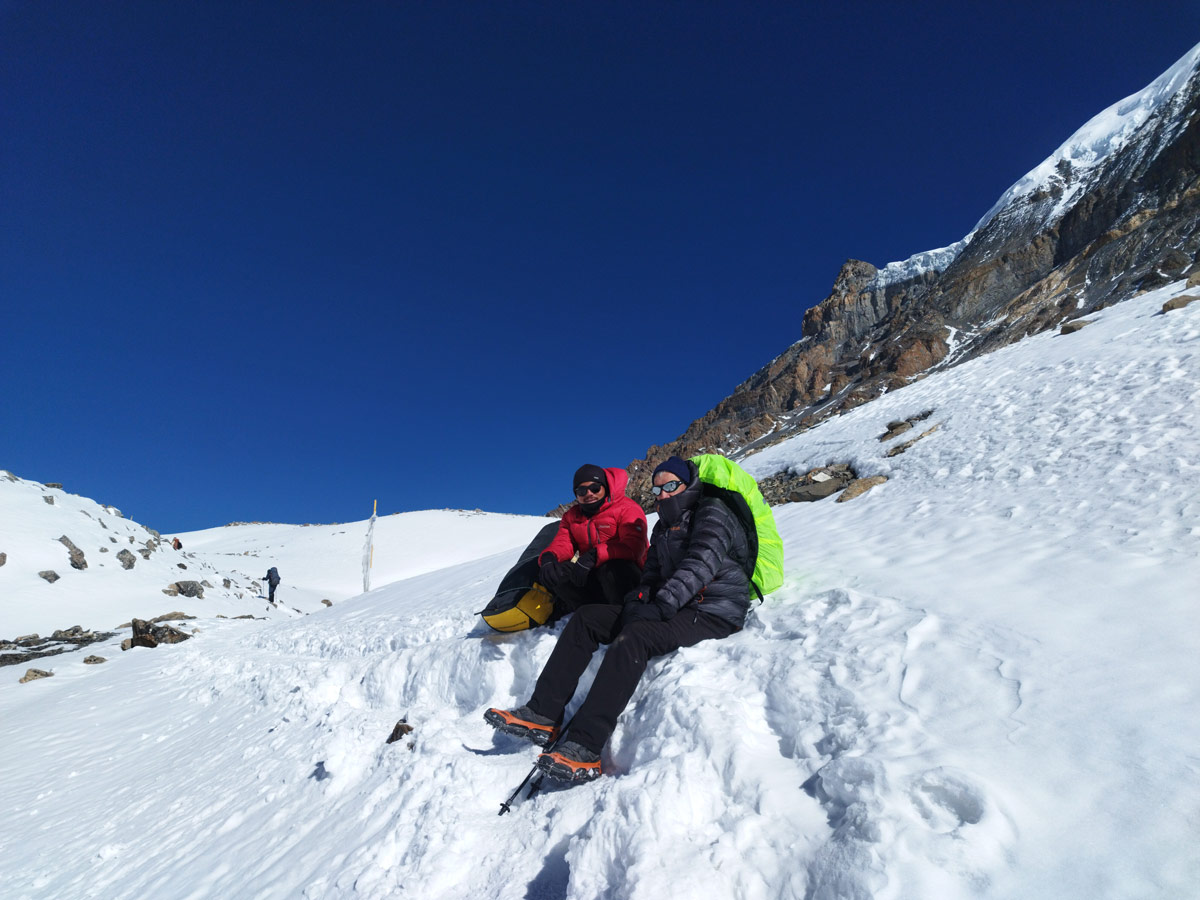
Mountain Passes of Annapurna Region

- Email This field is for validation purposes and should be left unchanged.
Trekking in Nepal
Climbing and expedition, cultural tour and sightseeing, cycling and mountain biking, luxury treks, luxury tours, multi country tours, voluntourism trips, extend your trip.
- Everest Panorama Trek – 9 Days
- EBC Trek with Helicopter Return – 12 Days
- Everest Base Camp Trek – 14 Days
- Gokyo Lake Trek – 13 Days
- Gokyo and Renjo La Pass Trek – 14 Days
- Everest Base Camp Trek without Lukla Flight – 17 Days
- Gokyo to Everest Base Camp Trek – 17 Days
- Everest Base Camp with Island Peak – 19 Days
- Everest Three Passes Trek – 20 Days
- Everest High Passes and Island Peak – 23 Days
- Classical Everest Base Camp Trek – 21 Days
- Langtang Valley Trek – 10 Days
- Langtang Valley Ganja La Pass Trek – 14 Days
- Langtang Helambu Trek – 17 Days
- Ghorepani Poon Hill Trek – 9 Days
- Mardi Himal Trek – 10 Days
- Annapurna Base Camp Trek – 13 Days
- Himalayan Highlights – 13 Days
- Nar Phu Valley Trek with Annapurna Circuit – 18 Days
- Annapurna Circuit Trek – 19 Days
- Tilicho Lake Trek With Thorong La Pass – 19 Days
- Khopra Danda Trek – 11 Days
- Shivapuri-Chisapani Trek – 4 Days
- Upper Mustang Trek (Drive & Trek) – 16 Days
- Tsum Valley Trek – 16 Days
- Manaslu Circuit Trek – 15 Days
- Dhaulagiri Circuit Trek – 21 Days
- Upper Dolpo Trek – 25 Days
- Kanchenjunga Base Camp Trek – 29 Days
- Yala Peak Climbing – 13 Days
- Island Peak Climbing – 15 Days
- Mera Peak Climbing – 19 Days
- Everest Base Camp and Lobuche East – 18 Days
- Tent Peak Climbing with Annapurna Base Camp – 18 Days
- Pisang Peak and Thorung La Pass – 21 Days
- Ama Dablam Expedition – 29 Days
- Kathmandu Cultural Heritage Tour – 3 Days
- Kathmandu Heritage – 3 Days
- Inheritances of Kathmandu – 4 Days
- Glimpses of Kathmandu & Nagarkot – 5 Days
- Kathmandu and Pokhara Unveiled – 5 Days
- Explore Kathmandu – 6 Days
- Glimpse of Nepal – 8 Days
- Nepal Heritage Tour – 10 Days
- Nepal Adventure Tour – 11 Days
- Nepal Multi Sports Adventure – 11 Days
- Nepal Vista – 10 Days
- Nepal Highlights – 14 Days
- Experience Nepal – 15 Days
- One Day Biking Trip – Kathmandu – 1 Day
- Annapurna Circuit Biking – 14 Days
- Upper Mustang Biking – 16 Days
- Kathmandu Valley Rim Biking – 8 Days
- Annapurna in Luxury – 9 Days
- VVIP Everest Base Camp Trek – 10 Days
- Everest View Luxury Trek – 11 Days
- Everest Base Camp Luxury Trek – 14 Days
- Everest Base Camp Deluxe Trek – 16 Days
- Mt Everest Base Camp to Gokyo Trek – 19 Days
- Kathmandu Luxury Tour – 3 Days
- Kathmandu and Pokhara Luxury Tour – 5 Days
- Nepal Multi Sport Luxury Adventure – 11 Days
- Best of Nepal – 14 Days
- Trishuli River Rafting – 1 Day
- Everest Base Camp Helicopter Tour – 1 Day
- Everest Base Camp Heli Tour with Gokyo Extension – 1 Day
- Langtang Heli Sightseeing – 1 Day
- Pokhara and Annapurna Heli Sightseeing – 1 Day
- Paragliding in Nepal (Pokhara) – 1 Day
- Scenic Mountain Flight (Everest Flight) – 1 Day
- Ultra Light Flight – 1 Day
- Jamacho Day Hike-One day hiking trip – 1 Day
- Kathmandu Uncovered with Nagarkot – 1 Day
- Day Tour to UNESCO Heritage Sites – 1 Day
- Nepal and Tibet – 15 Days
- Nepal and Bhutan – 15 Days
- India, Nepal and Bhutan – 19 Days
- Nepal, Tibet and Bhutan – 20 Days
- Arupokhari School Volunteer Program – 14 Days
- Rebuild Home Volunteer Program – 9 Days
- Bardiya Jungle Safari – 4 Days
- Chitwan Jungle Safari – 3 Days
Trekking in Bhutan
Festival tours, motorcycling.
- Druk Path Trek – 8 Days
- Chomalhari Trek – 12 Days
- Laya Ghasa Trek – 18 Days
- Bhutan Vistas Tour – 5 Days
- Cultural Heartland Tour – 10 Days
- Hidden Valley – 11 Days
- Bhutan Multi Sports Tour – 11 Days
- Paro Tshechu Festival – 8 Days
- Punakha Tsechu – 9 Days
- Trongsa Lhuntse Tshechu – 9 Days
- Bumthang Tangbi – 11 Days
- Bhutan Ura Yakchoe – 12 Days
- Tamshingphala Choepa – 12 Days
- Mongar and Trashigang – 16 Days
- Bhutan Biking – 8 Days
- Bhutan Motorcycle Tour – 12 Days
Trekking in Tibet
- Tibet Advance Everest Base Camp – 21 Days
- Cho Oyu Expedition – 45 Days
- Shishapangma Expedition – 47 Days
- Everest Expedition via North Side – 63 Days
- Kathmandu and Lhasa Tour – 7 Days
- Tibet Heritage Tour – 8 Days
- Overland Tour to Everest Base Camp – 10 Days
- Mount Kailash Mansarovar Lake Tour – 15 Days
- Everest Base Camp Biking Tour – 21 Days
Best time to visit Nepal

The best time to visit Nepal is pre- and post-monsoon (March to April and September to November), especially if you want to go trekking . Spring (March to May) is a particularly beautiful season as the rhododendrons are in bloom. That being said, there’s still lots to do even in the off-season (not to mention a jam-packed calendar of cultural and religious festivals), so you're bound to have a brilliant trip no matter when you go. Here’s our month-by-month guide to travel in Nepal.
Best for: crowd-free trails, clear skies, wildlife spotting in Chitwan National Park
January is a magical time to trek in the Himalayas thanks to little to no rainfall. Despite being the coldest month, there are consistently clear skies and the mountain views are some of the best all year. Popular treks like Everest Base Camp and the Annapurna Circuit typically aren’t busy, so there’ll be less foot traffic and fantastic photo ops on the trails.
If trekking isn’t your thing, January is slap bang in the middle of the dry season in Chitwan National Park, so it’s an ideal time to spot wildlife. It can be hectic in the capital of Kathmandu and other major cities due to domestic travelers celebrating the New Year, but it's a great time to immerse yourself in Nepalese culture if you enjoy the hustle and bustle.
Best for: trekking, small crowds, Maha Shivaratri, Tibetan New Year
The bite of winter in the high Himalayas eases towards the end of the month, and signs of spring start appearing. As an off-season, the trails are still crowd-free and sunny skies make for near-perfect trekking conditions (win-win!).
February is also a great month to experience some of Nepal’s major religious festivals. One of them is Maha Shivaratri, an auspicious Hindu festival that sees thousands of devotees gathering at Kathmandu’s Pashupatinath Temple to pray, chant and take part in rituals to worship Lord Shiva.
There’s also the Losar festival (Tibetan New Year) celebrated by the Sherpa, Tibetan, Tamang, Bhutia and Yolmo peoples. Each community has unique traditions, but they often involve ceremonial dances at local monasteries and family feasts of chaps (deep-friend pastries), guthuk (dumpling soup) and other specialties. You’ll undoubtedly be invited to join in the festivities if you’re trekking in the Himalayas.
Best for: Holi festival, trekking, spring blooms
One word: Holi! Nepal is a predominantly Hindu country, and Holi is a big deal. This ancient Hindu festival celebrates the eternal love between deities Radha and Krishna and the welcoming of spring. Expect a riot of color, folk music, roaring bonfires and lots of laughter as you join locals to (literally) throw bright-colored powders over each other.
March also marks the first of Nepal’s two peak trekking seasons (the other being September to November). The days get longer, and some higher-altitude trails become accessible again. The highlight of trekking in March is the beautiful rhododendrons that bloom and add a splash of red and pink to the (already incredible) landscape – there’s no sight quite like it. Some of the prettiest flowers are in Langtang Valley and the Everest Region.
Best for: trekking, spring blooms Bisket Jatra
April is one of the busiest months in Nepal, and for good reason. The warmer weather creates ideal conditions to tackle higher passes, and mountain meadows and forests are filled with sweet-smelling blooms. It can get quite hot towards the end of the month, with temperatures in Kathmandu and Pokhara reaching the low 30s. If you’re not keen on the heat, head out of the city to the Trisuli River to enjoy cooler temperatures and fresh air.
April also sees the eyebrow-raising festivities of Bisket Jatra, a nine-day festival to welcome the arrival of spring. Celebrated in Bhaktapur Durbar Square and Thimi, a massive chariot of two deities, Bhairav and Bhadrakali, is pulled through the city and two neighborhoods battle it out in an intense tug of war to bring it to their area. Crowds also throw vermillion powder over each other while singing folk songs and dancing in the streets.
Best for: trekking, Buddha Jayanti
May is the last month of spring (and the final month to trek before the monsoon). Temperatures begin to climb with hot and sticky conditions in Kathmandu Valley and Pokhara, but it’s glorious weather to hike up the mountains where a cooler climate awaits. Afternoon showers become more frequent towards the end of the month, but it’s usually not wet enough to disrupt your travel plans.
A highlight in May’s festival calendar is Buddha Jayanti, AKA Buddha’s birthday. Celebrated on May's full Moon, locals decorate their homes with pretty butter lamps, visit temples and monasteries in white clothing to make offerings and pray, and eat kheer (a sweet rice pudding).
Best for: thinner crowds, cultural activities
June marks the start of summer and the rainy season. While it doesn’t rain all day, you can expect some rain every day (the afternoons usually bring heavy downpours). Trekking isn’t recommended during the monsoon as the trails are muddy (and you’ll likely encounter leeches), rivers swell and thick cloud cover can hide the mountains.
If you don’t mind the heat, there’s plenty to do in Kathmandu (even when it’s raining). Stroll the city’s frenetic streets alongside holy men, monks and sacred cows, peruse the markets and bazaars or watch pilgrims bathing along the banks of the sacred Bagmati River.
Best for: scenic flights over the Himalayas, cultural activities
July is one of the quietest months in Nepal. Trekking isn’t recommended in some areas as the monsoon rains saturate the ground and increase the risk of landslides, though hikes in Kathmandu Valley are still doable. Frequent road closures can also make it challenging to get around.
If you’re itching to see the Himalayas, why not take off on a scenic flight from Kathmandu? You’ll be treated to stunning views of the Himalayas in just an hour. You could also learn how to whip up Nepalese fare at a cooking class or visit one of the city’s many temples.
Best for: Twenty Thousand Lakes, Everest Base Camp trek with small crowds
The rain eases at the end of August and the landscape starts flourishing with greenery again. Everest Base Camp treks kick off again, and while it's warm and wet at lower elevations, the weather will get cooler and drier as you ascend the mountains. The plus side is that there aren’t as many trekkers, so you’ll have the views (almost) all to yourself.
August is also a great month to visit Twenty Thousand Lakes (Bis Hajaar Tal) near Chitwan National Park. Explore a maze of small lakes teeming with wildlife, including crocs and hundreds of migratory bird species. If you’re lucky, you might spot the Indian rhino.
Best for: trekking, white water rafting, Indra Jatra festival
The monsoon usually ends mid-September and clouds make way for blue skies. Hikers return to the trails in large numbers towards the end of the month as conditions continue to improve and teahouses (guesthouses) open up again. With high river water levels, thrill seekers can get their kicks on a white water rafting adventure on the Trisuli, Bhote Kosi or Upper Seti rivers.
If you’re in Kathmandu, be sure to check out the Indra Jatra festival, where you can watch the chariot of Kumari, Nepal’s Living Goddess, carried through the streets to a procession of loud drums.
Best for: trekking, white water rafting, camping by the Trisuli River, Dashain
October marks Nepal’s second trekking season of the year. Trail conditions are near-perfect, and you’ll be treated to incredible views of the Himalayas thanks to clear skies. If you want to tick off Base Camp, Annapurna or Poon Hill, now’s the time. Just remember that it’ll be busy (October is one of the peak tourist months).
White water rafting season is also in full swing, and now that the heavy rain has stopped, you can camp under the twinkling Nepalese skies on the banks of the Trisuli River. Culture vultures will also love Dashain, a two-week festival in honor of the Hindu goddess Durga. Expect elaborate pujas (prayer rituals), feasts, kite flying, and sword and music precessions.
Best for: trekking, Diwali
Prime hiking conditions continue into November with very little rain, low humidity and clear skies. The temperature gets considerably colder, but a few extra warm layers are worth it for the unobstructed vistas.
If you’re around for Tihar (also known as Diwali), you’re in for a real treat. Hindus, Jains and Sikhs celebrate this religious festival to deter darkness with light and celebrate the triumph of good over evil. Thousands of lights illuminate Nepal's cities and towns, fireworks light up the sky and locals draw beautiful mandalas outside their homes.
Best for: wildlife watching in Chitwan National Park, smaller crowds
Crowds start to thin out as icy temperatures take hold. However, the weather is mostly dry, so if you don’t mind layering up, it can be a magical time to explore with a backdrop of the snow-clad Himalayas. It’s much warmer on lower ground and in the country's southern reaches, which can see highs of 77°F.
December is one of the best months to discover wildlife in Chitwan National Park as it’s dry and the visibility is excellent. You might get lucky and spot tigers and larger animals as they tend to congregate around waterholes.
Let's create an exclusive trip for your group.
The silly side of small group travel you have to experience to understand
Yeah the girls: meet the female leader challenging gender norms in Nepal
It’s official: Phurba Sherpa is the world’s best outdoor guide
The top 10 destinations to travel in May 2024
What to pack for a hike: An essential checklist
Meet the 3 Intrepid leaders nominated for the 2023 World Guide Awards
10 awesome places to go for your 21st birthday
Peak romance: The intrepid couple who met trekking to Everest Base Camp
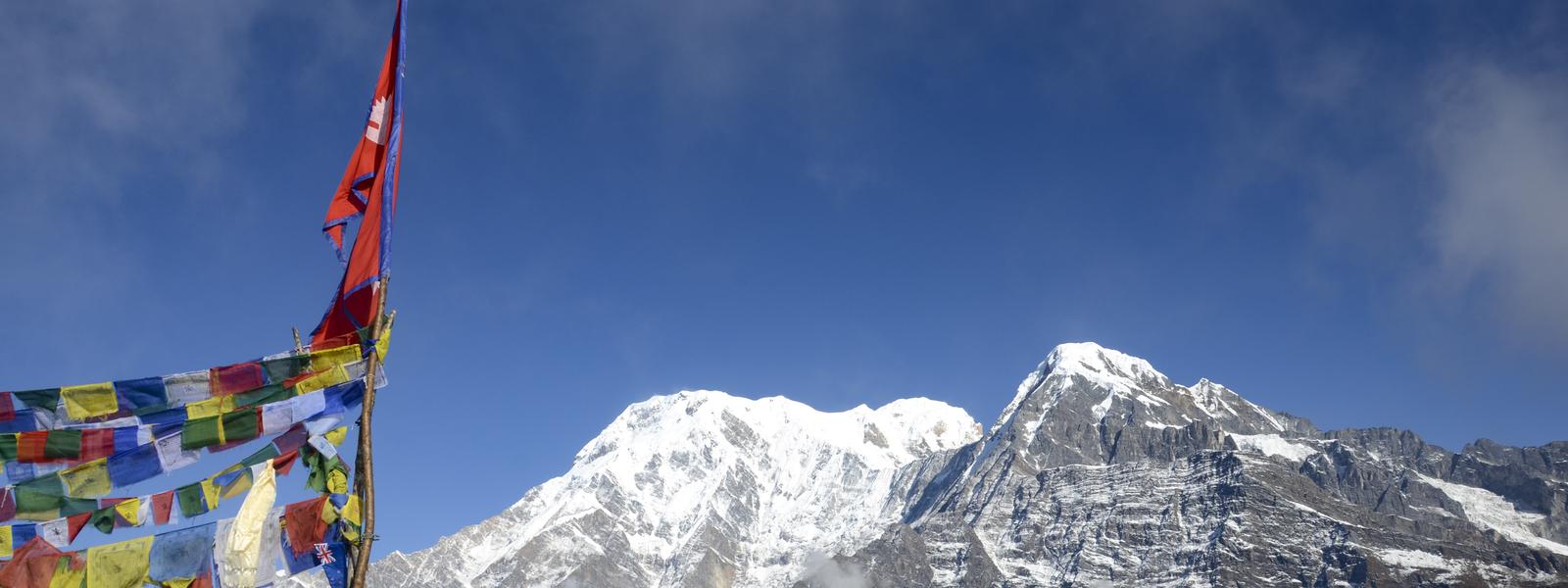
When to go to Nepal
When is the best time to visit Nepal?
The best time to visit Nepal is during Autumn with dry days, clear blue skies and great trekking conditions. Spring is also popular as the temperatures begin to rise, and the countryside looks even more spectacular.
Nepal weather & when to go
Pick a month below.
Weather seasons are becoming less predictable but peak visitor months remain more certain.
Unfollow the herd - avoid the peak months to enjoy fewer crowds, better availability, often lusher countryside and help to spread the economic benefits of tourism.
Weather overview
Nepal monsoon season.
Nepal's annual monsoon takes place between June and August . Fat rain clouds bubble up over the sea south of India and sweep across the country where they collide with the cooler air of the Himalayas, dropping their rain in torrential fashion. Most parts of the country experience sudden sharp downpours, although some mountainous areas remain pretty dry year-round, sheltered from the rain by the mighty Himalayas. The Upper Mustang region and sections of the Annapurna circuit, in particular Jomsom, in the rain shadow gets just 30mm of rain mid-monsoon in August, while Pokhara is drenched in 850mm. Even in peak monsoon season it rarely rains for long periods, and more intrepid visitors will enjoy having the cultural sights and drier trekking trails almost to themselves.
Nepal seasons and climate
Seasons in Nepal can be divided roughly into four seasons, although (as with weather conditions worldwide) these seasons are increasingly blurred. From the lowlands close to the Indian border to the 8,850m peak of Mount Everest, Nepal's climate is hugely altitude dependent. The landscape divides into three quite distinct zones. The Terai zone, located in the south, runs along the border with India, with some areas virtually at sea level. A belt of often humid, jungle and farmland, the temperature in the Terai, for example in Janakpur, can often hit 35°C. It's home to two of the country's most impressive national parks, Chitwan and Bardia, both of which are home to the rare One-Horned Rhino, and iridescently colourful birdlife.
The country’s heartland - Pahar - is a wide stretch of rolling foothills and valleys, where villages perch on the hilltops and bright green paddy fields step down the contours. The Kathmandu Valley is located within this area. Crammed with spectacular ancient cities and villages trapped in time, it's a treasure trove of cultural delights, buzzing markets and streets packed with colour and noise. Temperatures here tend to be pleasantly warm year-round, perfect for exploring, though you’ll need a fleece in the evenings and early mornings during winter months.
At the northern reach of the country, bordering Tibet and rising to exceptionally high altitude, there's the Himalaya mountain range. It's a wildly beautiful panorama of jagged snow-capped mountains, glacial lakes and flower-strewn valleys. No matter where you are in Nepal, on a clear day those lofty peaks loom above everything. In this region, places like Namche Bazaar, which sits at an altitude of 3,450m, experience temperatures of -7°C at night.
Winter in Nepal
Winter occurs from late November to February and is typically rain-free and clear. High altitude areas above 3,000 metres will be snowy and very cold indeed with night time temperatures of -10°C not uncommon. Whilst you won't want to venture towards Everest Base Camp, lower altitude treks are quite feasible at this time of year if you come properly prepared for the chill. Even in the Kathmandu valley and the flat plains it gets cold at night with temperatures hovering around 3°C so you should pack a warm fleece for the evenings. Winter is low season for tourists and a great time of year to visit places like Pokhara and the national parks on the plains.
Spring in Nepal
From March onwards spring makes its appearance, the temperatures climb and the flowers on the hillsides burst into bloom. You'll see vast swathes of pink and red rhododendrons in particular. Spring is a popular time of year to visit Nepal. Long grasses in the national parks have been cut back so visibility for rhino spotting is excellent; trekking conditions are perfect, with daylight hours lasting longer into the evening, and so tea houses and treks at higher altitude open up again. The only downside is the haze that often swathes the peaks at this time of year.
Summer in Nepal
Summer brings the monsoon months of June, July and August with the rains really hitting their peak during August. Flash floods are not uncommon, washing away roads and making some journeys problematic. Internal flights are often disrupted by low-level cloud. It rains daily, though often only for a couple of hours and usually overnight, leaving mornings fresh and bright at first. If you come prepared (pack wet weather gear), and rise early to make the most of the mornings, then a visit to Nepal during summer still has much to offer, especially for cultural pursuits. Daytime temperatures are a warm but not unpleasant 27°C. Trekking isn't totally off the agenda, with certain areas of the mountains tucked in the Himalayan rain shadow. If you venture to Manag, Mustang or Dolpo you'll have many trails to yourself.
Autumn in Nepal
By mid-September the rains have abated and autumn is well on the way. Visibility at this time of year is exceptional as the smog and haze have been washed away by the monsoon. It's the most popular time of year to visit Nepal with conditions ideal for trekking , wildlife viewing and cultural exploration alike. October and November are particularly good months if you want to see Nepalese culture at its most vibrant as two of the most important festivals - Dasain and Tihar - are celebrated at this time. Expect street parades, decorated houses and temples, dancing and singing long into the night.
We think you may like this journey…
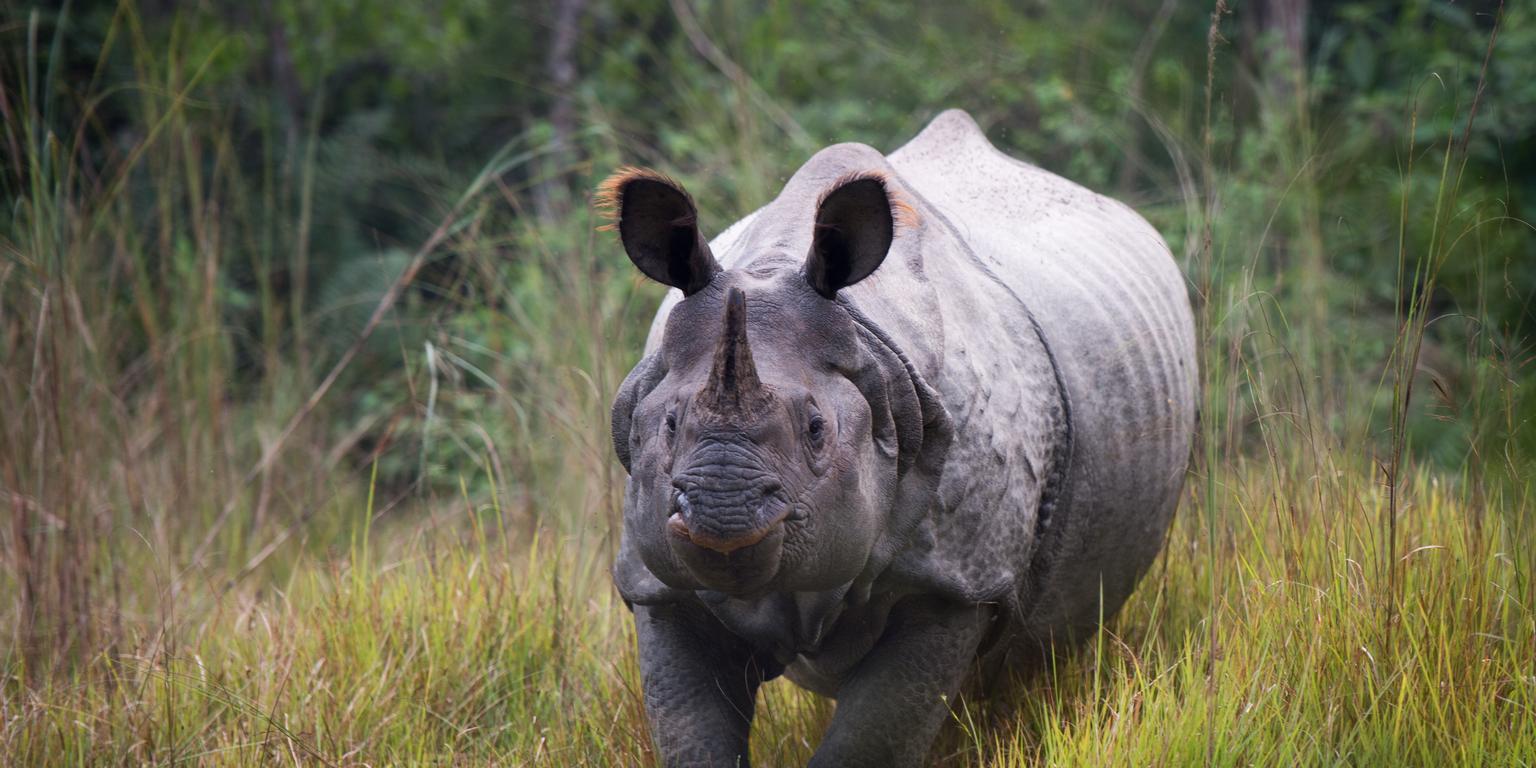
Rhinos & Rhododendrons
Taking an alternative approach to a classic Nepal combination, this journey contrasts the heady and hectic streets of Kathmandu with the open savannah of Chitwan National Park. Slow down to search for tigers and rhinos amid the wilderness, before strapping up your boots for a light trek between two atmospheric lodges in the Himalayan foothills around Pokhara.
Looking for inspiration?
- Skip to content
- Skip to primary sidebar
Full Time Explorer
Nepal Travel Blog
The Best Time to Visit Nepal for Travel
Best Time to Visit Nepal / December 9, 2018 by fulltimeexplorer / Leave a Comment
A question I get asked constantly is, “When is the best time to visit Nepal?” Honestly, the question seems simple, but it really matters what you’re looking for. Is the weather, seeing local culture, avoiding crowds, or getting a good deal the most important to you? Which part of Nepal will you be visiting, or is there a specific trek you’d like to do during your time? All of these things can be factored in to decide what time of year is best to visit.
Winter in Nepal
You might also like…, the best time to visit nepal by season, peak season in nepal (spring & fall).
Peak season is generally March-May & September-November
This is peak season because it’s the best time to go trekking or mountaineering. According to the Nepal Tourism Board , 70% of travelers visiting Nepal say that Trekking is their number one reason for visiting the country. Since most of Nepal’s tourism revolves around these two activities, people flock to the country during these months.
Monsoon Season in Nepal (Summer)
Monsoon season is generally from June – August
Most people don’t go trekking or visit Nepal in monsoon season because the roads and trails are not safe. Nepal is prone to landslides, mudslides and falling rocks making it difficult to get around the country. Having spent all four seasons in Nepal, I can honestly say that monsoon is my least favorite. It’s not all bad though, you can check out my post on the pros and cons of monsoon season for more info.
Winter is from December – February
Most people avoid Nepal in the winter because trekking routes are often closed. At high altitudes, snow is heavy this time of year and it’s dangerous to trek or climb. Avalanches are a major risk during the winter along with freezing temperature and white out conditions. On the other hand, low altitude trekking is beautiful as the views of the mountains tend to be very clear. I did the Kathmandu Valley Trek in January, and it was great.
Areas like Lumbini, Chitwan, and Bardia can be too hot in peak season, so going in the winter is nice. It’s also the optimal time to do a safari and see the rare Bengal tiger.
Although winter can be super cold in some areas, it’s still worth considering for a visit. Plus, very few people visit this time of year, so you’ll get a unique experience and lots of discounts.
The Best Time to Visit Nepal by Month
According to the Nepal Tourism Board, the most popular months to visit are October and March which see upwards of 100,000 tourists. The slowest and least popular months are June and July which receive half as many tourists as October and March.
In order to keep this post short and sweet, I’ve gone ahead and created a blog post for each month of the year. These posts contain information on weather, trekking conditions, things to do, safety, wildlife spotting, and festivals!
- January in Nepal
- February in Nepal
- March in Nepal
- April in Nepal
- May in Nepal
- June in Nepal
- July in Nepal
- August in Nepal
- September in Nepal
- October in Nepal
- November in Nepal
- December in Nepal
The Best Time To Trek in Nepal
It’s best to trek in Nepal between March and May or between September and November.
In the winter (December-February), it’s very cold in the mountains. There’s a greater chance of freezing temperatures and heavy snowfall. This can cause problems that include avalanches as well as difficult to follow trekking trails.
In monsoon season (June-August), it rains for a few hours almost every day. While the temperature is warm, you’ll have a sky full of clouds. This means you might miss out on views of the Himalayas. It’s also a dangerous time to trek because of landslides. Landslides and rock fall are also common on roads. While you will probably be okay traveling by bus or car, you may experience major delays. My friends ended up on a 24-hour bus ride which was only supposed to take 8 hours because the road washed out.
The Best Time to Visit Nepal & Avoid Crowds
I like traveling during monsoon season because it’s easy to avoid crowds. I did the Annapurna Circuit just before monsoon started in the last two weeks of May and the first week of June. The trail was empty. It was so empty that there were nights when we were the only tourists in a village. It was fun because the 20 or so other people trekking at the same time as us formed a crew. We’d keep meeting up after a few days and everyone knew each other. During peak season you may share the trail with 1,000 other trekkers.
You can also avoid the crowds in winter. Most trekking trails are closed during these months but low altitude trekking is beautiful this time of year. It’s also a great time to explore the warmer areas of Nepal like the Terai. I prefer winter over monsoon simply because there is more to do. You can go on a wildlife safari in one of the national parks. You can do low altitude trekking around the Kathmandu Valley. The skies are clear with perfect views. The only down side is that it can be extremely cold and high altitude trekking is limited.
The Best Time to Visit Nepal & Experience the Culture
If culture is what you’re after, then it’s best to go in October or November which is festival season in Nepal. You can celebrate Dashain and Tihar during that period. Nepal uses a different calendar than we do, so it’s hard to say the exact date since it changes every year. It’s best to look up the dates for the specific year you are planning to go.
Dashain is a festival that lasts 15 days. In Nepal, there are many ethnicities and castes, therefore the festival represents different things and is celebrated different ways throughout the country. The main theme is to spend time with friends and family. Throughout the festival you can see celebrations at Durbar Square along with animal sacrifices.
Tihar is my personal favorite festival because it’s easier for tourists to get involved. It’s the “festival of light” which lasts about a week. Each day represents a different thing. You can feed rice to crows who are viewed as messengers or worship a dog who is seen as a guardian. You can even put flowers around the neck of a cow, the Hindu god and worship Laxmi , the goddess of wealth. It’s especially beautiful because of all the lights and dancing in the streets at night.
The Best Time of Year to Visit Nepal on a Budget
Traveling during off season is a great way to save some money. Most places have an off-season price which can be half off the peak season price. This is amazing for someone who wants to save some money especially on big ticket items like paragliding. On the other hand, you might save more money by trekking during peak season. While it might cost more for rooms, the trekking trails are so crowded that you might not need a guide. During off season, it’s a little foolish not to have a guide unless you have previous high altitude trekking experience. If you’re unsure about whether or not you need a guide, you can read this post on choosing a guide or going solo.
The Best Time to See Tigers in Nepal
While the best time of year to visit Kathmandu, Pokhara, or the mountains is during peak season, it may not be the best time of year to see all of Nepal. For instance, those who want to visit the national parks have a wider window. Nepal is famous for being one of the few locations you can see Bengal tigers in the wild. It’s advised to visit Bardia National Park or Chitwan National Park from September to December . During monsoon season, it’s nearly impossible to spot a wild tiger since they rarely come to the watering hole.
What is your priority when visiting Nepal? If you don’t see the answer to your question, leave it in the comments.
Michelle Della Giovanna
Writer at Full Time Explorer
I’m just your average New Yorker who quit her job in the fashion industry to explore the world. Come find out what it’s like to trade in five-inch heels for squat toilets.
- Visit Twitter account (opens in a new tab)
- Visit Facebook account (opens in a new tab)
- Visit Instagram account (opens in a new tab)
- Visit Pinterest account (opens in a new tab)
This website uses affiliate links. This means that I may receive a small commission (at no extra cost to you ) if you purchase something through these links. I only link to products and companies that I love. Those companies, in return, reward me for connecting them to you .
Full Time Explorer LLC is a participant in the Amazon Services LLC Associates Program, an affiliate advertising program designed to provide a means for sites to earn advertising fees by advertising and linking to Amazon.com.
Reader Interactions
Leave a reply cancel reply.
Your email address will not be published. Required fields are marked *
- Nepal Tours
- Nepal Travel Guide
- When to Visit Nepal
Best Time To Visit Nepal
- Jan Avg Daily: 19 ° C Avg Nightly: 2 ° C
- Feb Avg Daily: 21 ° C Avg Nightly: 5 ° C
- Mar Avg Daily: 25 ° C Avg Nightly: 8 ° C
- Apr Avg Daily: 28 ° C Avg Nightly: 12 ° C
- May Avg Daily: 29 ° C Avg Nightly: 16 ° C
- Jun Avg Daily: 29 ° C Avg Nightly: 19 ° C
- Jul Avg Daily: 28 ° C Avg Nightly: 20 ° C
- Aug Avg Daily: 29 ° C Avg Nightly: 20 ° C
- Sep Avg Daily: 28 ° C Avg Nightly: 19 ° C
- Oct Avg Daily: 27 ° C Avg Nightly: 13 ° C
- Nov Avg Daily: 24 ° C Avg Nightly: 8 ° C
- Dec Avg Daily: 20 ° C Avg Nightly: 4 ° C
- 4.99K views
- ~ mins read
If you are looking for the best time to visit Nepal, you need to factor in things like weather, trekking seasons, national festivals, and more. The fall season, between mid-September to November, is the most popular time to visit Nepal when the conditions are cool and dry. The time is ideal for a trekking adventure in the Annapurna Circuit or the famous Everest Base Camp trek . These periods offer the driest conditions, and the winter snows that make the trails perilous have not kicked in yet. The fall season is also a perfect time to go whitewater rafting and canyoning in the monsoon-fed rivers and waterfalls.
Plan your Nepal trip from March to May or September to November to visit national parks in the southern plains. You can book a safari tour in Chitwan National Park to spot various animal and bird species, including the one-horned rhinoceros and Bengal tiger. The summer months of May to September see lots of rainfall in Nepal, making it the least ideal time to visit. The weather in the chart is based on Kathmandu .
- Palsang Sherpa
- From Swaziland
Quick Facts
Seasonal overview.
The seasons in Nepal are split into rainy and dry. But the country does experience all four traditional seasons.
Mid-September to November – Fall / High Season

Fall is undoubtedly the best time to visit Nepal, with October being the most popular month. The weather conditions are stunning during this period. The skies are clear, and there is little to no rain. Pretty much all the trekking trails are open for business, including Everest Base Camp . Fall is also the best time to explore the historical and cultural neighborhoods of Kathmandu Valley. But this is the peak season in Nepal, so expect higher rates and heavy tourist footfall.
Highlights:
- Trails in Annapurna, Everest, Langtang and Manaslu regions are adorned with blooming rhododendron forests and alpine meadows.
- Visit hill stations close to Kathmandu, including Nargakot and Dhulikhel , to see the Himalayas from your comfy hotel room.
- Two of Nepal's biggest festivals, Dashain and Tihar, are celebrated back to back in October. This is a great time to join in the festive spirit and learn more about the culture.
- Book all your accommodation way in advance, including tea houses if you are going trekking.
- To avoid crowds, choose the least visited trekking destinations like Makalu Base Camp, Nar Phu Valley trek , or Rara Lake.
- Fall offers the best conditions for white water rafting in Nepal , especially near the start of the season.
In-depth month-wise guides: Nepal in September Nepal in October Nepal in November
March to May – Spring / Good Season

Spring, which lasts from March to May, is the second-best season to visit Nepal after the peak fall season. This period sees rather warm temperatures all across the country. If you are thinking about trekking in Nepal without the high-season crowds, this is your best bet. Check out off-the-beaten destinations such as Upper Dolpa in the north, where the landscape is coming back to life after the winter season. If you are planning to stay in the city itself, make sure to attend Bisket Jatra, a new year’s festival celebrated by the indigenous Newar people of Bhaktapur .
- All treks can be undertaken during this period. You can even climb the Island Peak and Mera Peak .
- Spring is a great time for a sightseeing tour in Kathmandu . Discover cultural and religious sites such as Swayambhunath , Pashupatinath and Hanuman Dhoka.
- The weather is perfect for adventure sports like paragliding, bungee jumping and zip lining in the tourist city of Pokhara.
- As the second most popular season, remember to book all your trekking accommodation in advance, especially on busier paths like the Annapurna Circuit.
- If you want to explore more high-altitude passes and regions, avoid March, as the snow and ice might not have cleared yet.
- If you want to avoid hiking crowds in the fall, opt to join a trekking tour in spring.
In-depth month-wise guides: Nepal in March Nepal in April Nepal in May
December to February – Winter / Low Season
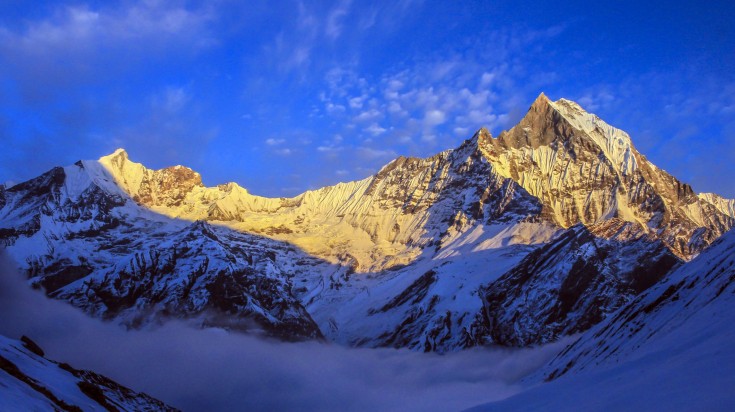
Winter in Nepal is not for the faint of heart. The season, which typically lasts from December to February, is characterized by biting cold in most parts of the country, foggy conditions in the southern plains, and heavy snowfall in the mountain region. As expected, winter is not considered among the best times to visit Nepal. Trekking in the Himalayas, the country’s top tourist draw is essentially off the menu—unless you are a highly skilled trekker or a mountaineer. It is best to limit your holiday activities to sightseeing and cultural tours. If you still want to have a trekking experience in Nepal, you can choose short hikes around Kathmandu Valley and Pokhara , where snowfall won’t be an issue.
- Popular tourist sites are less crowded and accommodations are cheaper during the low season.
- Nepal celebrates several events and festivals during winter, including the Tibetan New Year or Losar, Mahashivaratri and Saraswati Puja.
- Popular hill stations like Nagarkot and Dhulikhel are less busy during the winter months.
- Even though some major areas, like Everest Base Camp, are open, make sure to check specific routes. popular trails like the Everest Base Camp three Passes trek will not be open in the winter months.
- Wrap up warm and check out the cultural highlights of Kathmandu, such as the Buddha Stupa and Pashupatinath Temple.
- Check out the Lakeside Pokhara Street Festival held every December. The event, featuring street food and music, draws tons of locals and foreigners to the lake city.
Other related articles: Nepal in December Nepal in January Nepal in February
June to mid-September – Summer / Wet Season

The rainy season in Nepal, which typically runs from June to mid-September, is probably the worst time to visit the country. There are a couple of hours of heavy, intense rain almost every day and the hiking trails are often muddy with poor visibility. This is with the exception of the trek in the Upper Mustang region up in the north of Nepal, which is still relatively dry. If you want to save some money on low-season flights and hike in the north, this might be an option for you.
- An advantage of having the monsoon season is crowd-free experiences. You will also be able to get good rates at normally busy destinations such as Chitwan, Pokhara, and Bandipur .
- Marsyangdi Valley and Tilicho Lake (placed along the Annapurna Circuit) are absolutely beautiful this time of year and are known for their lush greenery and great views.
- Since this is the low season, you can get great deals on accommodation and transportation.
- Check out the museums around Kathmandu to avoid the rain, such as the Museum of Nepali Art.
- If you are planning on traveling around Nepal, double-check your transport options, as floods and landslides can block routes.
- The further north you go, the less likely your trip is going to be impacted by monsoon rains.
Weather in Nepal- Rainfall and Temperatures
In-depth month-wise guides: Nepal in June Nepal in July Nepal in August Summer in Nepal
Weather in Nepal can be rather moody, so as a visitor, it is important to understand the varied climate of this beautiful country. Once you have decided what season suits you best, you should consider the length of your stay. Bookmundi recommends spending at least two weeks in Nepal. But if you want to come up with your own itinerary, contact our travel experts and book a customized trip to Nepal .
Related Articles
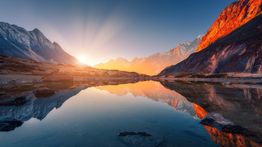
Nepal in January: Weather, Deals and More
January is the middle of winter and the colde... read more
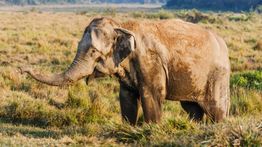
Nepal in February: Wildlife Sighting in Cold Weather
As February enters, the woes of winter start ... read more
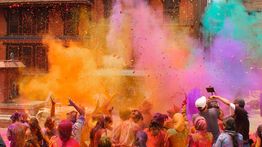
Nepal in March: Celebrations and Spring Weather
With the end of the winter season and the beg... read more
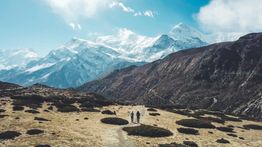
Nepal in April: Weather and Peak Season Tips
Looking for a great month to trek the Himalay... read more

Nepal in May: Clear Weather and Trekking Season
May is the end of one of two high seasons in ... read more
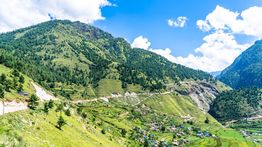
Nepal in June: Monsoon Weather Greenery
Although June marks the start of the monsoon ... read more
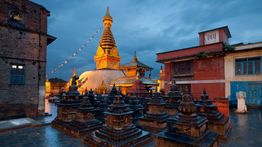
Nepal in July: A Monsoon Experience
July is an interesting month to travel to Nep... read more
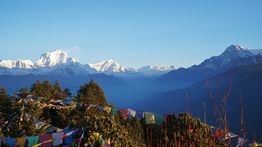
Nepal in August: Travel Tips for Monsoon Weather
Known for its high mountain peaks and spectac... read more

Nepal in September: The Start of Fall Season
Monsoon rains gradually dissipate all over th... read more
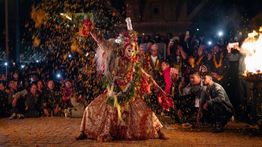
Nepal in October: Weather and Festivities
The fall season is the best time to visit Nep... read more
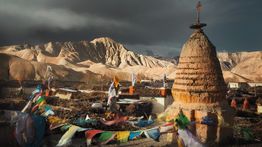
Nepal in November: Ideal Weather and Festivities
With the monsoon season long over and winter ... read more

Nepal in December: Weather, Tips & Trekking
While visiting Nepal in December might not be... read more
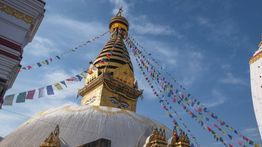
Summer in Nepal: Top Destinations and Weather Advice
Home to the mighty Himalayas and the vibrant ... read more
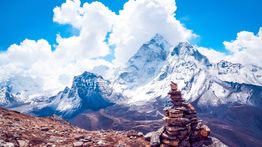
Winter in Nepal: Weather Tips and Top Destinations
Nepal is a treasure trove for travelers, not ... read more
Related Categories
- How Long To Stay In Nepal
- Nepal Travel Advice
- Trekking In Nepal
- What To Do In Nepal
- When To Visit Nepal
- Where To Go In Nepal

- D Dolma Tours Sep 14 2022 REPLY Thanks for sharing very well-written and worth reading this article. Wish to see more in the coming days.
- H Himalayan Trekking and Tours (P) Ltd Jun 07 2019 REPLY Currently, The trekking in Nepal doable in January as well. The weather and temperature has been changing due to global warming. The snowing and raining season is changing slightly so one can plan their trekking holidays in January as well.
Popular Destinations
- Europe Tours
- Everest Base Camp Trek
- Italy Tours
- Spain Tours
- Argentina Tours
- Canada Tours
- Sri Lanka Tours
- Chile Tours
- Antarctica Tours


Best time to visit Nepal: When to travel to Nepal?
- Last Updated on Sep 4, 2022
Geographically, Nepal diverges between the Terai region, the mid-hills, and the Himalayan or high mountains. While Mount Everest, at 8848.86 meters, is the highest point in the nation, Kechana Kalan, a small town in the Terai lowlands, is the lowest point at 59 meters. With this diverse geographic, natural, and ethnic diversity, Nepal has the potential of running tourism activities all over the year.
Table of Contents
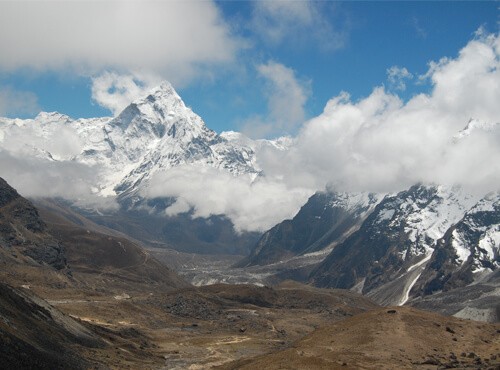
Everest Base Camp Trek via Gokyo Lake - 16 Days
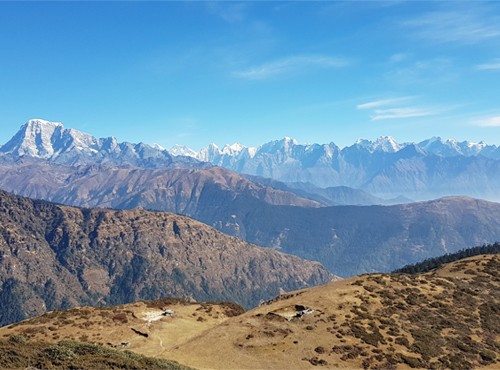
Pikey Peak Trek - 11 Days
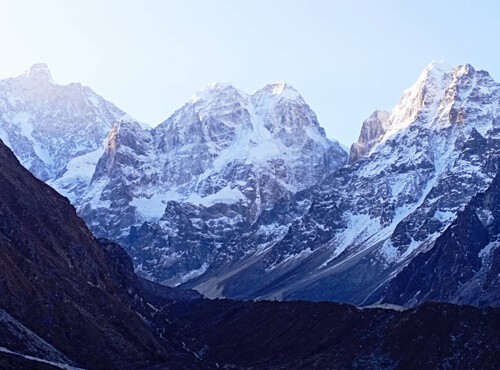
Kanchenjunga Circuit Trek - 19 Days
Although the best time to visit Nepal is considered from March to May (Spring Season) and from September to November (Autumn Season), it is possible to visit there at any period of the year. All you require to know is where to go during your visit to Nepal. Nepal is not just mountains, as is widely believed.
It is recommended to organize your trip to Nepal around the time of year when the activities you are interested in participating in are at their best.
Spring Season (March-May)
The best time to travel to Nepal is in the Spring season. The temperature is better to travel to the upper hills due to the warm weather. The blossoming flowers and budding vegetation make the walking trails stunning and captivating. You can participate in the festivals, including Holi, Maha Shivratri, Chaite Dashain, Ram Navami, Buddha Jayanti, Machhendranath Rath Jatra, and Bisket Jatra, which are celebrated inside or outside of the valley. In Nepal's main trekking regions, the season is among the top ones.
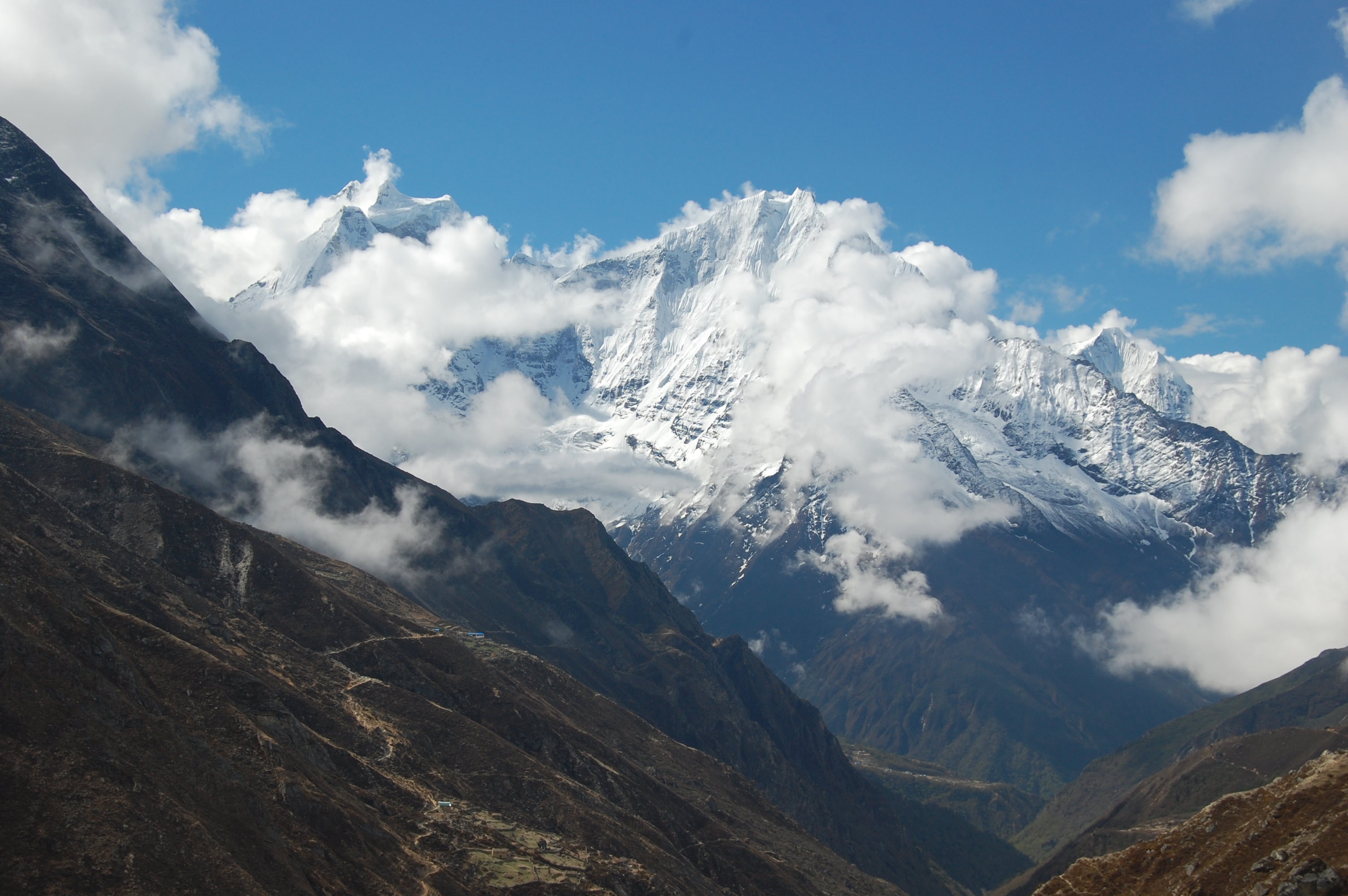
Where To Visit During Spring season?
This is one of the most suitable seasons for trekking holidays. You can make plans for the hills and the high Himalayas. You can head towards Everest Base Camp Trek , Annapurna Base Camp Trek , Ghorepani Poon Hill trek , Manaslu Trek , and many other trekking regions. To experience less crowded and more exploring hikes, you can explore off-the-beaten-path trekking regions like Kanchenjunga and Langtang .
Spring Season is the ideal season for Helicopter Tours as well as adventures like Paragliding, Bungee Jumping, mountain biking, etc.
The hills surrounding Pokhara and Kathmandu are perfect for day treks and family outings. Short-day hikes like Nagarjuna, Champadevi , Shivapuri, and Chisapani-Nagarkot overnight hikes around the Kathmandu valley take you through a rural landscape dotted with lush greenery and small traditional villages but are less physically challenging than high-altitude treks.
Tips for visiting Nepal in the Spring season
If you're planning to travel at the start of spring, bring a lightweight jacket. If you want to travel later in the season, pack some summer clothing, sunscreen, and sunglasses.
Autumn Season ( September-November)
Autumn is another the best time to visit Nepal. Trekking to the Himalayas and hiking in the nearby hills of Kathmandu is the preferable choices during the visit to Nepal during Autumn Season. You can explore each aspect of tourism programs available in Nepal during Autumn as the weather is slightly cool with clear skies and magnificent panoramic views of the mountains all along the route and more. We get the most traffic in the autumn season.
For Nepalese people, this is a season of celebration. The biggest festivals of Nepalese, Dashain, and Tihar, and other festivals like Indra Jatra and Chhath fall during the season. You can get the opportunity to celebrate the festivals with the locals during your visit to Nepal.
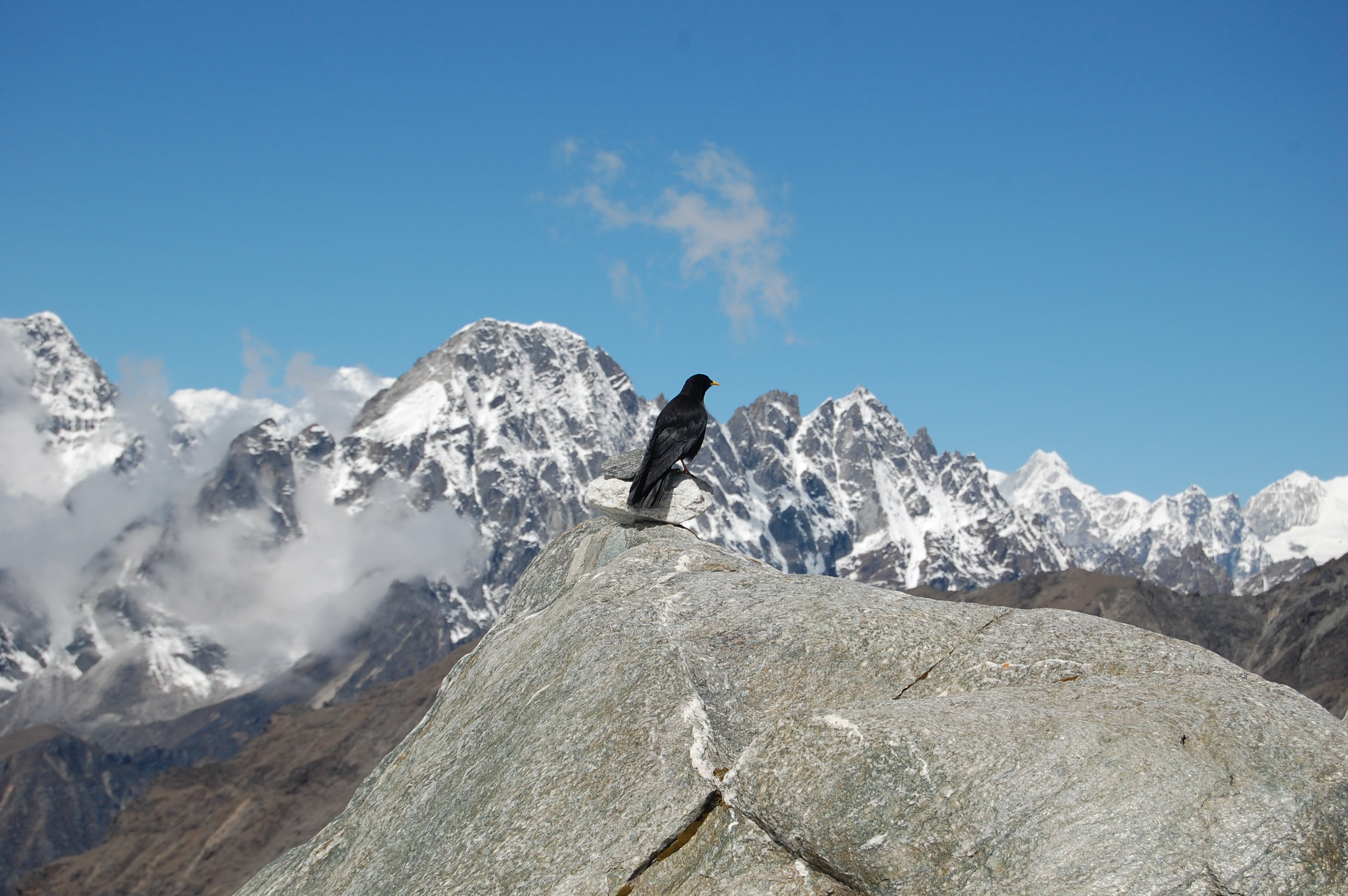
Where to Visit During Autumn Season?
Autumn is the best time for Everest Panorama Trek , Annapurna Base Camp Trek , Annapurna Circuit Trek , Langtang Valley trek , Manaslu Circuit with Tsum Valley trek , and many other treks. Apart from those trekking trails, you can have the privilege of homage to Muktinath , Gosainkunda , Manakamana , Lumbini , and many other religious places during the season.
This season is perfect for everything available in Nepal. You can have the city visit Kathmandu , Pokhara, Bandipur, Chitwan , etc. Rural Nepal can be visited without worrying about congested roads, unfavorable weather, or other issues.
You can even visit National Parks and wildlife reserves during the Autumn season. Chitwan National Park, Bardiya National Park, Shuklaphanta Wildlife Reserve, and many more. The monsoon disappears in the autumn, the snow melts, and the mountains are left bare and covered in very little snow.
Tips for visiting Nepal in the Autumn season
Make sure that you reserve your tickets far in advance because this is the busiest time of year. Plan your schedule and activities in accordance with the weather. When packing, be sure to include sunglasses, sunscreen, and both warm and cool clothing.
Winter Season (December-February)
In Nepal Himalayan and hilly regions, winters can be severe. The temperature can fall as cold as -25 degrees Celsius. Higher altitudes get extreme cold and snowfall. People from higher elevations move to lower regions during this season to escape the cold and snowfall, and the tourism industry nearly stops for a few months.
However, the Terai and Lower Hills are suitable to visit, as they have better travel and exploration conditions throughout the winter. You will have an incredible opportunity to discover mystical lands.
Where To Visit During Winter Season?
Winter is an ideal time to travel through jungle areas and city tours. City tours are doable in any season, but you can enjoy the cultural sites of Nepal during the off-season. You can travel in winter to take full advantage of the low frequency and the crowd of tourists. You will have a hassle-free visit with as much information as during the season.
There are shorter and low-altitude treks like Chisapani- Nagarkot trek , Langtang Valley , Ghorepani Poon Hill Trek , and Helambu Circuit Trek , which are doable and offer a variety of adventurous experiences when trekking in the winter.
The best season for the city and cultural visits is in winter. The UNESCO World Heritage Sites such as Kathmandu Durbar Square , Patan, Bhaktapur, Swayambhunath (Monkey Temple), Bouddhanath , and Pashupatinath (The greatest Hindu religious pilgrimage) are the three historic durbar squares that you can visit in Kathmandu. The historic Newari towns of Panauti, Bandipur, and Sanga are also accessible. You can combine multi-city trips with your vacation plans to see Lumbini, Chitwan, Pokhara, and Kathmandu.
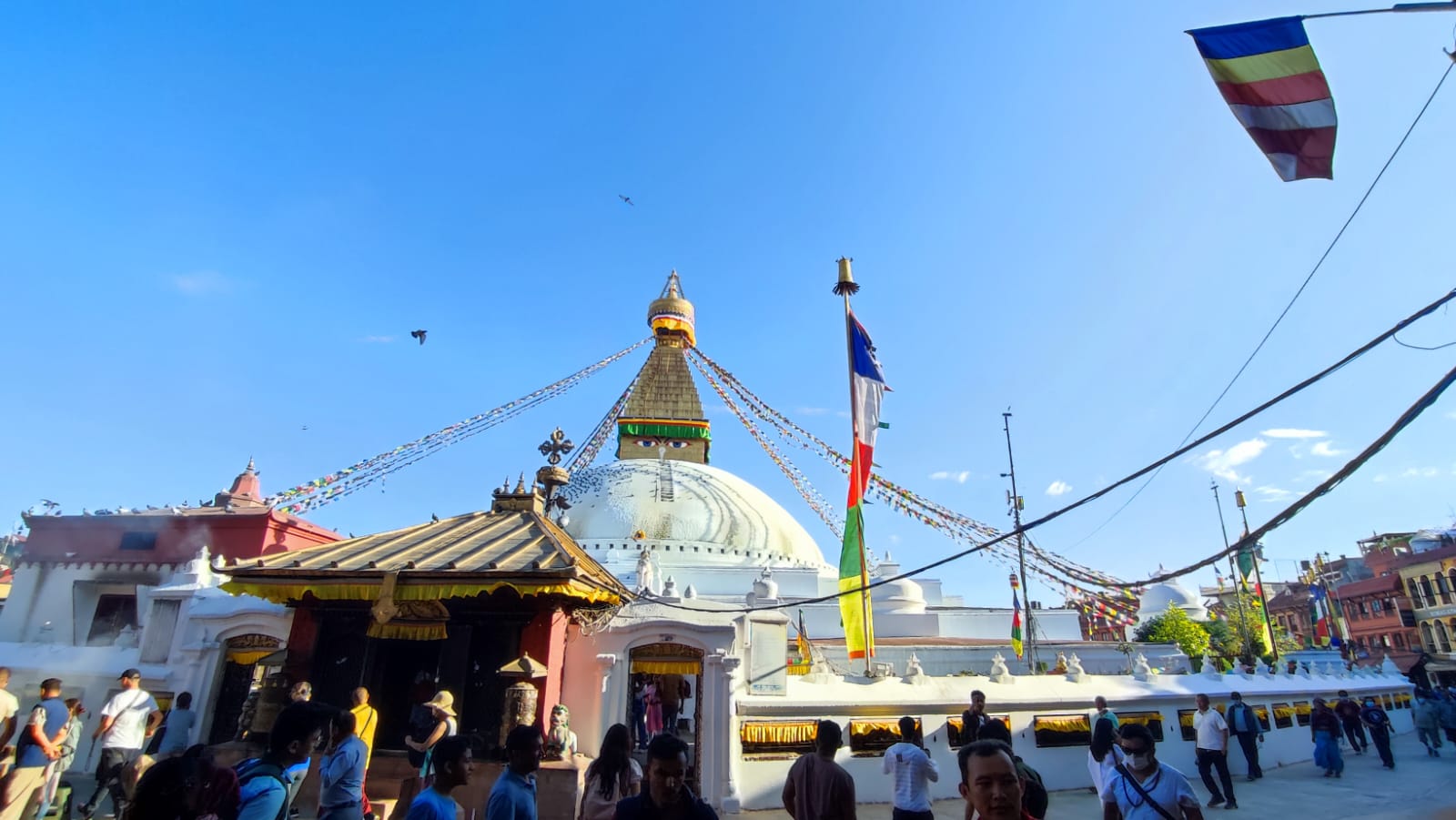
Outside the valley, there are many village and city tours available to visit during the winter. Gorkha, Nuwakot, Barpak, etc., have the great potential of being off-beat tour sites. For an opportunity of seeing wildlife, you can also travel to the lowlands of Chitwan National Park , Bardiya National Park , and Koshi Tappu Wildlife Reserve. Birds from the Himalayas and the Tibetan highlands migrate during the winter to warmer regions like Chitwan and Koshi Tappu.
Tips for visiting Nepal in the Winter season
Since cold winds are common during winter, always have woolens on hand to keep warm.
Summer Season (June-August)
Monsoon rains are another facet of the summer season. Summer is not preferable to trekking to high altitudes. Early summer is hot and humid with brief thundershowers, but mid-summer is typically rainy with the monsoon in full force. Rainfall doesn't stop until the beginning of September. The three highest rainfall months are June, July, and August.
There is a lot of greenery throughout the summer, so even though it is not the best time of year to go hiking, it is still worthwhile to hike around the lush woods near Kathmandu Valley. Krishnaashtami, Gai Jatra, and Janai Purnima observe around this time. While major parts of Nepal benefit from the monsoon season's rain, the area close to the Tibetan plateau is still largely dry. Due to their location below the rain shadow, the regions of Mustang, Dolpo, and parts of Manaslu do not get summer rainfall.
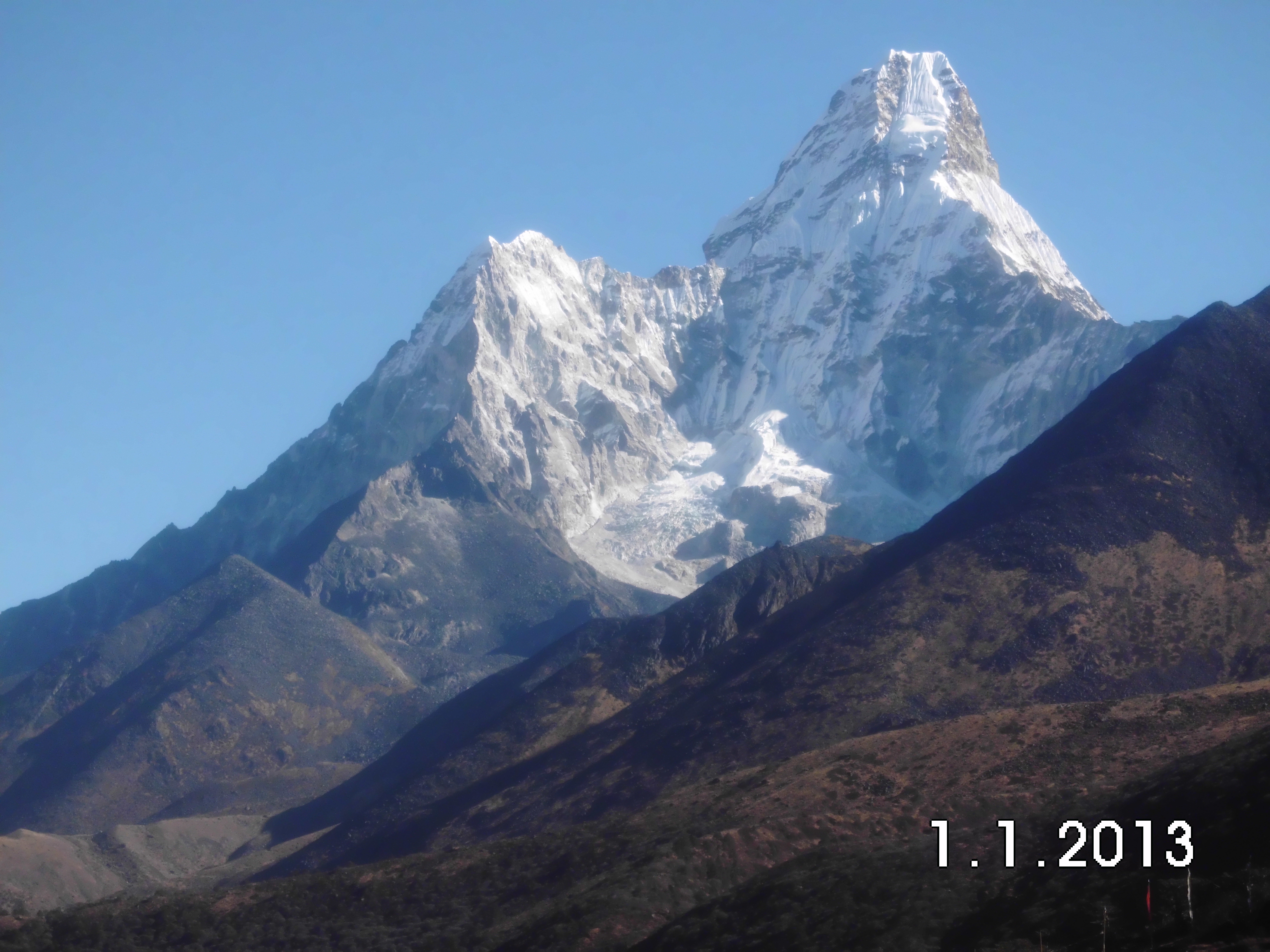
Where to Visit During Summer Season?
In Nepal's tourist industry, this time of year is considered off-season, but you can still benefit from fewer tourists and more entertainment options. Summer discounts are available from Nepal Nirvana Trails in a variety of packages. Therefore, this would be an excellent time to visit Nepal.
The trek to drier places like Mustang Trek , Dolpo, and Tsum Valley is the appropriate trekking region during the summer season. While the whole country has rainfall, some areas do not have monsoons and remain dry most of the summer. Trekking to these regions will be an incredible experience during the summer season.
At this time of year, the scenery is worth witnessing. A summer trip to Nepal will reward you with breathtaking vistas of green paddy fields, attractive flowers, luscious hills shrouded in mist, and lush rivers. Go on a village tour and see around the old town. There are different villages to visit during this season. Sirubari Homestay, Sarangkot, Nagarkot Sunrise , etc., can be great village tours that offer mesmerizing views and agro activities during the season.
Tips for visiting Nepal in the Summer season
If you plan trekking in summer, watch out for leeches and mud too sticky to walk in. It is advisable to wear windbreakers, sunglasses, and insect repellant. At this time of year, substantial hotel discounts are usual, so be careful to pick a nice hotel with a convenient location.
If you are delighted to Travel to Nepal and lured to pack your backpacks right away, visit our website and have a look at the packages we have available. You can even send us your itineraries so that we will organize the trek accordingly. You can inquire us via email at [email protected] and WhatsApp at +977 9841380469 . Get in touch with us right away to reserve your travel.
- Himalaya Trails
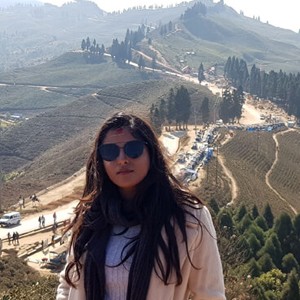
Benjila Dhital
Benjila has been an integral part of the Nepal Nirvana Trails as she writes passionately and learns about new spots, people, cultures, and languages. With a Bachelor's Degree from the reputed college NATHM in Bachelors of Tourism and Travel Management lately, she has been engaging in authoring web content and familiarizing new locations with the tourist out there.
Drop a message
Recent posts.
- Can you trek to Everest Base Camp in April?
- Trekking in Nepal in March 2024
- Unveiling the Hidden Gems of Kanchenjunga: Trekking Guide for Adventure Enthusiasts
- Best Time For Manaslu Circuit Trek
- Family-Friendly Trekking in the Annapurna Region: Creating Lasting Memories with Loved Ones
- Langtang Valley Trek: A Serene Himalayan Escape for Nature Lovers
Related Posts
Travel guides.
- Annapurna Region Trek Guide
- Everest Three Passes Trek Guide
- Kanchenjunga Trek Guide
- Langtang Region Trek Guide
- Manaslu Region Trek Guide
- Nepal Travel Info
- Things to Do
- Travel Blog

Are you looking for the Nepal holiday? or need help to plan a trip, please do not hesitate to get in touch with us.
We use cookies to ensure that we give you the best experience on our website.

- Best Hikes In The World
- Appalachian Trail
- European Hikes
- Nepal Hikes
- Patagonia Hikes
- See All Hikes
- Mount Kenya
- Mount Kilimanjaro
- Mount Toubkal
- See All Mountains
- South Africa
- New Zealand
- Switzerland
- United Kingdom
- Packing Lists
Best Time To Trek In Nepal (And When To Stay Away)
The best time to trek in Nepal depends on which Nepal hiking routes you have chosen, and the altitude of the passes. Another important deciding factor is whether you can deal with cold or are prepared to risk getting wet!
Some regions are inaccessible over the winter time when snow blocks high mountain passes. Monsoon rains play a big role when planning your trip to Nepal. Some places are too humid during summer or completely flooded out.
In this guide, I'll go through each of Nepal's seasons and discuss their suitability for trekking. We will take a look at the country's main trekking regions and the ideal time to trek these areas. Finally, I'm going to suggest some key gear to pack for your Nepal trek.
When Is The Best Time To Hike In Nepal?
Generally speaking, the best time to trek in Nepal is post-monsoon September-November. This is peak trekking season. Temperatures are fair and the weather is about as stable as you can hope for. Skies are also clear this time of year so hikers get the stunning mountain views.
Nepal is a diverse country with different regions and their own weather patterns. If you are planning your Nepal trek , you should be aware that weather can be unpredictable. Mountainous regions are notorious for storms, rain, and snow, even during ‘good hiking months’.
Nepal Trekking Seasons
Pre-monsoon, spring.
The pre-monsoon season lasts from February to late April. This is Springtime in Nepal. During the start of the season, the temperatures are chilly becoming mild as the months progress.
In the lower ranges and hills ( 800-2,000m (2,600-6,600ft) temperatures range from about 16-23ºC (61-73ºF). On the 5000m + mountain passes, including Cho La, Larkya La and Thorung La, the snow starts to melt and paths clear for hiking.
One of the best things about trekking Nepal in Spring is that the rhododendron bushes and wildflowers are in bloom. The days are usually sunny and warm, while nights can be chilly, especially at higher altitudes.
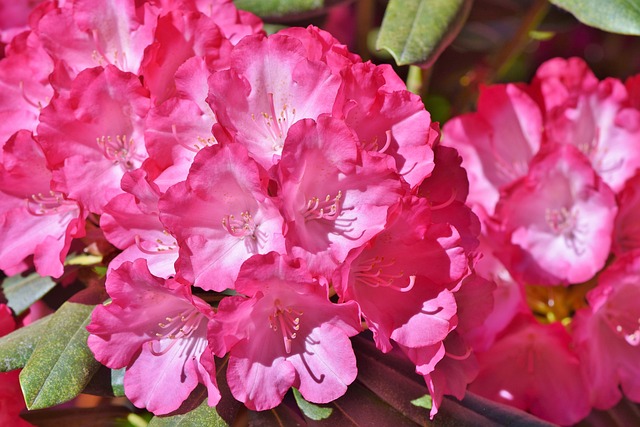
If you are planning to fly in to Nepal trekking regions, February to April is a fairly safe bet. Skies are usually clear and there is less chance of flight cancellations
One downside to hiking in Spring is that the trail can be quite dusty. There can also be occasional rain showers. There is more of a haze in lower altitudes over the Springtime, you may need to climb higher up the mountains for a clear panoramic view.
In early May, the weather is normally still good for hiking. Be aware that the later in Spring you hike, the more chance of rain. It also gets more humid in low-lying areas closer to summer
Post Monsoon, Fall
October-November is Fall in Nepal. Temperatures in the hills and lowlands are cool and comfortable, averaging between 15-24ºC (59-75ºF). Most people consider this the ideal time for hiking in Nepal, at least in terms of climate.
Following the rains, the dust and pollution have settled and trekkers get clear views. This lasts throughout the day and into the afternoon. By late November, the evenings start to get a lot colder, especially higher up. Be prepared by packing a good, low-temperature sleeping bag .
Fall is also the busiest trekking season. Expect to find many trekkers on the trails. You will also find that the Nepal tea houses are full over these months. Everest Base Camp and Annapurna Circuit are particularly popular routes and become crowded over this time.
Shoulder Months - September and December
The shoulder months for trekking in Nepal can be the best time of the entire year. Late September and early December are an opportunity to miss the bulk of the crowds, post- monsoon.
Trekking on the edge of the season is rolling the dice in terms of rain. It’s almost impossible to be sure that the monsoon won’t last longer or winter snows arrive early. If you do get lucky, the weather can be just as good as peak season with less than half the people around.
The end of December starts to become too cold. Plus, many tea house accommodations close at this time.
Monsoon Season
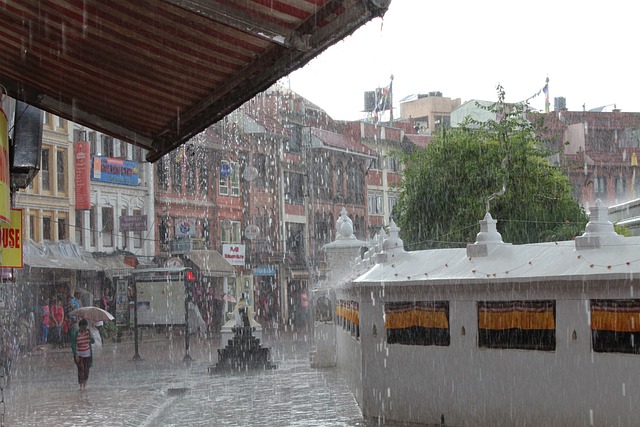
May through to August (and even mid-September) is not the best time to hike in Nepal. This is summertime which co-incides with the Monsoon rains.
Temperatures are high, averaging between 27/29 °C (81/84 °F) reaching above 40 °C (104°F) in the lowlands. Moisture rises off the Indian oceans and condenses.
You can expect lots of cloud coverage, haze and frequent heavy downpours. This is most intense over July. In the lower regions, trekking is still unpleasant with trails getting very muddy and lots of leeches around.
From July onwards, things tend to calm down as it gets closer to fall. Note: If you do want to do Himalayan trekking between June-August, opt to visit the Indian Himalayas. The Ladakha region stays mostly dry throughout the summer. Trekking around Ladakha also has the benefit of a lot fewer trekkers than Nepal. Check out the Markha Valley Trek .
Can You Trek Nepal in Winter? (December-February)
Trekking Nepal in Winter is not generally recommended. This is for two main reasons:
Firstly, It’s extremely cold. During the day, temperatures range between about 1-12ºC (33-54ºF) . This drops well below zero during the night.
Secondly, most high altitude passes are covered in snow and closed to trekkers between November-March. Inaccessable passes include Thorong La (Annapurna), Kongma La and Cho La (in the Everest reason).
If you have a high cold tolerance and don’t mind sticking to lower trails and mid-altitudes, you may actually enjoy December trekking in Nepal. There are much fewer hikers on the trails. The cooler air can be nice and refreshing around Christmas and New Year.
Note: Most tea house accommodation do not have heating. Thermal layers of clothing are an essential packing item for winter hikes in Nepal.
Best Time To Hike In Nepal - By Region
Higher regions - annapurna base camp, everest.
The high lying regions including Everest and the Annapurna region are best trekked in the post-monsoon months. This is because there is less chance of avalanches and snowfall. Temperatures also warm up to acceptable levels during this time.
Planning on hiking the Annapurna circuit? Check out this article on Annapurna circuit weather .
Manaslu and Langtang Valley
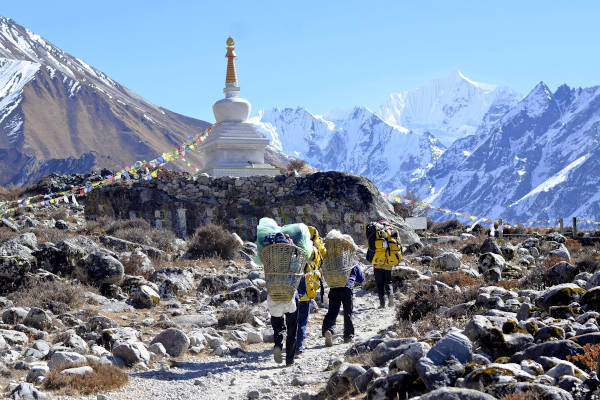
Langtang valley and Ghorepani Valley (Poohill Trek) regions are not as susceptible to snow or avalanches. This means the treks like the Langtang Valley Trek and Manaslu circuit are open during the pre-monsoon season. It's a good time to hike as temperatures are milder and the trails are less crowded.
These regions are also open for trekking over the cold winter months. Over summer, the trails get muddy and the weather can be uncomfortable and humid.
Manang, Mustang and Dolpo
Low-lying hill treks like those around Manang, Mustang and Dolpo regions are just out of the rain shadow. These areas don’t experience the typical monsoon downpours. Many of the routes are still accessible in the summer months or at least later into the season.
Far Western Region/ Humla
The far western region of Nepal is one of the least visited regions of the country. The best known trek in the far west is the Limi Valley Trek . The Humla region is outside of the monsoon area in a rain shadow and many people trek here over summer (June to Sept). It is possible to trek this trail for most of the year except winter (December-February) when snow covers the passes.
Rara National Park
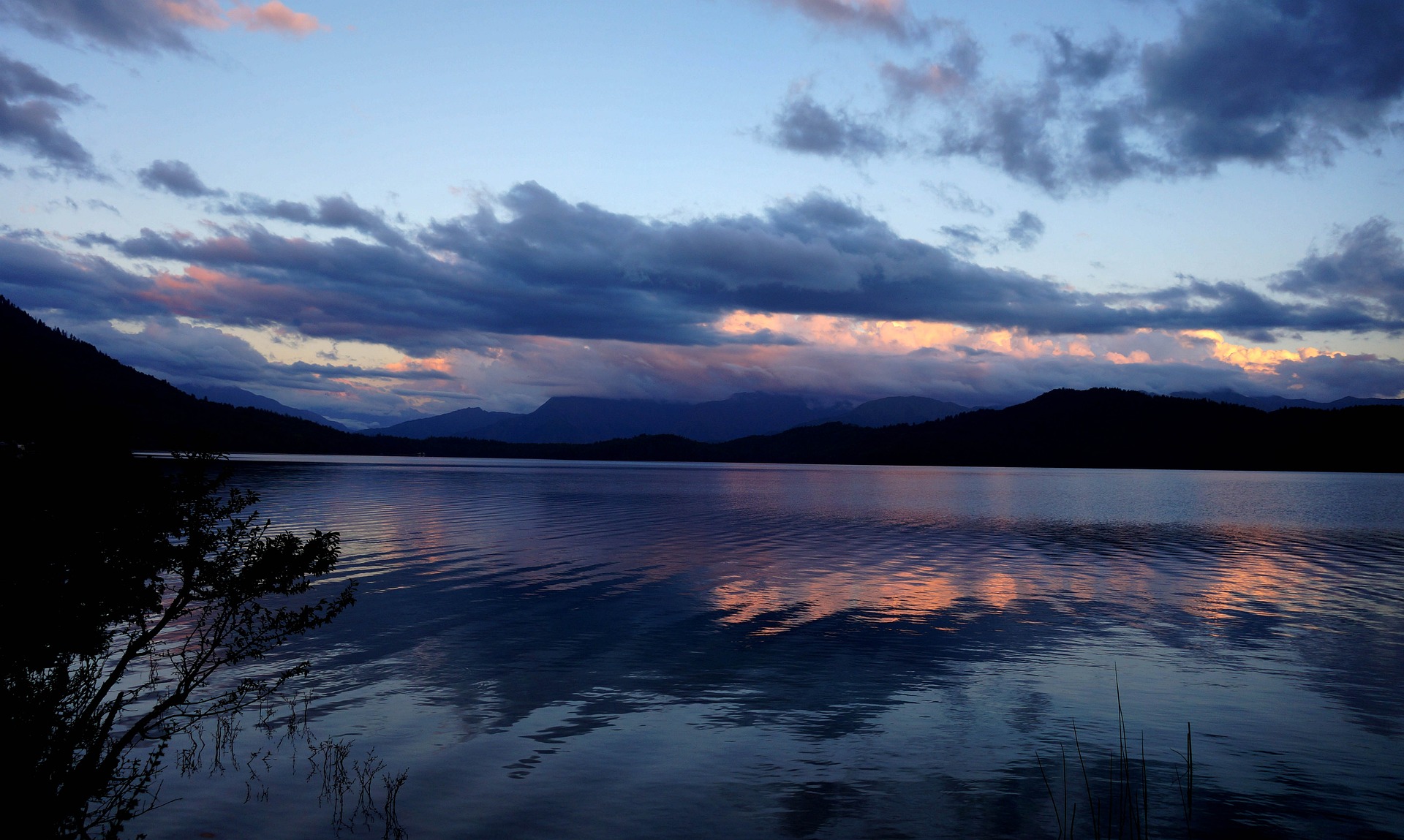
Rara National Park is home to Nepal’s biggest lake, Rara. This area is busy over the warm summer. The Rara Lake Trek is best in Spring (March-May) when the rhododendrons are in bloom and the landscape is at its prettiest. September to November is peak season and the trails get very busy. Early winter (December) is also possible for hiking.
Dhaulagiri Region
The Dhaulagiri region and the Dhaulagiri circuit is best trekked in Autumn and Spring. During other times of year you, wether conditions can be too cold or too hot and humid with high danger of landslides.
Kanchenjunga region
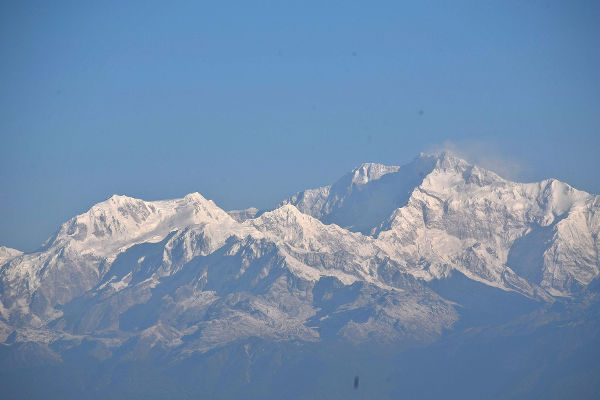
This high-lying region is best hiked before or after the monsoons. Trekking season is during the autumn (September to November) and spring (March to May). In the autumn months, the monsoon season has ended, and the skies are clear, offering stunning views of Kanchenjunga massif and some of the worlds highest mountains .
Essential Gear For Trekking In Nepal: Be Prepared In Any Season!
No matter what time of year you are trekking in Nepal, proper preparation is essential. This means taking with some key items that will make your trek a whole lot more comfortable.
Don't forget these important pieces;
- Thermal layers: These are insulating underclothes are especially important over the winter months. You will also be happy you have them when staying at camps in higher altitudes which get super cold in the evening. Check out some of the best base layers .
- Polarized Sunglasses: This is the first thing I put in my bag for any trip, trekking or otherwise! A good pair of sunnies will keep the sun out your eyes and protect you from the blinding glare at high altitudes. You could break the bank and buy specialist hiking sunglasses but these are going to get limited use outside of alpine peaks. I'm all for insane value, and my go-to for quality sunnies for adventure is the brand, Goodr. Check out the Goodr sunglasses collection .
- Trekking poles: you can rent trekking poles but for regular trekkers, its nice to have your own pair. A set of trekking poles takes the strain of your knees and gives you some support on rocky, steep slopes.
- Hydration Pack: Nepal is a place of extremes. During summer you are going to be rapidly sweating out your moisture reserves. On the other hand, in the cold high altitude passes, its easy to forget to drink regularly. Either way, a hydration pack is the way to go. It gives you easy access to your water supply without having to mess around in your backpack.
One last Item: We always recommend you take out some good travel insurance for Nepal trekking .
About the author
Alison Macallister
With a degree in Nature Conservation and experience working with wildlife including the Big 5, Alison used to work as a guide for a 5-star safari reserve in South Africa. Today she is a full time traveller and editor for Mountain IQ. She has travelled and hiked extensively in South America, including many solo hikes in Patagonia, the Cusco region of Peru, Ecuador and Chile.
Leave a Reply
Your email address will not be published. Required fields are marked
We work with local guides to offer great value adventures at unbeatable prices.

Passing Thru Travel
The 10 Best Treks in Nepal’s Majestic Mountains 2024
Posted: February 21, 2024 | Last updated: February 21, 2024
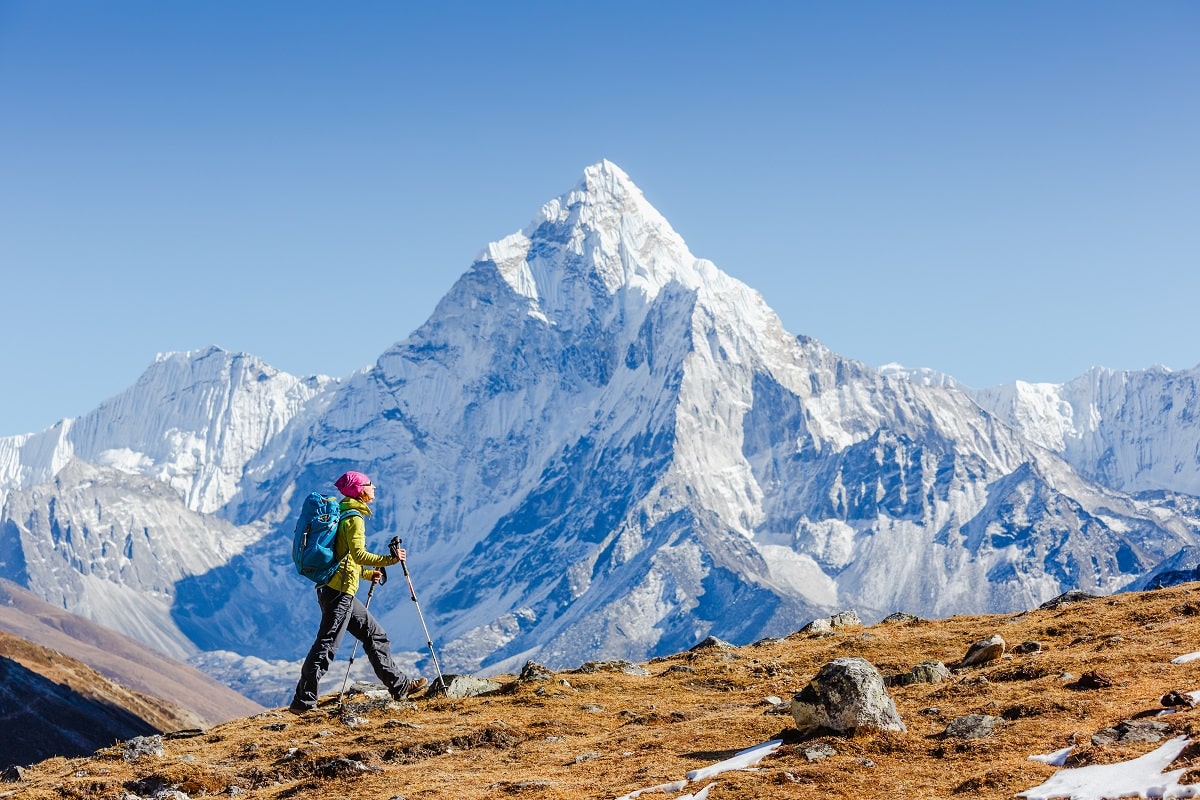
Nestled between the towering peaks of the Himalayas, Nepal is a land of unparalleled natural beauty and a haven for trekkers. From the iconic Everest Base Camp to the serene trails of the Annapurna region, Nepal’s mountains offer a diverse array of trekking experiences, each more awe-inspiring than the last. This guide will take you through 10 of Nepal’s most majestic mountain destinations, providing insights and practical advice for your trekking adventure.
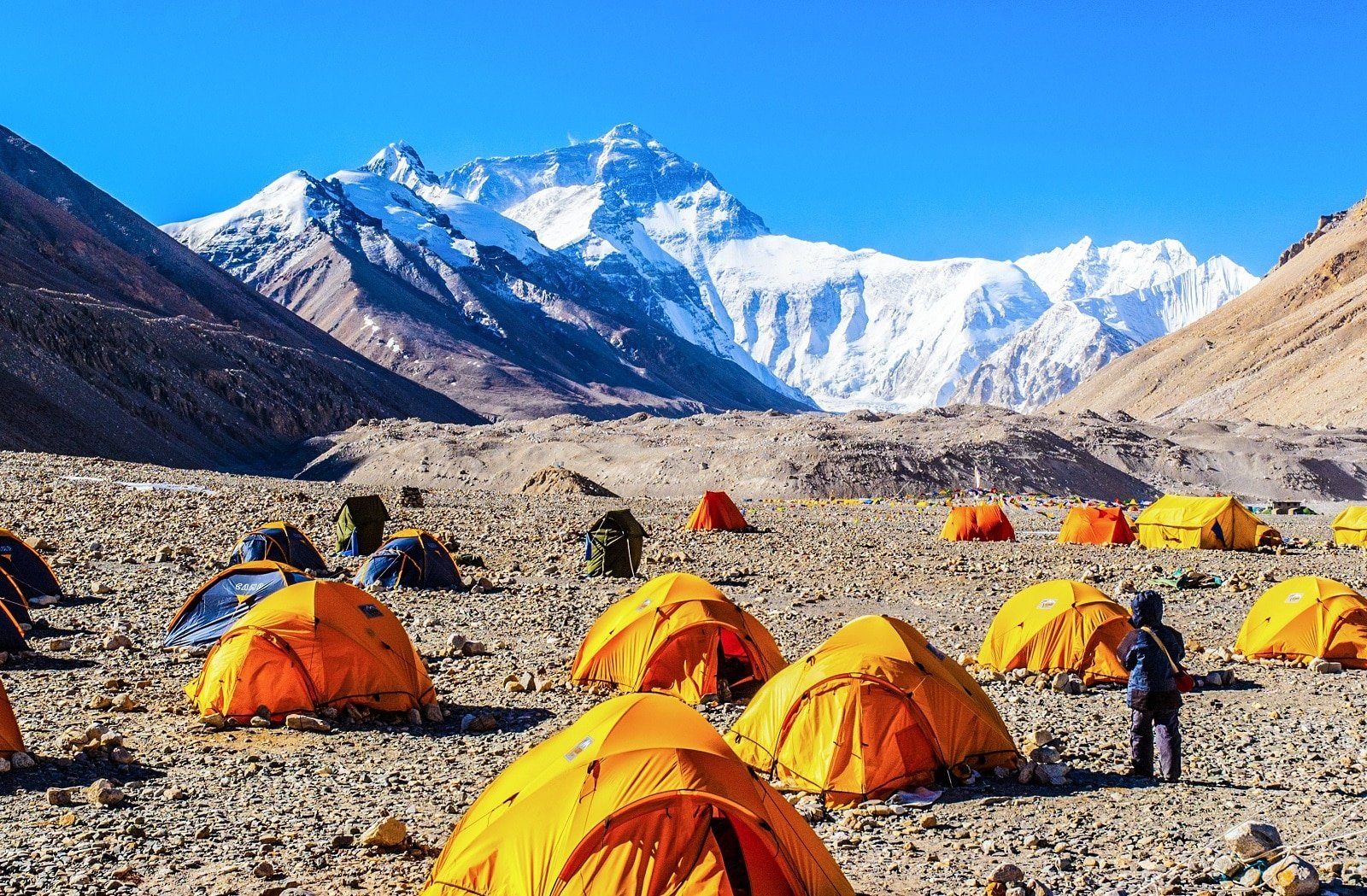
1. Everest Base Camp
Embarking on the Everest Base Camp trek, you’ll journey through the heart of the Himalayas, where the world’s highest peaks, including Everest, Lhotse, and Nuptse, tower above. Starting with a thrilling flight to Lukla, the trek takes you through traditional Sherpa villages, Buddhist monasteries, and along the Dudh Kosi River. The route is challenging yet rewarding, with acclimatization days in Namche Bazaar and Dingboche. The final ascent to Base Camp offers a stunning view of the Khumbu Icefall, making all the effort worthwhile.
Insider’s Tip: Acclimatize properly to avoid altitude sickness.
When To Travel: Pre-monsoon (March to May) or post-monsoon (September to November).
How To Get There: Fly to Lukla from Kathmandu and start your trek from there.
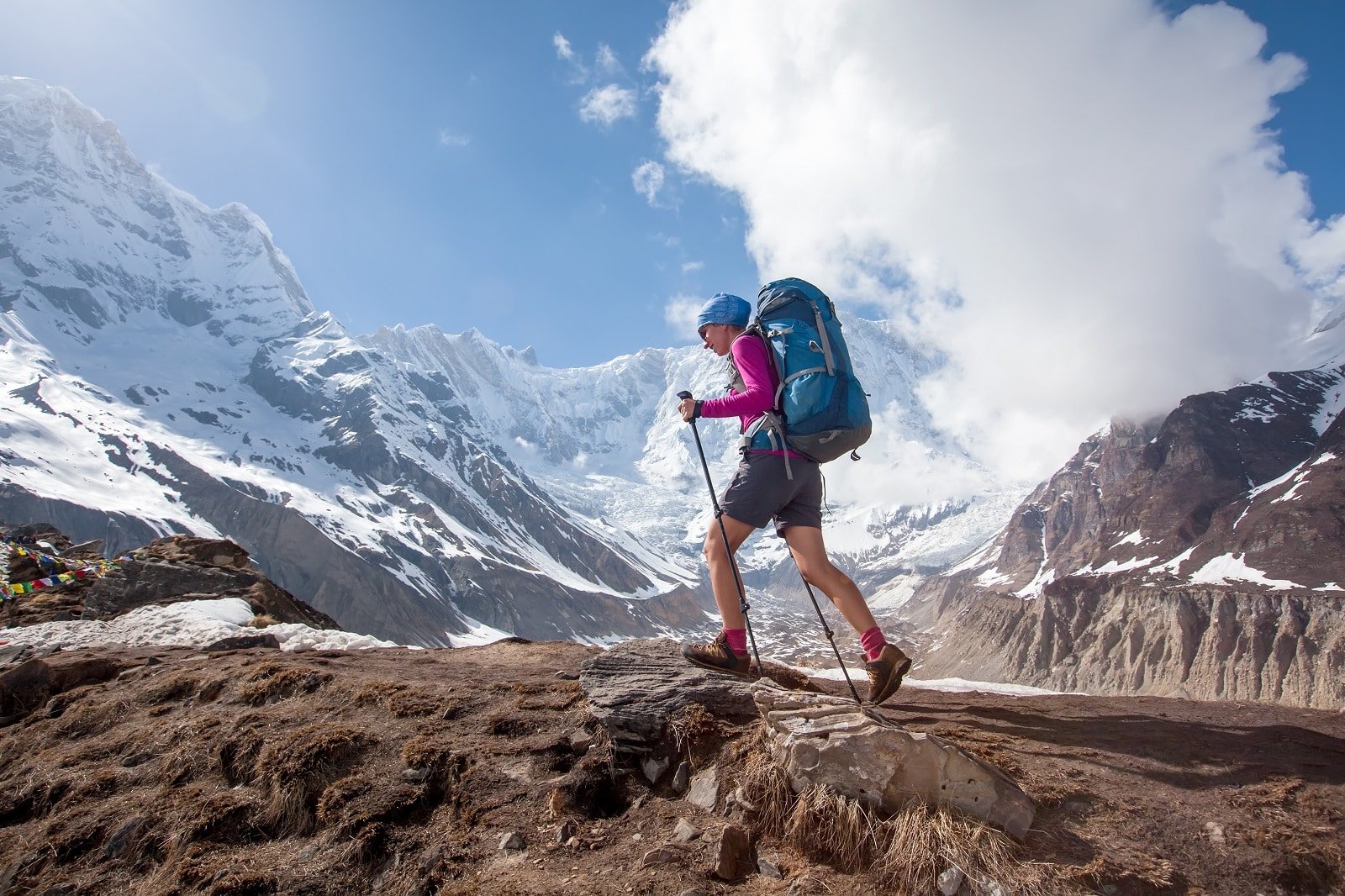
2. Annapurna Circuit
The Annapurna Circuit is a classic trek that takes you around the majestic Annapurna massif. This journey offers a remarkable diversity of landscapes, from the subtropical jungle of the Marshyangdi Valley to the arid, Tibetan-like terrain of the Upper Mustang. Crossing the Thorong La Pass, the trek’s highest point, is a challenging but exhilarating experience. The trek also allows for cultural immersion in the mountain communities of the Gurung and Manangi people.
Insider’s Tip: Take side trips to the ice lakes or Tilicho Lake for additional stunning views.
When To Travel: March to May and October to November for the best weather conditions.
How To Get There: The trek typically starts in Besisahar or Bhulbhule, accessible by road from Kathmandu or Pokhara.
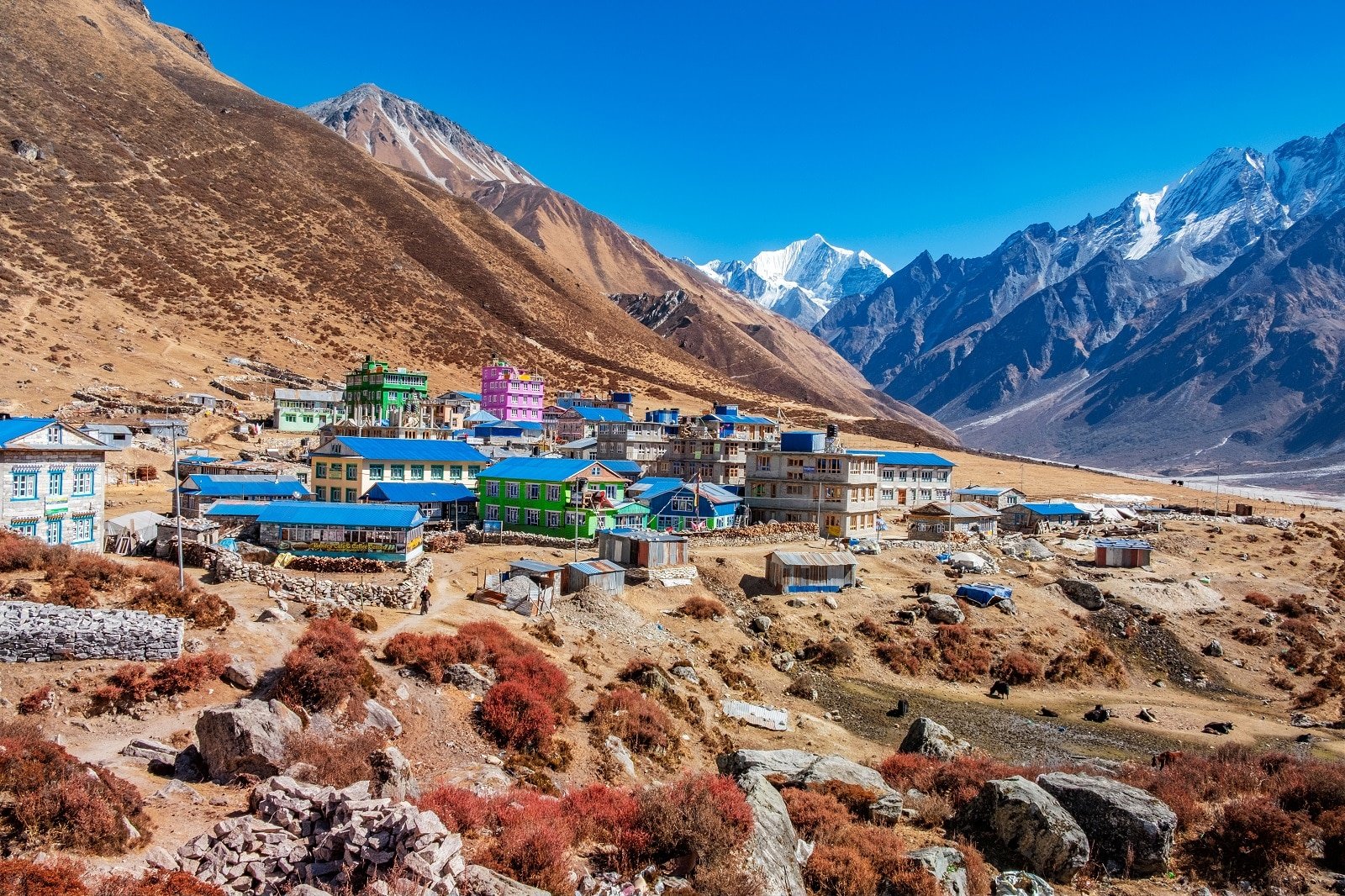
3. Langtang Valley
The Langtang Valley trek offers a quieter, more intimate Himalayan experience. It begins with a drive to Syabrubesi and a trek through forests, pastures, and traditional villages. The valley provides close-up views of Langtang Ri and Langtang Lirung. The trek also includes a visit to Kyanjin Gompa, a significant Buddhist monastery, and an optional climb to Tserko Ri for panoramic mountain vistas. This region was heavily affected by the 2015 earthquake, and trekking here supports local recovery efforts.
Insider’s Tip: Extend your trek to Gosaikunda Lake for a spiritual experience.
When To Travel: March to May and September to November for clear skies and pleasant temperatures.
How To Get There: Drive to Syabrubesi from Kathmandu, the starting point of the trek.
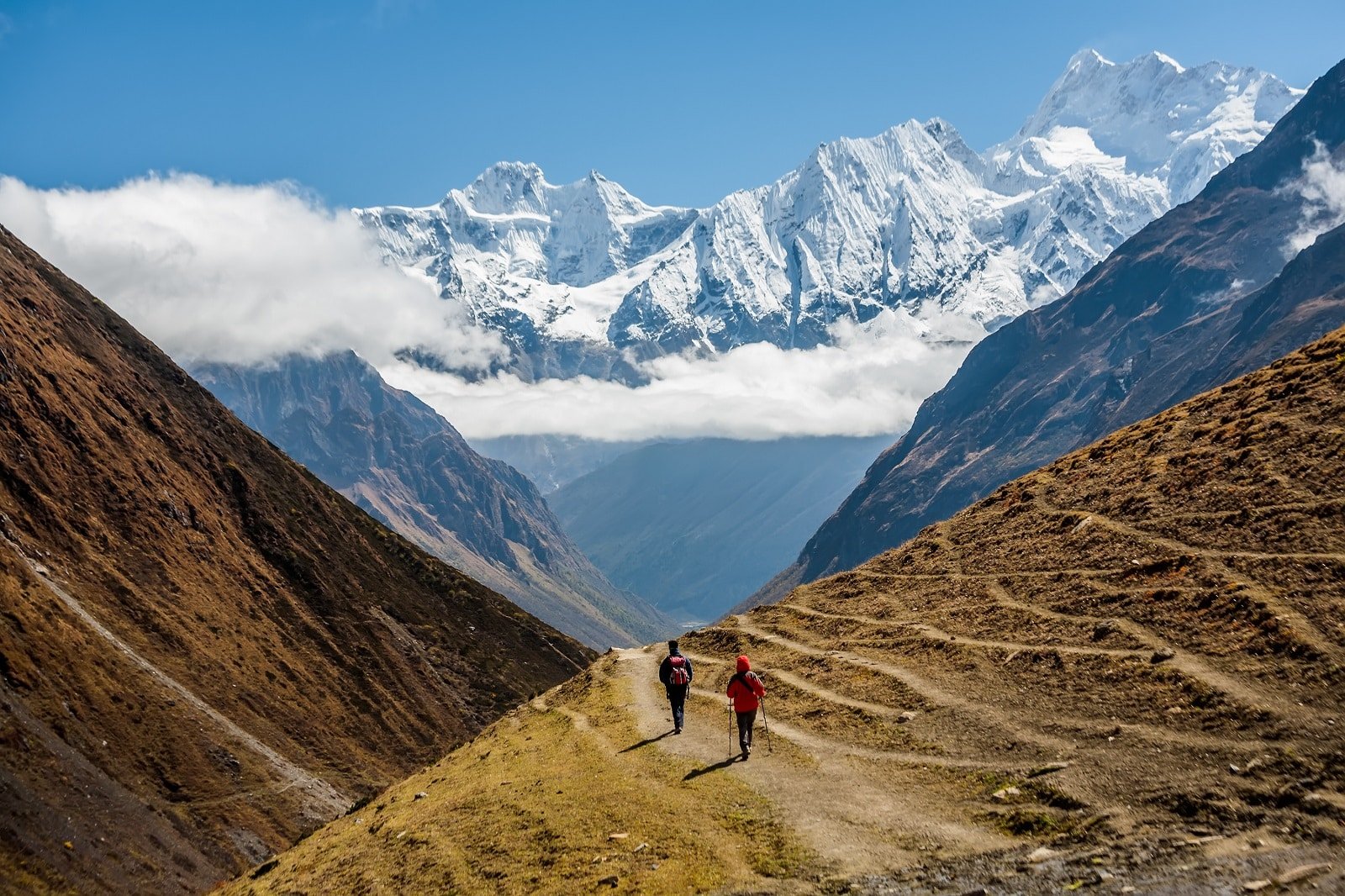
4. Manaslu Circuit
The Manaslu Circuit trek circles the majestic Manaslu, the world’s eighth-highest peak. This trek is less crowded than its more famous counterparts. It offers a look into the untouched natural beauty and culture of the Nepali Himalayas. The trek involves crossing the Larkya La Pass and traverses through Budhi Gandaki Valley, known for its mix of Hindu and Tibetan Buddhist villages. The circuit is a challenging trek, blending cultural richness and scenic splendor.
Insider’s Tip: Ensure you have a guide, as the Manaslu trek requires special permits.
When To Travel: March to May and September to November are ideal.
How To Get There: The trek starts at Arughat or Soti Khola, which can be reached by bus or jeep from Kathmandu.
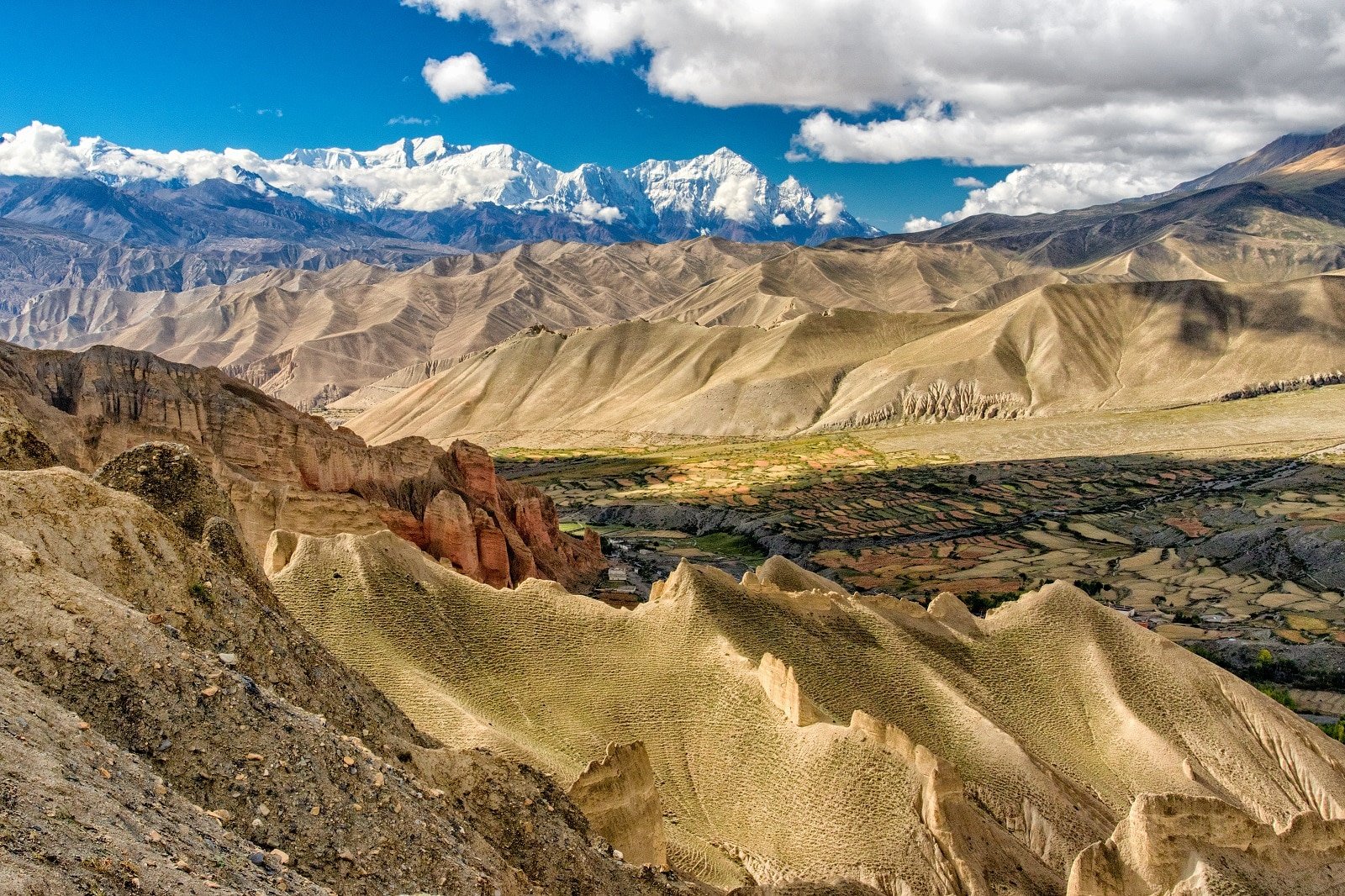
5. Upper Mustang
Trekking in Upper Mustang takes you to a region that was once an independent kingdom. The landscape here is more desert-like, characterized by eroded canyons and colorful stratified rock formations. Lo Manthang, the walled capital, is a highlight, with its monasteries and royal palace. This area is culturally and geographically more akin to Tibet, offering a unique trekking experience distinct from the rest of Nepal.
Insider’s Tip: Visit the ancient monasteries and the royal palace in Lo Manthang. Stay at the beautiful Shinta Mani Mustang.
When To Travel: May to October, as the region lies in the rain shadow area.
How To Get There: Fly or drive to Jomsom, then trek or drive to Lo Manthang.
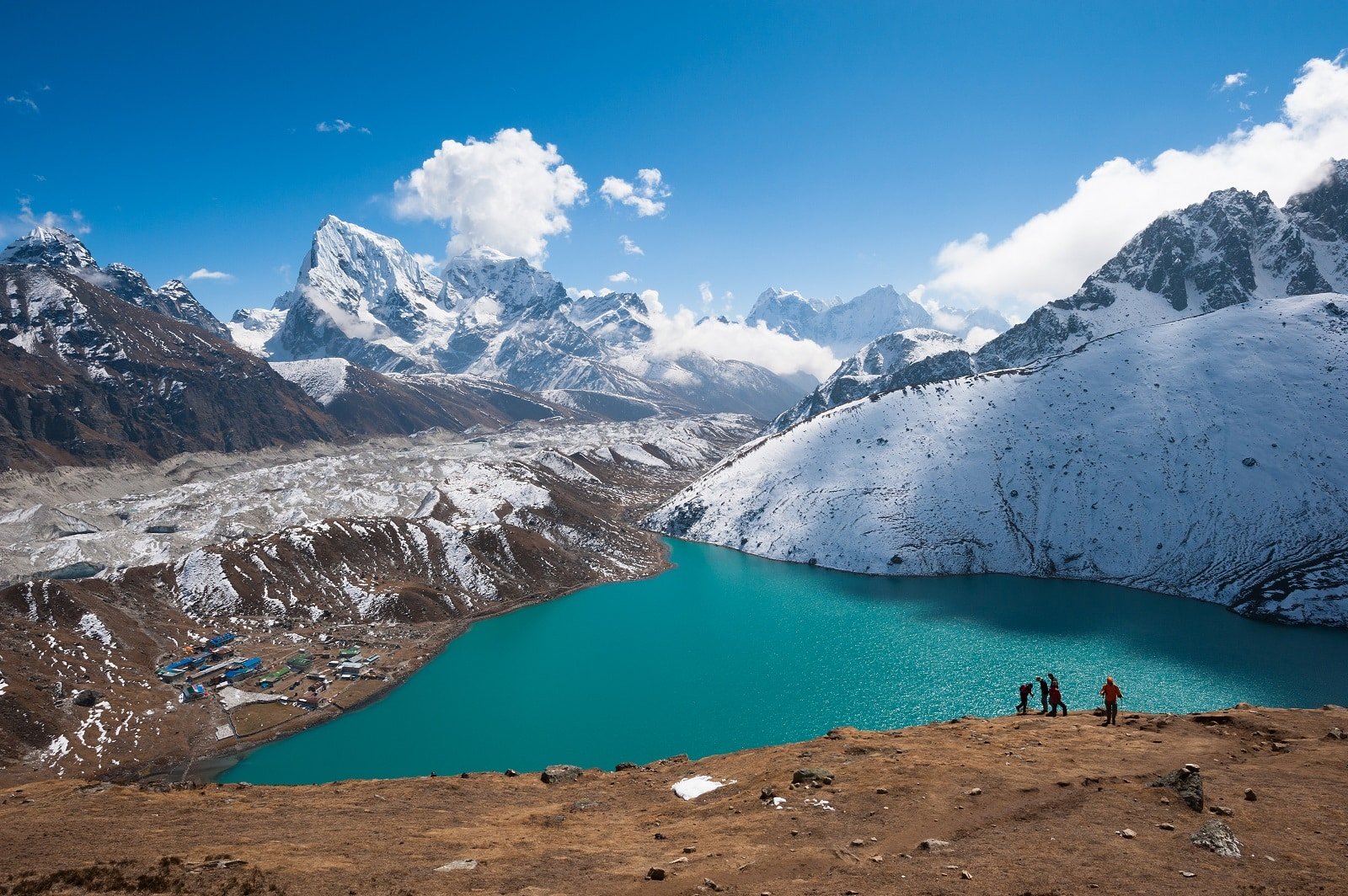
6. Gokyo Lakes
The Gokyo Lakes trek is a fantastic alternative to the Everest Base Camp trek, taking you to a series of stunning high-altitude lakes in the Gokyo Valley. The trek is less crowded and provides spectacular views of Everest and surrounding mountains. Climbing Gokyo Ri offers one of the best viewpoints in the Everest region. The trek passes through Sherpa villages, offering insight into the local culture.
Insider’s Tip: Trek during the full moon for spectacular night views of the mountains.
When To Travel: March to May and September to November for the best weather.
How To Get There: Similar to Everest Base Camp, fly to Lukla and follow a different trail.

7. Poon Hill
The Poon Hill trek is ideal for those looking for a shorter hike in the Annapurna region. It’s known for offering some of the most spectacular mountain views, especially at sunrise from Poon Hill itself. The trek passes through rhododendron forests and Gurung villages, giving you a chance to experience the culture of the central Himalayan region. The trek starts and ends in Nayapul, a short drive from Pokhara.
Insider’s Tip: Carry enough cash, as there are no ATMs on this route.
When To Travel: October to November and March to April for clear skies and good weather.
How To Get There: The trek starts from Nayapul, which is a short drive from Pokhara.
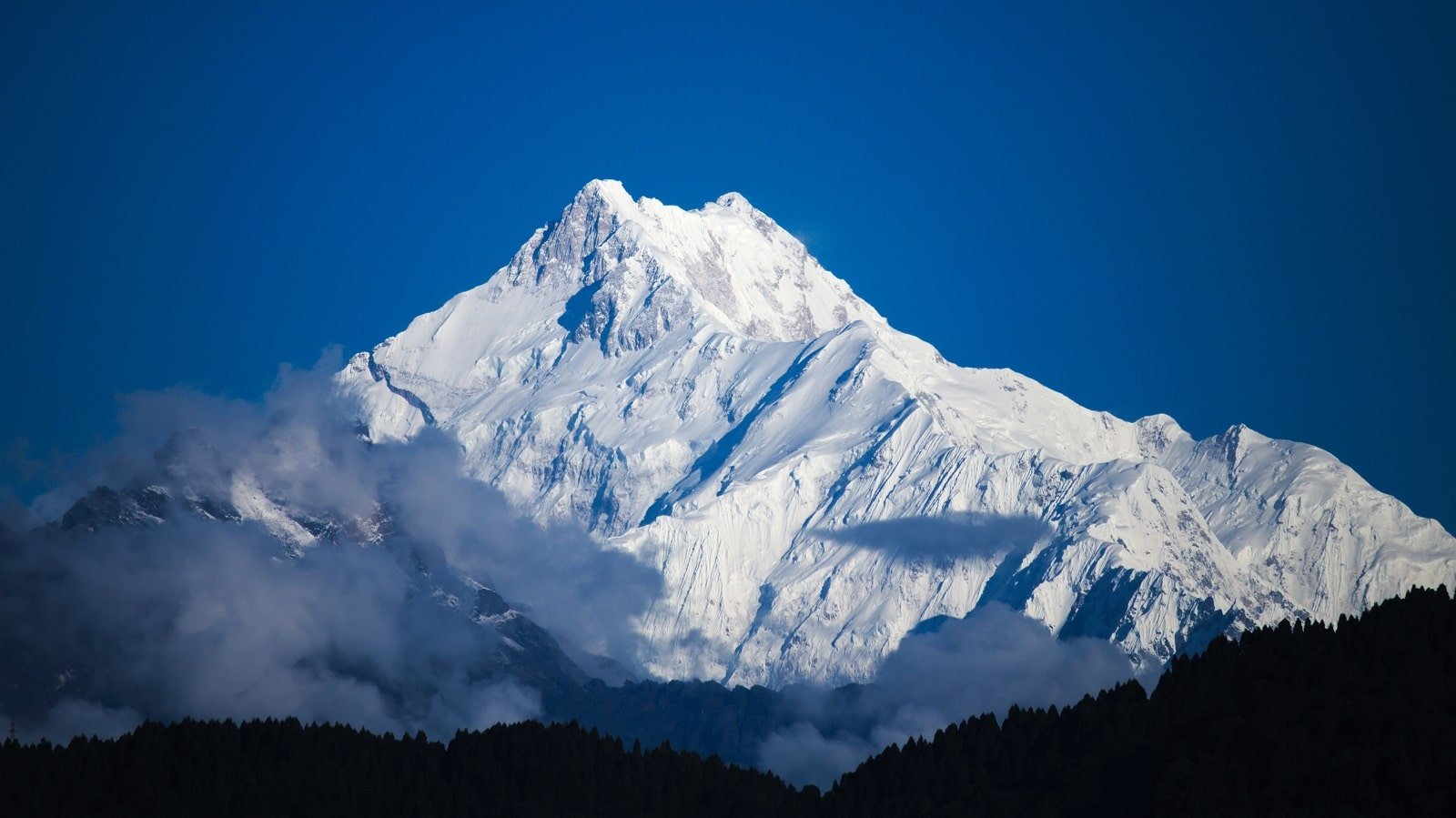
8. Kanchenjunga Base Camp
The Kanchenjunga Base Camp trek is a challenging and adventurous journey to the base of the world’s third-highest mountain. This remote trek offers stunning views of Kanchenjunga and a chance to experience pristine wilderness. The trek passes through diverse ecosystems, traditional villages, and high alpine terrain. It’s a trek for those seeking solitude and unspoiled nature.
Insider’s Tip: Be prepared for basic accommodations and facilities, as this is a less developed trekking route.
When To Travel: March to May and September to November for stable weather.
How To Get There: Fly or drive to Bhadrapur, then drive to Taplejung, the starting point of the trek.
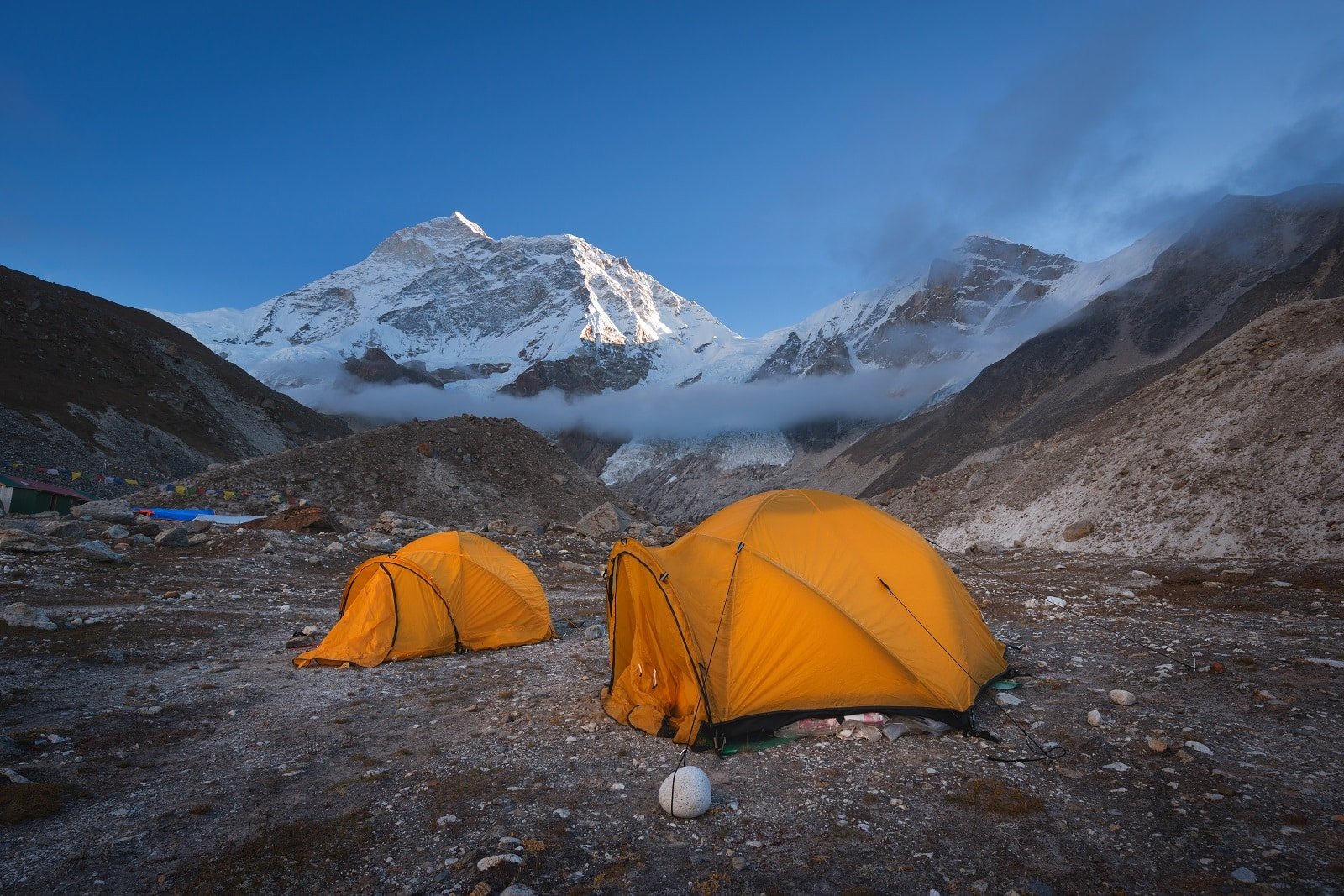
9. Makalu Base Camp
The Makalu Base Camp trek is a challenging journey to the base of Mount Makalu, the world’s fifth-highest mountain. This trek takes you through some of Nepal’s most remote and wild areas, offering stunning views of the eastern Himalayas. The Makalu Barun National Park, through which the trek passes, is a biodiversity hotspot with a rich variety of flora and fauna.
Insider’s Tip: Be physically and mentally prepared for a challenging trek with basic facilities.
When To Trave: Pre-monsoon and post-monsoon periods for the best conditions.
How To Get There: Fly to Tumlingtar from Kathmandu, then drive to Num, the starting point of the trek.
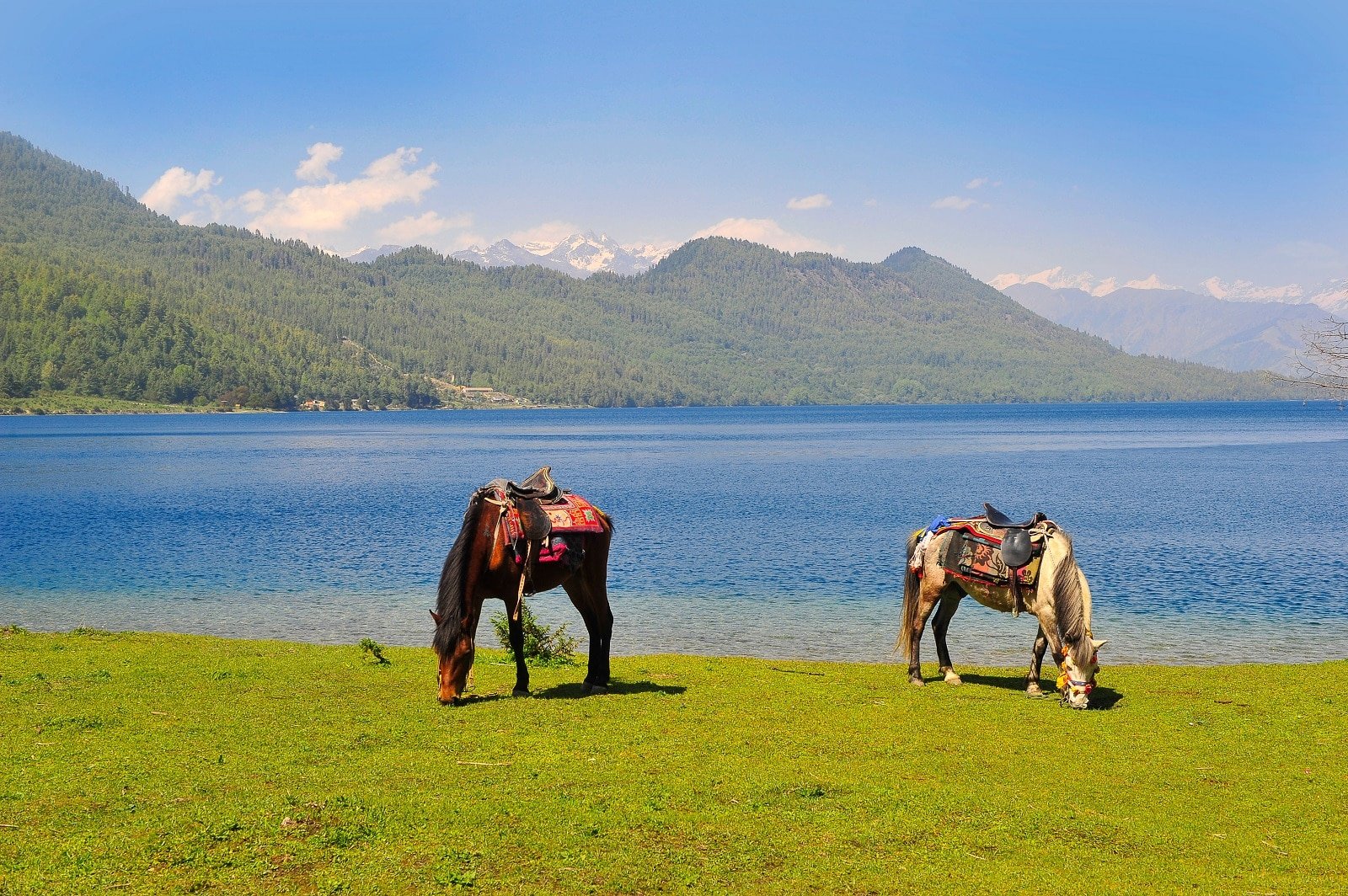
10. Rara Lake
Trekking to Rara Lake offers a serene experience away from the more popular trekking routes. Rara, the largest lake in Nepal, is known for its clear blue waters and scenic beauty. The trek to the lake is an adventure in itself, passing through remote Jumla and Mugu districts. The area around the lake, Rara National Park, is home to a variety of wildlife and offers tranquility unmatched in other parts of Nepal.
Insider’s Tip: Visit the nearby Rara National Park for a chance to see unique wildlife.
When To Travel: September to October and April to May for the best trekking conditions.
How To Get There: Fly to Nepalgunj from Kathmandu, then to Jumla, from where the trek to Rara Lake starts.
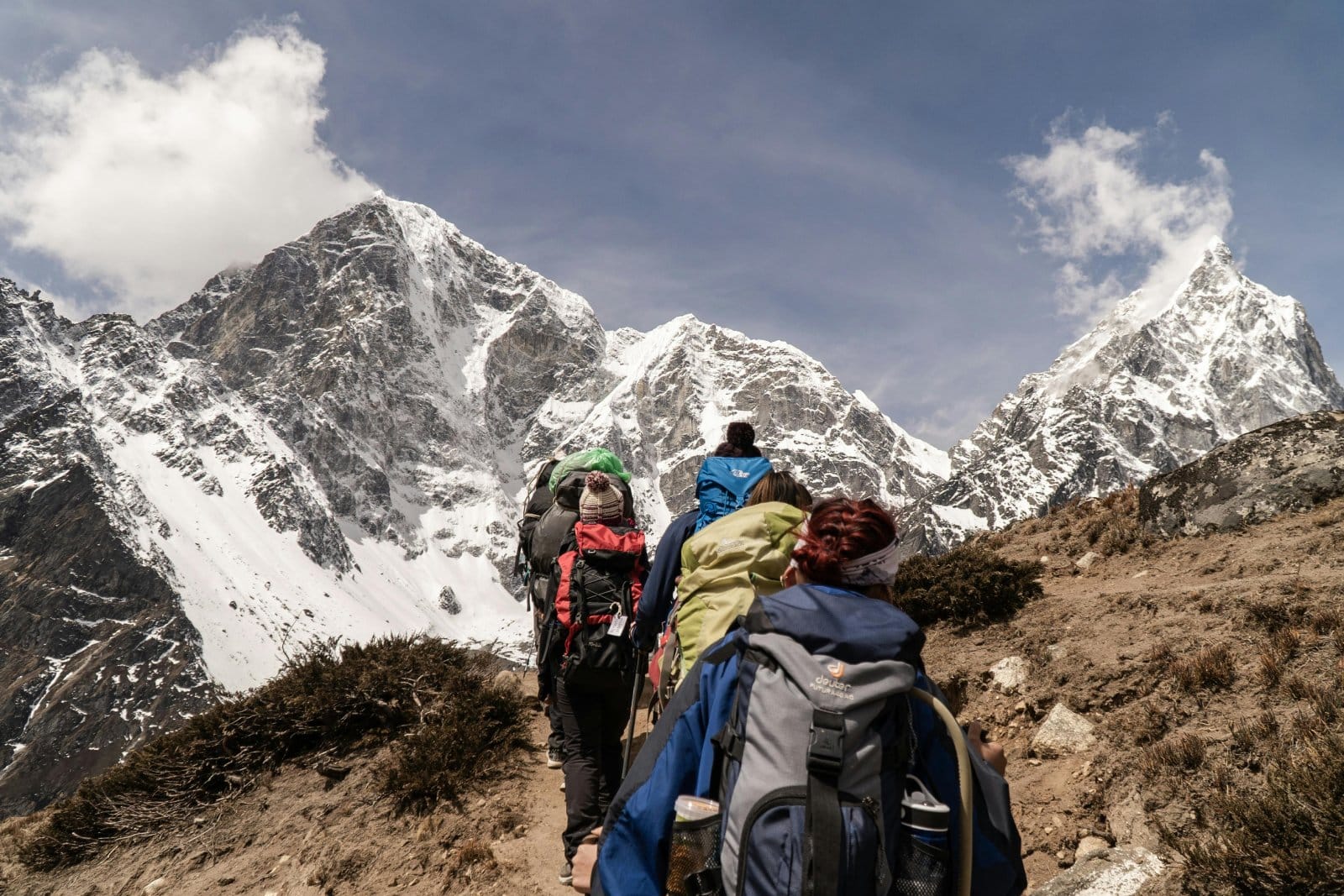
The Bottom Line
Trekking in Nepal is more than a physical journey; it explores some of the most majestic landscapes on Earth. Each destination offers its unique charm, from the world-renowned Everest Base Camp to the tranquil trails of Rara Lake. As you trek through these mountains, you’ll not only witness breathtaking vistas but also immerse yourself in the rich culture and hospitality of the Nepali people. Pack your bags, lace up your boots, and prepare for an adventure that will leave you with memories to last a lifetime.
More Articles Like This…
Barcelona: Discover the Top 10 Beach Clubs
2024 Global City Travel Guide – Your Passport to the World’s Top Destination Cities
Exploring Khao Yai 2024 – A Hidden Gem of Thailand
The post The 10 Best Treks in Nepal’s Majestic Mountains 2024 was republished on Passing Thru with permission from The Green Voyage .
Featured Image Credit: Shutterstock / Olga Danylenko.
For transparency, this content was partly developed with AI assistance and carefully curated by an experienced editor to be informative and ensure accuracy.
More for You
U.S. women’s track Olympians say photo was shocking but uniform isn’t
They got pregnant with 'Ozempic babies' and quit the drug cold turkey. Then came the side effects.
This Is How Long You Can Leave Butter On the Counter, According to Land O'Lakes
I Walked 20k Steps a Day for a Month. The Results Transformed Me
Pamela Anderson Joins Liam Neeson In Paramount's New ‘Naked Gun' Movie
McDonald's menu adds new takes on a fan-favorite sandwich
10 Noises Your Dog Makes—and What They Mean
How to digitize VHS tapes the cheap way
The Most Visited Attraction in Every US State
Joe Biden Is Now Beating Donald Trump With Republican Pollsters as Well
Is walking a good enough workout? This number of daily steps can reduce risk of dying
Dr Pepper Has a New Flavor Hitting Shelves Now
'Voted off the island': Inside Bill Belichick's failed job hunt
6 Places You Should Never Put a Home Security Camera
Beijing Half Marathon tainted by a shameful act of cheating
4 Things You Should Never Cook in Cast Iron
Pennsylvania school board cancels gay ‘30 Rock’ actor’s anti-bullying talk, citing his ‘lifestyle’
I Lost 50lbs With 3 Lifestyle Changes
Here’s How Long You Should Walk Every Day to Keep Your Heart Healthy
8 Shoes to Wear with Leggings This Spring That Aren’t Sneakers
- a. Send us an email
- b. Anonymous form
- Buyer's Guide
- Upcoming Products
- Tips / Contact Us
- Podcast Instagram Facebook Twitter Mastodon YouTube Notifications RSS Newsletter
When to Expect the Next Mac Pro to Launch
If you are considering buying a Mac Pro , you may be wondering when a new model will be released so that you can time your purchase accordingly. Below, we outline when to expect Apple's highest-end desktop computer to be updated next.

Mac Pro: Summary
- When was the current model released? June 2023
- When is the next model expected? Later in 2025, likely October-December
Mac Pro: What to Know
Apple last updated the Mac Pro with the M2 Ultra chip at WWDC in June 2023 , but the desktop tower's overall design remains unchanged since 2019.

Gurman said the new Mac Pro will be equipped with an M4 Ultra chip , which should offer significant CPU performance improvements over the M2 Ultra chip. The Mac Pro would also gain hardware-accelerated ray tracing for improved graphics rendering in games, a technology that was introduced with the M3 series of chips. In addition, M4 chips are rumored to have a faster and more efficient Neural Engine for AI tasks. Last, Gurman said the next Mac Pro could support up to 512GB of RAM, up from the current limit of 192GB.
No other major upgrades or design changes have been rumored for the next Mac Pro yet.
Gurman said Apple has internally tested an M3 Ultra chip, but he said it is "all but assured that at least some of Apple's high-end desktops" will skip the M3 chip series. So, the Mac Pro might jump from the M2 Ultra to the M4 Ultra.
MacRumors Buyer's Guide
Check out our MacRumors Buyer's Guide to keep track of when Macs and other Apple products were released, and when they are likely to be updated next.
Get weekly top MacRumors stories in your inbox.
Popular Stories

iOS 18 Will Add These New Features to Your iPhone

Game Boy Emulator for iPhone Now Available in App Store Following Rule Change [Removed]
Apple removes game boy emulator igba from app store due to spam and copyright violations.

NES Emulator for iPhone and iPad Now Available on App Store [Removed]

M4 Macs Are Expected to Launch in This Order Starting Later This Year
Apple's first ai features in ios 18 reportedly won't use cloud servers.

Best Buy Opens Up Sitewide Sale With Record Low Prices on M3 MacBook Air, iPad, and Much More
Next article.

Our comprehensive guide highlighting every major new addition in iOS 17, plus how-tos that walk you through using the new features.

App Store changes for the EU, new emoji, Podcasts transcripts, and more.

Get the most out your iPhone 15 with our complete guide to all the new features.
A deep dive into new features in macOS Sonoma, big and small.

Revamped models with OLED displays, M3 chip, and redesigned Magic Keyboard accessory.

Updated 10.9-inch model and new 12.9-inch model, M2 chip expected.

Apple's annual Worldwide Developers Conference will kick off with a keynote on June 10.

Expected to see new AI-focused features and more. Preview coming at WWDC in June with public release in September.
Other Stories

6 hours ago by MacRumors Staff

1 day ago by MacRumors Staff

2 days ago by MacRumors Staff

5 days ago by MacRumors Staff

Where is the Lyrid meteor shower visible? What to know and how to see it in Tennessee

Nashville didn't experience the solar eclipse in its totality , but another celestial event is set to happen in just a few days. This time, its visibility won't depend on your location.
The Lyrids meteor shower, one of the oldest known meteor showers, occurs during late April and can be seen around the world. According to NASA , the Lyrids are known for their fast and bright meteors, the meteors travel at a speed of 29 miles per second.
"In general, 10-20 Lyrid meteors can be seen per hour during their peak," said NASA. "Lyrids don’t tend to leave long, glowing dust trains behind them as they streak through the Earth's atmosphere, but they can produce the occasional bright flash called a fireball."
The meteor shower begins on April 15 and concludes on April 29, according to Earthsky.org , however their peak can be enjoyed between April 21 and April 22.
William Teets, director at the Vanderbilt Dyer Observatory, said Lyrid meteors appear to radiate from a point in the constellation Lyra, near the very bright star Vega. Since the Lyra constellation isn’t too far north or south, the Lyrids are visible during the nighttime hours for most of the globe.
Here's what else to know about the upcoming meteor shower.
What time will the Lyrids meteor shower be visible?
According to NASA, the Lyrids are best viewed in the Northern Hemisphere, the northern half of the Earth. After moonset and before dawn will be the best time to view the meteor shower.
"You’ll have your best chance of seeing Lyrids just before the glow of dawn begins to show because the radiant will be high above us and the Moon will be on its way to setting," said Teets.
For Tennesseans, peak viewing time would be around 4 a.m. to 5 a.m., said Teets.
More reasons to look up: With the 2024 eclipse over, when is the next celestial event?
How to best observe the Lyrids meteor shower?
According to Earthsky.org , a waxing gibbous moon will interfere with the Lyrids meteor shower. On April 22, the moon will be 50% illuminated, not yet a full moon.
"Unfortunately, the Moon is near full during the peak of the Lyrids this year, which means that it will not only be at its brightest to wash out meteors but it will also be up all night," said Teets.
However, that doesn't mean the meteor shower viewing experience will be hindered. Earthsky.org recommends avoiding city lights, locating a moon shadow and making your shower viewing experience as comfortable as possible with blankets, a lawn chair and comfortable clothing.
"Ensconced within a moon shadow, and far from the glow of city lights, the night all of a sudden darkens and can help you see more meteors," said Earthsky.org. "You can’t run from the moon, but you can sure hide from it."
Where do the Lyrid meteors come from?
Meteors come from leftover comet particles and broken asteroid bits. When comets come around the sun, they leave a dusty trail behind them, said NASA. The Earth passes through the debris trails annually which allows the bits to collide with our atmosphere where they disintegrate to create fiery, colorful streaks in the sky.
The pieces of space debris that interact with the Earth's atmosphere to create the Lyrids, originate from comet C/1861 G1 Thatcher. The comet was discovered on April 5, 1861, by A. E. Thatcher.
Diana Leyva covers trending news and service for The Tennessean. Contact her at [email protected] or follow her on X, the platform formerly known as Twitter at @_leyvadiana
- Covid Connect
- Entertainment
- Science&Tech
- Environment
PM extends best wishes on Bijaya Dashami festival
Icefall doctors finally open everest route, reach above camp i, hindus nationwide celebrate ram navami festival with fervor, armed with tht banner kami rita to scale everest for a record 29th time.
- Sudur Pashchim
Altitude sickness deaths on the rise in Mustang district
Rastriya samachar samiti.
KATHMANDU, APRIL 17
Altitude sickness is emerging as a growing concern among visitors in Mustang, the district famously known as the "district beyond the Himalayas" and home to the renowned Muktinath Temple, which annually attracts a large number of devotees primarily from Nepal and India.
Over the past seven months, 11 tourists, including three domestic visitors, have succumbed to high-altitude sickness in the district. The District Police Office of Mustang reports a total of 29 fatalities over the past three years, with 11 occurring in the last seven months alone.
Deputy Superintendent of Police Bhojraj Pandey stated that the recent casualties comprised seven Indians, three Nepalis, and one Ukrainian. In the fiscal year 2078-79 BS (2021-22), six visitors-five females and one male, all from India-died of altitude sickness, ranging in age from 45 to 73.
According to police records, these individuals experienced high altitude-related health complications in various locations including Marfa, Mesokando Pass Trek, Muktinath Temple premises, Gharpajhong, Jomsom Airport, Lete, Tukuche, and Yara.
Of the most recent fatalities, six occurred in the month of Chait (March-April), with victims aged between 35 and 83.
In the last fiscal year (2022-23), the district witnessed 12 deaths attributed to altitude sickness, with victims hailing from India (seven), Thailand (one), and Nepal (four), aged between 42 and 75.
Altitude sickness arises due to the body's inability to adjust to low oxygen levels at higher altitudes, typically occurring above 2500 meters. Symptoms include headache, nausea, vomiting, breathing difficulties, insomnia, loss of appetite, fatigue, weakness, among others.
NC objects to Gandaki Province assembly call
Next Article
- Privacy Policy
- Advertise With Us
© 2021 The Himalayan Times
'Family Guy' Season 22 Is Cancelling Christianity in Epic Time Travel Finale
Brian is using Stewie's time machine for nefarious purposes again.
The Big Picture
- Jesus returns in an epic time-travel finale for Family Guy Season 22.
- Brian falls for a religious woman and tries to go back in time to cancel Christianity so she'll sleep with him.
- The Family Guy finale promises the show's trademark offensive humor and some unexpected twists.
Our dear lord and savior returns to Family Guy in the Season 22 finale. At this point, Jesus has made so many appearances that he might just move in with The Griffins . It's been a while since he's appeared to clarify some things or respond when he's called upon, but tonight he returns in an epic time-travel episode. In an interview with TV Insider , showrunners Richard Appel and Alec Sulkin previewed the season finale, which airs tonight on Fox, and what Jesus has to do with it all.
This time around, he doesn't appear to the characters, and like when he was crucified all those millennia ago, he is seemingly innocent. His only crime is being associated with a religion that puts a damper on Brian's (voiced by Seth MacFarlane ) plans. In the "Faith No More" episode, the official episode synopsis (below) teases another one of Stewie (voiced by MacFarlane) and Brian's classic adventures.
"Brian becomes romantically interested in someone and it inspires him to use Stewie's time machine. Strange consequences result from their journey"
Brian Falls In Love With A Religious Woman
The dog is in love again. He falls in love with a devout vet technician (voiced by Mae Whitman ) and pretends to be religious himself to score with her. However, things don't play out in a neat rom-com manner, something Sulkin calls a mislead. "You go a little bit down a road with something that seems like it could be a Family Guy story, and then it turns into something else," he said.
What does a dog have to do to get frisky when his girlfriend has decided she's not having sex until marriage because she doesn't want to go to hell? For Brian, however, the answer is obvious. The dog will use Stewie's time travel tech . The goal? To cancel Christianity. How? By stopping Jesus before religion was invented and evolved to ruin his chances in the present. Stewie is not one to be left behind during a time-travel adventure, so the duo will jump back in time together.
They find themselves in medieval Israel circa A.D. 30, and they've already messed up. What can go wrong in a place and time they don't understand? And all this just so the dog can get lucky? The last time Jesus was on the show was in Episode 10 of Season 19, as Peter faced off with his mortal enemy: The Giant Chicken. It seems that we should be ready for another round of humor that will most definitely be deemed offensive , with Appel saying, “I never thought I’d hear myself say this as a writer, but the Standards and Practices department at Fox is easy to work with and pretty good with us.”
Catch the Family Guy Season 22 finale tonight on Fox. Stream past episodes on Hulu.
WATCH ON HULU

IMAGES
VIDEO
COMMENTS
The glorious post-monsoon period is the best time to visit Nepal weather-wise. Being high season, there's a great demand for accommodations. Prices leap, and hotels in Kathmandu get booked up. Be prepared to jostle for space on Nepal's classic trekking trails too. Similar to in spring, stick to the off-beat treks to avoid the crowds.
Here's our guide to the best times to visit Nepal for trekking, temple-hopping and more. The high season (October-November) is the time to trek in perfect weather Warm, dry weather and cloud-free skies make the October-November period the most popular time to visit Nepal, with ideal conditions for trekking and other outdoor thrills in the ...
The best time to visit Nepal is October through February. These months offer dry conditions, warm weather with lower humidity, and excellent opportunities to hike, climb, go on safari, and explore Nepal. Clear skies make a visit to Nepal so much more enjoyable, and with cooler conditions between October and February (a good portion of the dry ...
The best time to visit Nepal depends on what you plan to do while in the country. Fall/autumn and spring are the most popular times to visit for hikers, climbers and mountaineers. At this time, clear skies and pleasant temperatures create the ideal conditions for adventures in the mountains.
The best time to visit Nepal is from October to December as the weather is stunning during this period. The average temperature is 22℃ (72°F) by day and 12℃ (54°F) at night. Trekking, jungle safaris, and outdoor activities are all enjoyable during this period. Dashain is the most auspicious festival in October.
Spring and autumn are generally considered to be the best seasons to visit Nepal, since the weather tends to be moderate and stable, with clear skies. However, due to the complex nature of Nepal's geography and climate, there's a lot more to this. An ever-increasing number of travelers visit Nepal in winter and summer, and for good reason. With the right information, travel plan, and ...
Autumn in Nepal is undoubtedly the best time to visit Nepal for trekking and exploring the incredible Nepal Himalayas. With its pleasant weather, clear skies, and an abundance of trekking trails, there's no better time to lace up your hiking boots and embark on the adventure of a lifetime. Winter in Nepal (December-February): A Chilly Adventure
Best time to visit. The best time to visit Nepal is between October and December, when the skies are a clear blue and the views spectacular. The weather remains dry until about April, with temperatures varying between regions. January and February can be very cold, especially at night, with average temperatures of 43°F in Namche Bazaar.
Best time to visit. The best time to visit Nepal is between October and December, when the skies are a clear blue and the views spectacular. The weather remains dry until about April, with temperatures varying between regions. January and February can be very cold, especially at night, with average temperatures of 6°C in Namche Bazaar.
Shishir Ritu. Mid-January to Mid-March. Nepal Has Six Climatic Seasons. 1. Spring Season (March-May) In this season, the temperature is softly warm at low altitudes while moderate at higher altitudes. This is the best time to Visit Nepal if you want to explore the beauty of this beautiful country.
Nepal through the seasons. The best time to visit Nepal is during the months of October and November. The monsoon is over, which means magnificent, green, lush vegetation as well as clean air - the perfect time to explore the country in all its beauty, especially given the mild temperatures. This is also the time the views of the peaks of the ...
The best time to visit Nepal depends on your interests, preferences, and travel goals. However, the peak tourist season in Nepal is from September to November and from February to April. During these months, the weather is mild and dry, making it perfect for trekking, sightseeing, and other outdoor activities. ...
For adventure lovers wanting to trek and hike in Nepal, the autumn season (September to November) is heralded as the best time to visit Nepal followed by the months of spring (March to May). Autumn is the peak trekking and hiking season as all the trails feature blooming landscapes with highly active flora and fauna with easier weather ...
October to December is the best time to visit Nepal, as dry days make trekking easier and offer good visibility. Autumn (September-November) and spring (late February-mid-April) are also great seasons to trek in Nepal. Autumn brings exceptional clarity, the dust washed away by the monsoon, and spring days are warmer and longer.
Best time to visit Nepal. The best time to visit Nepal is pre- and post-monsoon (March to April and September to November), especially if you want to go trekking. Spring (March to May) is a particularly beautiful season as the rhododendrons are in bloom. That being said, there's still lots to do even in the off-season (not to mention a jam ...
The best time to visit Nepal is during Autumn with dry days, clear blue skies and great trekking conditions. Spring is also popular as the temperatures begin to rise, and the countryside looks even more spectacular. Find inspiration for your holiday to Nepal. Nepal weather & when to go
Best Time to Visit Nepal for Photography. Nepal is an ideal destination for those who enjoy photography. The best time to travel Nepal for photography is during Spring and Autumn when the weather is warm, skies are blue and sunny and clear visibility of snow-capped mountains. Visiting national parks and wild reserves to photo shoot wild animals ...
The Best Time to Visit Nepal & Experience the Culture. If culture is what you're after, then it's best to go in October or November which is festival season in Nepal. You can celebrate Dashain and Tihar during that period. Nepal uses a different calendar than we do, so it's hard to say the exact date since it changes every year.
The fall season is the best time to go trekking in Nepal. Fall is undoubtedly the best time to visit Nepal, with October being the most popular month. The weather conditions are stunning during this period. The skies are clear, and there is little to no rain. Pretty much all the trekking trails are open for business, including Everest Base Camp ...
The best time to travel to Nepal is in the Spring season. The temperature is better to travel to the upper hills due to the warm weather. The blossoming flowers and budding vegetation make the walking trails stunning and captivating. You can participate in the festivals, including Holi, Maha Shivratri, Chaite Dashain, Ram Navami, Buddha Jayanti ...
Best time to visit Nepal. Updated: 15th June 2021. Nepal is a year-round destination, however, as the weather changes throughout the year so might the way you choose to spend your time exploring the country. While the autumn and spring months are excellent for trekking with clear viewing conditions and mild temperatures, winter and summer are ...
September, October, and November are Nepal's Autumn season. During this time, the rain has ended, and the climate is temperate and cool. Autumn is a very pleasant time in Nepal. The clear skies ...
Monsoon Season. May through to August (and even mid-September) is not the best time to hike in Nepal. This is summertime which co-incides with the Monsoon rains. Temperatures are high, averaging between 27/29 °C (81/84 °F) reaching above 40 °C (104°F) in the lowlands. Moisture rises off the Indian oceans and condenses.
Best Time to Visit Nepal and Bhutan- Weather and Condition. When it comes to enjoying your vacation, the right weather conditions are crucial to make the best out of your getaway. Spring and autumn which are considered to be the best times to visit Nepal and Bhutan offer the most suitable climatic conditions for the guests.
Provided by Passing Thru Travel The 10 Best Treks in Nepal's Majestic Mountains 2024. Nestled between the towering peaks of the Himalayas, Nepal is a land of unparalleled natural beauty and a ...
One Of The Best Spy Shows Ever Made Lands On Netflix Today For The Very First Time. Tourists can visit the bunkers with simulated overhead bombings in an immersive experience as 51 aerial bombings ...
Best Buy this weekend has a big sale on Apple MacBooks and iPads, including new all-time low prices on the M3 MacBook Air, alongside the best prices we've ever seen on MacBook Pro, iPad, and more.
This time, its visibility won't depend on your location. The Lyrids meteor shower, one of the oldest known meteor showers, occurs during late April and can be seen around the world. According to ...
In the last fiscal year (2022-23), the district witnessed 12 deaths attributed to altitude sickness, with victims hailing from India (seven), Thailand (one), and Nepal (four), aged between 42 and 75.
Jesus returns in an epic time-travel finale for Family Guy Season 22. Brian falls for a religious woman and tries to go back in time to cancel Christianity so she'll sleep with him. The Family Guy ...